794 papers:
 CASE-2015-ChengTLCH #algorithm #modelling #network #optimisation
CASE-2015-ChengTLCH #algorithm #modelling #network #optimisation- Modeling and optimizing tensile strength and yield point on steel bar by artificial neural network with evolutionary algorithm (CKC, JTT, TTL, JHC, KSH), pp. 1562–1563.
 CASE-2015-LinYCLL #constraints #scheduling
CASE-2015-LinYCLL #constraints #scheduling- A master-axis-based feedrate scheduling with jerk constraints for five-axis tool center point trajectory (MTL, NTY, WTC, CYL, YML), pp. 111–116.
 CASE-2015-ZouLLJX #locality #online
CASE-2015-ZouLLJX #locality #online- A mutual information based online access point selection strategy for WiFi indoor localization (HZ, YL, XL, HJ, LX), pp. 180–185.
 DAC-2015-TziantzioulisGF #correlation #fault #float #integer #named
DAC-2015-TziantzioulisGF #correlation #fault #float #integer #named- b-HiVE: a bit-level history-based error model with value correlation for voltage-scaled integer and floating point units (GT, AMG, SMF, NH, SOM, SP), p. 6.
 DATE-2015-ChenKXMLYVSCY #algorithm #array #learning
DATE-2015-ChenKXMLYVSCY #algorithm #array #learning- Technology-design co-optimization of resistive cross-point array for accelerating learning algorithms on chip (PYC, DK, ZX, AM, BL, JY, SBKV, JsS, YC, SY), pp. 854–859.
 DATE-2015-HuangHC #algorithm #clustering #framework #multi #problem #scalability
DATE-2015-HuangHC #algorithm #clustering #framework #multi #problem #scalability- Clustering-based multi-touch algorithm framework for the tracking problem with a large number of points (SLH, SYH, CPC), pp. 719–724.
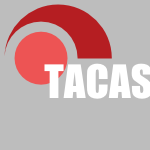 TACAS-2015-DanglLW #contest #float #recursion #source code
TACAS-2015-DanglLW #contest #float #recursion #source code- CPAchecker with Support for Recursive Programs and Floating-Point Arithmetic — (Competition Contribution) (MD, SL, PW), pp. 423–425.
 PLDI-2015-PanchekhaSWT #automation #float
PLDI-2015-PanchekhaSWT #automation #float- Automatically improving accuracy for floating point expressions (PP, ASS, JRW, ZT), pp. 1–11.
 ICALP-v1-2015-AronovK #algebra #diagrams #tool support
ICALP-v1-2015-AronovK #algebra #diagrams #tool support- Batched Point Location in SINR Diagrams via Algebraic Tools (BA, MJK), pp. 65–77.
 ICALP-v1-2015-HuangL #approximate #combinator #optimisation #probability #problem
ICALP-v1-2015-HuangL #approximate #combinator #optimisation #probability #problem- Approximating the Expected Values for Combinatorial Optimization Problems over Stochastic Points (LH, JL), pp. 910–921.
 ICALP-v1-2015-KarpinskiLS #set
ICALP-v1-2015-KarpinskiLS #set- A QPTAS for the Base of the Number of Crossing-Free Structures on a Planar Point Set (MK, AL, DS), pp. 785–796.
 ICALP-v2-2015-EtessamiSY #branch #equation #fixpoint #markov #polynomial #probability #process #reachability
ICALP-v2-2015-EtessamiSY #branch #equation #fixpoint #markov #polynomial #probability #process #reachability- Greatest Fixed Points of Probabilistic Min/Max Polynomial Equations, and Reachability for Branching Markov Decision Processes (KE, AS, MY), pp. 184–196.
 FM-2015-SolovyevJRG #estimation #fault #float
FM-2015-SolovyevJRG #estimation #fault #float- Rigorous Estimation of Floating-Point Round-off Errors with Symbolic Taylor Expansions (AS, CJ, ZR, GG), pp. 532–550.
 CHI-2015-HaqueNV #named #using
CHI-2015-HaqueNV #named #using- Myopoint: Pointing and Clicking Using Forearm Mounted Electromyography and Inertial Motion Sensors (FH, MN, DV), pp. 3653–3656.
 CHI-2015-Mayer0SH #modelling
CHI-2015-Mayer0SH #modelling- Modeling Distant Pointing for Compensating Systematic Displacements (SM, KW, SS, NH), pp. 4165–4168.
 CHI-2015-ShihLW #privacy #smarttech
CHI-2015-ShihLW #privacy #smarttech- Privacy Tipping Points in Smartphones Privacy Preferences (FS, IL, DJW), pp. 807–816.
 DHM-EH-2015-YamamotoOGKHBA #research
DHM-EH-2015-YamamotoOGKHBA #research- Research of Work Climate at Nursing Home — From Job Separation and Management Capability Point (AY, TO, AG, NK, HH, HCBJ, TA), pp. 512–523.
 HCI-DE-2015-NakatsujiYKT #towards
HCI-DE-2015-NakatsujiYKT #towards- Airway Cursor: A Pointing Technique Based on Direction of Mouse Movement Towards a Targets (TN, KY, IK, YT), pp. 396–404.
 HCI-IT-2015-HaraUO #smarttech
HCI-IT-2015-HaraUO #smarttech- Effect of Button Size and Location When Pointing with Index Finger on Smartwatch (KH, TU, NO), pp. 165–174.
 HCI-IT-2015-MurataMF #modelling #performance
HCI-IT-2015-MurataMF #modelling #performance- Effects of Target Shape and Display Location on Pointing Performance by Eye-Gaze Input System — Modeling of Pointing Time by Extended Fitts’ Law (AM, MM, DF), pp. 94–106.
 ICEIS-v3-2015-RiveroC #case study #evaluation #experience #user interface #using
ICEIS-v3-2015-RiveroC #case study #evaluation #experience #user interface #using- Using a Study to Assess User eXperience Evaluation Methods from the Point of View of Users (LR, TC), pp. 88–95.
 ICML-2015-FrostigGKS #algorithm #approximate #empirical #named #performance #probability
ICML-2015-FrostigGKS #algorithm #approximate #empirical #named #performance #probability- Un-regularizing: approximate proximal point and faster stochastic algorithms for empirical risk minimization (RF, RG, SK, AS), pp. 2540–2548.
 ICML-2015-LianHRLC #multi #predict #process
ICML-2015-LianHRLC #multi #predict #process- A Multitask Point Process Predictive Model (WL, RH, VR, JEL, LC), pp. 2030–2038.
 ICML-2015-MarietS #algorithm #fixpoint #learning #process
ICML-2015-MarietS #algorithm #fixpoint #learning #process- Fixed-point algorithms for learning determinantal point processes (ZM, SS), pp. 2389–2397.
 ICML-2015-SamoR #parametricity #process #scalability
ICML-2015-SamoR #parametricity #process #scalability- Scalable Nonparametric Bayesian Inference on Point Processes with Gaussian Processes (YLKS, SR), pp. 2227–2236.
 KDD-2015-MahdianSV #algorithm
KDD-2015-MahdianSV #algorithm- Algorithmic Cartography: Placing Points of Interest and Ads on Maps (MM, OS, SV), pp. 755–764.
 KDD-2015-ZhaoEHRL #named #predict #process #self #twitter
KDD-2015-ZhaoEHRL #named #predict #process #self #twitter- SEISMIC: A Self-Exciting Point Process Model for Predicting Tweet Popularity (QZ, MAE, HYH, AR, JL), pp. 1513–1522.
 MLDM-2015-TreechalongRW #clustering #using
MLDM-2015-TreechalongRW #clustering #using- Semi-Supervised Stream Clustering Using Labeled Data Points (KT, TR, KW), pp. 281–295.
 RecSys-2015-MojsilovicV #enterprise #perspective #recommendation
RecSys-2015-MojsilovicV #enterprise #perspective #recommendation- Assessing Expertise in the Enterprise: The Recommender Point of View (AM, KRV), p. 231.
 SIGIR-2015-LiCLPK #named #ranking #recommendation
SIGIR-2015-LiCLPK #named #ranking #recommendation- Rank-GeoFM: A Ranking based Geographical Factorization Method for Point of Interest Recommendation (XL, GC, XL, TANP, SK), pp. 433–442.
 SIGIR-2015-YaoSQWSH #recommendation #social #using
SIGIR-2015-YaoSQWSH #recommendation #social #using- Context-aware Point-of-Interest Recommendation Using Tensor Factorization with Social Regularization (LY, QZS, YQ, XW, AS, QH), pp. 1007–1010.
 SIGIR-2015-ZhangC #category theory #correlation #named #recommendation #social
SIGIR-2015-ZhangC #category theory #correlation #named #recommendation #social- GeoSoCa: Exploiting Geographical, Social and Categorical Correlations for Point-of-Interest Recommendations (JDZ, CYC), pp. 443–452.
 OOPSLA-2015-DietrichHS #analysis #java #points-to
OOPSLA-2015-DietrichHS #analysis #java #points-to- Giga-scale exhaustive points-to analysis for Java in under a minute (JD, NH, BS), pp. 535–551.
 OOPSLA-2015-LeeBZZVG #assessment #float #named #runtime
OOPSLA-2015-LeeBZZVG #assessment #float #named #runtime- RAIVE: runtime assessment of floating-point instability by vectorization (WCL, TB, YZ, XZ, KV, RG), pp. 623–638.
 SAC-2015-PedrosaTB
SAC-2015-PedrosaTB- Shape description based on bag of salience points (GVP, AJMT, CAZB), pp. 74–79.
 ICSE-v1-2015-ZouWXZSM #algorithm #detection #float #search-based
ICSE-v1-2015-ZouWXZSM #algorithm #detection #float #search-based- A Genetic Algorithm for Detecting Significant Floating-Point Inaccuracies (DZ, RW, YX, LZ, ZS, HM), pp. 529–539.
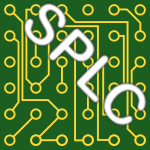 SPLC-2015-ColaLTQ #product line
SPLC-2015-ColaLTQ #product line- An MDE tool for defining software product families with explicit variation points (SDC, KKL, CMT, CQ), pp. 355–360.
 CC-2015-AllenSK #analysis #points-to #scalability #staged
CC-2015-AllenSK #analysis #points-to #scalability #staged- Staged Points-to Analysis for Large Code Bases (NA, BS, PK), pp. 131–150.
 CSL-2015-BaeldeDS #fixpoint
CSL-2015-BaeldeDS #fixpoint- Least and Greatest Fixed Points in Ludics (DB, AD, AS), pp. 549–566.
 ICST-2015-TokcanOT #automation #development #framework #multi #named #testing
ICST-2015-TokcanOT #automation #development #framework #multi #named #testing- MetTest: A Test Automation Framework for Development of a Point-To-Multipoint Radio (MDT, OO, HT), pp. 1–2.
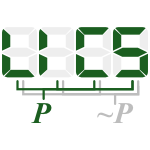 LICS-2015-CanavoiGLP #fixpoint #logic
LICS-2015-CanavoiGLP #fixpoint #logic- Defining Winning Strategies in Fixed-Point Logic (FC, EG, SL, WP), pp. 366–377.
 ASE-2014-RahimiC #automation
ASE-2014-RahimiC #automation- Personas in the middle: automated support for creating personas as focal points in feature gathering forums (MR, JCH), pp. 479–484.
 CASE-2014-CaoMDZ #detection #performance #visual notation
CASE-2014-CaoMDZ #detection #performance #visual notation- A gabor based fast interest point detector for image-based robot visual servo control (ZC, FM, JSD, JZ), pp. 883–888.
 CASE-2014-ChouW #image #locality
CASE-2014-ChouW #image #locality- 1-point affine RANSAC for scene image matching in appearance-based localization (CCC, CCW), pp. 1194–1199.
 DAC-2014-AlbalawiLL #algorithm #classification #design #fixpoint #implementation #machine learning #power management
DAC-2014-AlbalawiLL #algorithm #classification #design #fixpoint #implementation #machine learning #power management- Computer-Aided Design of Machine Learning Algorithm: Training Fixed-Point Classifier for On-Chip Low-Power Implementation (HA, YL, XL), p. 6.
 DAC-2014-DengBZW #performance
DAC-2014-DengBZW #performance- An Efficient Two-level DC Operating Points Finder for Transistor Circuits (JD, KB, YZ, NW), p. 6.
 DAC-2014-KrautzPAKPB #automation #float #verification
DAC-2014-KrautzPAKPB #automation #float #verification- Automatic Verification of Floating Point Units (UK, VP, AA, SK, SP, TB), p. 6.
 DATE-2014-LeeserMRW #effectiveness #float #reasoning
DATE-2014-LeeserMRW #effectiveness #float #reasoning- Make it real: Effective floating-point reasoning via exact arithmetic (ML, SM, JR, TW), pp. 1–4.
 DATE-2014-RaminiGGBFB #architecture #energy
DATE-2014-RaminiGGBFB #architecture #energy- Assessing the energy break-even point between an optical NoC architecture and an aggressive electronic baseline (LR, AG, PG, SB, HTF, DB), pp. 1–6.
 DATE-2014-SeylerSWSGT #network #self
DATE-2014-SeylerSWSGT #network #self- A self-propagating wakeup mechanism for point-to-point networks with partial network support (JRS, TS, JW, MS, MG, JT), pp. 1–6.
 VLDB-2014-JiangFWX #distance #network #query
VLDB-2014-JiangFWX #distance #network #query- Hop Doubling Label Indexing for Point-to-Point Distance Querying on Scale-Free Networks (MJ, AWCF, RCWW, YX), pp. 1203–1214.
 PLDI-2014-Schkufza0A #float #optimisation #precise #probability #source code
PLDI-2014-Schkufza0A #float #optimisation #precise #probability #source code- Stochastic optimization of floating-point programs with tunable precision (ES, RS, AA), p. 9.
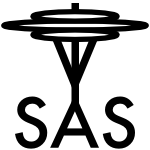 SAS-2014-ChakarovS #fixpoint #invariant #probability
SAS-2014-ChakarovS #fixpoint #invariant #probability- Expectation Invariants for Probabilistic Program Loops as Fixed Points (AC, SS), pp. 85–100.
 CHI-2014-GilliotCR
CHI-2014-GilliotCR- Impact of form factors and input conditions on absolute indirect-touch pointing tasks (JG, GC, NR), pp. 723–732.
 CHI-2014-ORourkeHBDP #education #game studies #persistent
CHI-2014-ORourkeHBDP #education #game studies #persistent- Brain points: a growth mindset incentive structure boosts persistence in an educational game (EO, KH, CB, CSD, ZP), pp. 3339–3348.
 CHI-2014-PasqualW #predict #using
CHI-2014-PasqualW #predict #using- Mouse pointing endpoint prediction using kinematic template matching (PTP, JOW), pp. 743–752.
 CHI-2014-PschetzYE #named
CHI-2014-PschetzYE #named- TurningPoint: narrative-driven presentation planning (LP, KY, DE), pp. 1591–1594.
 CSCW-2014-WongG #years after
CSCW-2014-WongG #years after- Support for deictic pointing in CVEs: still fragmented after all these years (NW, CG), pp. 1377–1387.
 DHM-2014-IkenoboKKTG #classification
DHM-2014-IkenoboKKTG #classification- The Classification Tendency and Common Denomination of the Points Paid Attention in Ikebana Instruction (YI, NK, NK, YT, AG), pp. 263–272.
 DUXU-DI-2014-BreyerVRK #named #precise
DUXU-DI-2014-BreyerVRK #named #precise- Scissors — A Precise Pointing Widget for Touch Screen Devices (FB, LAV, AR, JK), pp. 184–192.
 HCI-AS-2014-MoserF #branch #experience #feedback #game studies
HCI-AS-2014-MoserF #branch #experience #feedback #game studies- Narrative Control and Player Experience in Role Playing Games: Decision Points and Branching Narrative Feedback (CM, XF), pp. 622–633.
 HIMI-DE-2014-JungAK #interface #using #web
HIMI-DE-2014-JungAK #interface #using #web- A Map-Based Web Search Interface Using Point of Interest Aggregation (KJ, SCA, HK), pp. 342–351.
 HIMI-DE-2014-KobayashiS #corpus #topic
HIMI-DE-2014-KobayashiS #corpus #topic- Finding Division Points for Time-Series Corpus Based on Topic Changes (HK, RS), pp. 364–372.
 CIKM-2014-PaikO #fixpoint #query
CIKM-2014-PaikO #fixpoint #query- A Fixed-Point Method for Weighting Terms in Verbose Informational Queries (JHP, DWO), pp. 131–140.
 CIKM-2014-YuanCS #graph #recommendation
CIKM-2014-YuanCS #graph #recommendation- Graph-based Point-of-interest Recommendation with Geographical and Temporal Influences (QY, GC, AS), pp. 659–668.
 ICML-c1-2014-KhaleghiR #consistency #estimation
ICML-c1-2014-KhaleghiR #consistency #estimation- Asymptotically consistent estimation of the number of change points in highly dependent time series (AK, DR), pp. 539–547.
 ICML-c1-2014-MillerBAG #analysis #process
ICML-c1-2014-MillerBAG #analysis #process- Factorized Point Process Intensities: A Spatial Analysis of Professional Basketball (AM, LB, RPA, KG), pp. 235–243.
 ICML-c2-2014-AffandiFAT #kernel #learning #parametricity #process
ICML-c2-2014-AffandiFAT #kernel #learning #parametricity #process- Learning the Parameters of Determinantal Point Process Kernels (RHA, EBF, RPA, BT), pp. 1224–1232.
 ICML-c2-2014-DasL #automation #interactive
ICML-c2-2014-DasL #automation #interactive- Automated inference of point of view from user interactions in collective intelligence venues (SD, AL), pp. 82–90.
 ICML-c2-2014-LindermanA #network #process
ICML-c2-2014-LindermanA #network #process- Discovering Latent Network Structure in Point Process Data (SWL, RPA), pp. 1413–1421.
 ICML-c2-2014-YuKC #algorithm
ICML-c2-2014-YuKC #algorithm- Saddle Points and Accelerated Perceptron Algorithms (AWY, FKK, JGC), pp. 1827–1835.
 ICPR-2014-BhattacharyaGC #classification #estimation
ICPR-2014-BhattacharyaGC #classification #estimation- Test Point Specific k Estimation for kNN Classifier (GB, KG, ASC), pp. 1478–1483.
 ICPR-2014-FrinkenIIFU #recognition
ICPR-2014-FrinkenIIFU #recognition- Improving Point of View Scene Recognition by Considering Textual Data (VF, YI, RI, KF, SU), pp. 2966–2971.
 ICPR-2014-GarciaO #realtime
ICPR-2014-GarciaO #realtime- CPU-Based Real-Time Surface and Solid Voxelization for Incomplete Point Cloud (FG, BEO), pp. 2757–2762.
 ICPR-2014-HusainDT #random #using
ICPR-2014-HusainDT #random #using- Recognizing Point Clouds Using Conditional Random Fields (FH, BD, CT), pp. 4257–4262.
 ICPR-2014-LeNVOT #documentation #retrieval #using
ICPR-2014-LeNVOT #documentation #retrieval #using- Document Retrieval Based on Logo Spotting Using Key-Point Matching (VPL, NN, MV, JMO, CDT), pp. 3056–3061.
 ICPR-2014-LiCGW #hybrid #interactive #recognition #using
ICPR-2014-LiCGW #hybrid #interactive #recognition #using- A Hybrid Method for Human Interaction Recognition Using Spatio-temporal Interest Points (NL, XC, HG, ZW), pp. 2513–2518.
 ICPR-2014-MasselliZ #approach #geometry #performance #problem
ICPR-2014-MasselliZ #approach #geometry #performance #problem- A New Geometric Approach for Faster Solving the Perspective-Three-Point Problem (AM, AZ), pp. 2119–2124.
 ICPR-2014-QuLWXT #framework #robust #set
ICPR-2014-QuLWXT #framework #robust #set- Robust Point Set Matching under Variational Bayesian Framework (HBQ, JCL, JQW, LX, HJT), pp. 58–63.
 ICPR-2014-SantanaLH #geometry #identification #people #semantics
ICPR-2014-SantanaLH #geometry #identification #people #semantics- People Semantic Description and Re-identification from Point Cloud Geometry (MCS, JLN, DHS), pp. 4702–4707.
 ICPR-2014-SengerSMK #behaviour #multi #segmentation
ICPR-2014-SengerSMK #behaviour #multi #segmentation- Velocity-Based Multiple Change-Point Inference for Unsupervised Segmentation of Human Movement Behavior (LS, MS, JHM, EAK), pp. 4564–4569.
 ICPR-2014-XiaoHL #3d #estimation #re-engineering
ICPR-2014-XiaoHL #3d #estimation #re-engineering- 3D Face Reconstruction via Feature Point Depth Estimation and Shape Deformation (QX, LH, PL), pp. 2257–2262.
 ICPR-2014-YingWMYZ #problem #using
ICPR-2014-YingWMYZ #problem #using- The Perspective-3-Point Problem When Using a Planar Mirror (XY, GW, XM, SY, HZ), pp. 4033–4037.
 ICPR-2014-YuGZ #3d #recognition #using
ICPR-2014-YuGZ #3d #recognition #using- Face Recognition Using 3D Directional Corner Points (XY, YG, JZ), pp. 2802–2807.
 KDD-2014-GuSJWC #estimation #network #topic
KDD-2014-GuSJWC #estimation #network #topic- Topic-factorized ideal point estimation model for legislative voting network (YG, YS, NJ, BW, TC), pp. 183–192.
 KDD-2014-LianZXSCR #matrix #modelling #named #recommendation
KDD-2014-LianZXSCR #matrix #modelling #named #recommendation- GeoMF: joint geographical modeling and matrix factorization for point-of-interest recommendation (DL, CZ, XX, GS, EC, YR), pp. 831–840.
 KEOD-2014-Otero-CerdeiraR #named #ontology
KEOD-2014-Otero-CerdeiraR #named #ontology- OntoPhil — Exploitation of Binding Points for Ontology Matching (LOC, FJRM, TVR, AMGR), pp. 5–15.
 KEOD-2014-SurynekS #big data #challenge #graph #information management #logic #perspective #reasoning
KEOD-2014-SurynekS #big data #challenge #graph #information management #logic #perspective #reasoning- Theoretical Challenges in Knowledge Discovery in Big Data — A Logic Reasoning and a Graph Theoretical Point of View (PS, PS), pp. 327–332.
 SEKE-2014-SatapathyPR #agile #approach #estimation #kernel #using
SEKE-2014-SatapathyPR #agile #approach #estimation #kernel #using- Story Point Approach based Agile Software Effort Estimation using Various SVR Kernel Methods (SMS, AP, SKR), pp. 304–307.
 SEKE-2014-WanZWS #analysis #graph #performance #points-to
SEKE-2014-WanZWS #analysis #graph #performance #points-to- Efficient Points-To Analysis for Partial Call Graph Construction (ZW, BZ, YW, YS), pp. 416–421.
 ECOOP-2014-WeiR #analysis #behaviour #javascript #points-to
ECOOP-2014-WeiR #analysis #behaviour #javascript #points-to- State-Sensitive Points-to Analysis for the Dynamic Behavior of JavaScript Objects (SW, BGR), pp. 1–26.
 POPL-2014-Krebbers #axiom #c #nondeterminism #semantics #sequence
POPL-2014-Krebbers #axiom #c #nondeterminism #semantics #sequence- An operational and axiomatic semantics for non-determinism and sequence points in C (RK), pp. 101–112.
 RE-2014-AntonelliRLO #using
RE-2014-AntonelliRLO #using- Language Extended Lexicon points: Estimating the size of an application using its language (LA, GR, JCSdPL, AO), pp. 263–272.
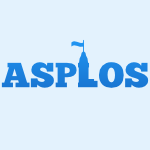 ASPLOS-2014-LuponGMSMSD #float #hardware #multi
ASPLOS-2014-LuponGMSMSD #float #hardware #multi- Speculative hardware/software co-designed floating-point multiply-add fusion (ML, EG, GM, SS, RM, KS, DRD), pp. 623–638.
 HPDC-2014-RajachandrasekarPVHWP #architecture #distributed #framework #named
HPDC-2014-RajachandrasekarPVHWP #architecture #distributed #framework #named- MIC-Check: a distributed check pointing framework for the intel many integrated cores architecture (RR, SP, AV, KH, MWuR, DKP), pp. 121–124.
 ISMM-2014-RatnakarN #analysis #constraints #graph #performance #points-to
ISMM-2014-RatnakarN #analysis #constraints #graph #performance #points-to- Push-pull constraint graph for efficient points-to analysis (BR, RN), pp. 25–33.
 PPoPP-2014-ChiangGRS #fault #float #performance
PPoPP-2014-ChiangGRS #fault #float #performance- Efficient search for inputs causing high floating-point errors (WFC, GG, ZR, AS), pp. 43–52.
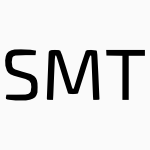 SMT-2014-Melquiond #algorithm #automation #float #verification
SMT-2014-Melquiond #algorithm #automation #float #verification- Automating the Verification of Floating-Point Algorithms (GM), p. 63.
 VMCAI-2014-Fu #abstract domain #analysis #java #points-to #scalability
VMCAI-2014-Fu #abstract domain #analysis #java #points-to #scalability- Modularly Combining Numeric Abstract Domains with Points-to Analysis, and a Scalable Static Numeric Analyzer for Java (ZF), pp. 282–301.
 VMCAI-2014-Romano #float #integer #testing
VMCAI-2014-Romano #float #integer #testing- Practical Floating-Point Tests with Integer Code (AR), pp. 337–356.
 ASE-2013-SumnerZ #analysis #execution #identification
ASE-2013-SumnerZ #analysis #execution #identification- Identifying execution points for dynamic analyses (WNS, XZ), pp. 81–91.
 CASE-2013-LanzaKPSS #analysis #automation #detection #fault #using
CASE-2013-LanzaKPSS #analysis #automation #detection #fault #using- Automated optical detection of particles and defects on a Li-Ion-cell surface using a single-point analysis (GL, AK, SP, AS, SS), pp. 675–680.
 DATE-2013-LeeVTS #design #energy #performance
DATE-2013-LeeVTS #design #energy #performance- Design of low energy, high performance synchronous and asynchronous 64-point FFT (WL, VSV, ART, KSS), pp. 242–247.
 DATE-2013-NovoAI #estimation #fault #fixpoint #invariant #linear #trade-off
DATE-2013-NovoAI #estimation #fault #fixpoint #invariant #linear #trade-off- Accuracy vs speed tradeoffs in the estimation of fixed-point errors on linear time-invariant systems (DN, SEA, PI), pp. 15–20.
 ICDAR-2013-DoTT #approach #recognition #representation
ICDAR-2013-DoTT #approach #recognition #representation- New Approach for Symbol Recognition Combining Shape Context of Interest Points with Sparse Representation (THD, ST, ORT), pp. 265–269.
 VLDB-2013-BoghSJ #approach #named #retrieval
VLDB-2013-BoghSJ #approach #named #retrieval- GroupFinder: A New Approach to Top-K Point-of-Interest Group Retrieval (KSB, AS, CSJ), pp. 1226–1229.
 VLDB-2013-FuWCW #distance #named #query
VLDB-2013-FuWCW #distance #named #query- IS-LABEL: an Independent-Set based Labeling Scheme for Point-to-Point Distance Querying (AWCF, HW, JC, RCWW), pp. 457–468.
 VLDB-2013-HassanzadehPYMPHH #web
VLDB-2013-HassanzadehPYMPHH #web- Discovering Linkage Points over Web Data (OH, KQP, SHY, RJM, LP, MAH, HH), pp. 444–456.
 PLDI-2013-KastrinisS #analysis #context-sensitive grammar #hybrid #points-to
PLDI-2013-KastrinisS #analysis #context-sensitive grammar #hybrid #points-to- Hybrid context-sensitivity for points-to analysis (GK, YS), pp. 423–434.
 PLDI-2013-LiangF #composition #verification
PLDI-2013-LiangF #composition #verification- Modular verification of linearizability with non-fixed linearization points (HL, XF), pp. 459–470.
 SAS-2013-BrainDGHK #float #source code #verification
SAS-2013-BrainDGHK #float #source code #verification- Interpolation-Based Verification of Floating-Point Programs with Abstract CDCL (MB, VD, AG, LH, DK), pp. 412–432.
 CHI-2013-BanovicGF #fault
CHI-2013-BanovicGF #fault- The effect of time-based cost of error in target-directed pointing tasks (NB, TG, GWF), pp. 1373–1382.
 CHI-2013-HeoL13a #estimation #multi
CHI-2013-HeoL13a #estimation #multi- Indirect shear force estimation for multi-point shear force operations (SH, GL), pp. 281–284.
 CHI-2013-JotaNDW #case study #how #latency #performance
CHI-2013-JotaNDW #case study #how #latency #performance- How fast is fast enough?: a study of the effects of latency in direct-touch pointing tasks (RJ, AN, PD, DW), pp. 2291–2300.
 CHI-2013-LanirSCG
CHI-2013-LanirSCG- Ownership and control of point of view in remote assistance (JL, RS, BC, PG), pp. 2243–2252.
 CHI-2013-LiuEY #authoring #named
CHI-2013-LiuEY #authoring #named- SidePoint: a peripheral knowledge panel for presentation slide authoring (YL, DE, KY), pp. 681–684.
 CHI-2013-NancelCPYIB #scalability #using
CHI-2013-NancelCPYIB #scalability #using- High-precision pointing on large wall displays using small handheld devices (MN, OC, EP, XDY, PPI, MBL), pp. 831–840.
 CHI-2013-SaliviaH #named
CHI-2013-SaliviaH #named- PointAssist: assisting individuals with motor impairments (GS, JPH), pp. 1213–1222.
 CHI-2013-TeatherS #3d
CHI-2013-TeatherS #3d- Pointing at 3d target projections with one-eyed and stereo cursors (RJT, WS), pp. 159–168.
 DHM-HB-2013-HuhK #estimation #image #using
DHM-HB-2013-HuhK #estimation #image #using- Human Pose Estimation from Depth Image Using Visibility Estimation and Key Points (SH, GK), pp. 333–342.
 DHM-HB-2013-MaruyamaKD #3d #simulation
DHM-HB-2013-MaruyamaKD #3d #simulation- Simulating a Walk of Digital Human Model Directly in Massive 3D Laser-Scanned Point Cloud of Indoor Environments (TM, SK, HD), pp. 366–375.
 DUXU-NTE-2013-FukatsuOKST #evaluation #mobile
DUXU-NTE-2013-FukatsuOKST #evaluation #mobile- Evaluation of Effects of Textures Attached to Mobile Devices on Pointing Accuracy (YF, TO, YK, BS, JT), pp. 255–263.
 HCI-IMT-2013-BraunFMSM #bound #gesture
HCI-IMT-2013-BraunFMSM #bound #gesture- Context-Based Bounding Volume Morphing in Pointing Gesture Application (AB, AF, AM, CS, MM), pp. 147–156.
 HCI-IMT-2013-CorbettYLHBN #3d #feedback
HCI-IMT-2013-CorbettYLHBN #3d #feedback- Influence of Haptic Feedback on a Pointing Task in a Haptically Enhanced 3D Virtual Environment (BC, TY, SL, LH, SB, CSN), pp. 561–567.
 HCI-IMT-2013-EbisawaF #detection #using #video
HCI-IMT-2013-EbisawaF #detection #using #video- Head-Free, Remote Gaze Detection System Based on Pupil-Corneal Reflection Method with Using Two Video Cameras — One-Point and Nonlinear Calibrations (YE, KF), pp. 205–214.
 HCI-IMT-2013-KarunanayakaSENG #interface
HCI-IMT-2013-KarunanayakaSENG #interface- Magnetic Field Based Near Surface Haptic and Pointing Interface (KK, SS, CPE, RN, GP), pp. 601–609.
 HCI-IMT-2013-MurataHO #estimation #interface
HCI-IMT-2013-MurataHO #estimation #interface- Proposal of Estimation Method of Stable Fixation Points for Eye-gaze Input Interface (AM, TH, KO), pp. 330–339.
 HCI-IMT-2013-PinoTIK #2d #3d #artificial reality #evaluation #performance #using
HCI-IMT-2013-PinoTIK #2d #3d #artificial reality #evaluation #performance #using- Using Kinect for 2D and 3D Pointing Tasks: Performance Evaluation (AP, ET, NI, GK), pp. 358–367.
 HCI-IMT-2013-SchwallerBL #gesture #human-computer
HCI-IMT-2013-SchwallerBL #gesture #human-computer- Two Handed Mid-Air Gestural HCI: Point + Command (MS, SB, DL), pp. 388–397.
 HCI-IMT-2013-YoshikawaMKST #using
HCI-IMT-2013-YoshikawaMKST #using- A Remote Pointing Technique Using Pull-out (TY, YM, TK, BS, JT), pp. 416–426.
 HIMI-HSM-2013-ZiefleKWH #perspective
HIMI-HSM-2013-ZiefleKWH #perspective- Acceptance of Telemedical Treatments — A Medical Professional Point of View (MZ, LK, WW, AH), pp. 325–334.
 OCSC-2013-JamiesonGHW #game studies #metaheuristic
OCSC-2013-JamiesonGHW #game studies #metaheuristic- Metaheuristic Entry Points for Harnessing Human Computation in Mainstream Games (PJ, LG, JH, AW), pp. 156–163.
 EDOC-2013-AlyCEM #interface #multi #named
EDOC-2013-AlyCEM #interface #multi #named- XPoints: Extension Interfaces for Multilayered Applications (MA, AC, SE, MM), pp. 237–246.
 CIKM-2013-LiuLAM #mining #personalisation #recommendation
CIKM-2013-LiuLAM #mining #personalisation #recommendation- Personalized point-of-interest recommendation by mining users’ preference transition (XL, YL, KA, CM), pp. 733–738.
 ICML-c1-2013-LiWWT #fixpoint
ICML-c1-2013-LiWWT #fixpoint- Fixed-Point Model For Structured Labeling (QL, JW, DPW, ZT), pp. 214–221.
 ICML-c2-2013-SohnZLL #learning
ICML-c2-2013-SohnZLL #learning- Learning and Selecting Features Jointly with Point-wise Gated Boltzmann Machines (KS, GZ, CL, HL), pp. 217–225.
 ICML-c3-2013-HockingRVB #detection #learning #using
ICML-c3-2013-HockingRVB #detection #learning #using- Learning Sparse Penalties for Change-point Detection using Max Margin Interval Regression (TH, GR, JPV, FRB), pp. 172–180.
 KDD-2013-LiuFYX #learning #recommendation
KDD-2013-LiuFYX #learning #recommendation- Learning geographical preferences for point-of-interest recommendation (BL, YF, ZY, HX), pp. 1043–1051.
 MLDM-2013-AmalamanER #detection #using
MLDM-2013-AmalamanER #detection #using- Using Turning Point Detection to Obtain Better Regression Trees (PKA, CFE, NJR), pp. 325–339.
 SIGIR-2013-YuanCMSM #recommendation
SIGIR-2013-YuanCMSM #recommendation- Time-aware point-of-interest recommendation (QY, GC, ZM, AS, NMT), pp. 363–372.
 OOPSLA-2013-BaoZ #detection #execution #float #on the fly #problem
OOPSLA-2013-BaoZ #detection #execution #float #on the fly #problem- On-the-fly detection of instability problems in floating-point program execution (TB, XZ), pp. 817–832.
 OOPSLA-2013-SmaragdakisBK #analysis #points-to #preprocessor
OOPSLA-2013-SmaragdakisBK #analysis #points-to #preprocessor- Set-based pre-processing for points-to analysis (YS, GB, GK), pp. 253–270.
 POPL-2013-BarrVLS #automation #detection #exception #float
POPL-2013-BarrVLS #automation #detection #exception #float- Automatic detection of floating-point exceptions (ETB, TV, VL, ZS), pp. 549–560.
 SAC-2013-CiraciV #code generation #points-to
SAC-2013-CiraciV #code generation #points-to- Exploiting points-to maps for de-/serialization code generation (SC, OV), pp. 1712–1719.
 ICSE-2013-HassanA #data flow #multi
ICSE-2013-HassanA #data flow #multi- Comparing multi-point stride coverage and dataflow coverage (MMH, JHA), pp. 172–181.
 ICSE-2013-StaplesKKLAMJB #specification
ICSE-2013-StaplesKKLAMJB #specification- Formal specifications better than function points for code sizing (MS, RK, GK, CL, JA, TCM, DRJ, LB), pp. 1257–1260.
 CC-2013-KastrinisS #analysis #effectiveness #exception #java #performance #points-to
CC-2013-KastrinisS #analysis #effectiveness #exception #java #performance #points-to- Efficient and Effective Handling of Exceptions in Java Points-to Analysis (GK, YS), pp. 41–60.
 CC-2013-LuSXX #analysis #incremental #points-to
CC-2013-LuSXX #analysis #incremental #points-to- An Incremental Points-to Analysis with CFL-Reachability (YL, LS, XX, JX), pp. 61–81.
 CSL-2013-GallianiH #fixpoint #logic
CSL-2013-GallianiH #fixpoint #logic- Inclusion Logic and Fixed Point Logic (PG, LH), pp. 281–295.
 ICST-2013-BagnaraCGG #float #generative #source code #testing
ICST-2013-BagnaraCGG #float #generative #source code #testing- Symbolic Path-Oriented Test Data Generation for Floating-Point Programs (RB, MC, RG, AG), pp. 1–10.
 LICS-2013-AndersonDH #fixpoint #linear #logic #programming
LICS-2013-AndersonDH #fixpoint #linear #logic #programming- Maximum Matching and Linear Programming in Fixed-Point Logic with Counting (MA, AD, BH), pp. 173–182.
 LICS-2013-BirkedalM #fixpoint #recursion #type system
LICS-2013-BirkedalM #fixpoint #recursion #type system- Intensional Type Theory with Guarded Recursive Types qua Fixed Points on Universes (LB, REM), pp. 213–222.
 ASE-2012-IbrahimGHA #ambiguity #analysis #kernel #operating system #points-to #using
ASE-2012-IbrahimGHA #ambiguity #analysis #kernel #operating system #points-to #using- Supporting operating system kernel data disambiguation using points-to analysis (ASI, JG, JHHH, MA), pp. 234–237.
 ASE-2012-Shang0X #analysis #experience #incremental #performance #points-to #precise #summary
ASE-2012-Shang0X #analysis #experience #incremental #performance #points-to #precise #summary- Fast and precise points-to analysis with incremental CFL-reachability summarisation: preliminary experience (LS, YL, JX), pp. 270–273.
 CASE-2012-CaoZF #approach #mobile #search-based
CASE-2012-CaoZF #approach #mobile #search-based- Point stabilization of mobile robots by genetic sliding mode approach with neural dynamics model on uneven surface (ZC, YZ, YF), pp. 1150–1155.
 CASE-2012-FrankHEFDV #automation #modelling #realtime #requirements #using
CASE-2012-FrankHEFDV #automation #modelling #realtime #requirements #using- Using contact points to integrate discipline spanning real-time requirements in modeling Networked Automation Systems for manufacturing systems (TF, TH, KE, AF, CD, BVH), pp. 851–856.
 CASE-2012-ParkYJCCKR #automation #flexibility
CASE-2012-ParkYJCCKR #automation #flexibility- A point-of-care test equipment for flexible laboratory automation (JP, WSY, SMJ, HRC, WKC, JK, SR), pp. 821–822.
 CASE-2012-YaqubGK #fault #multi
CASE-2012-YaqubGK #fault #multi- Impact characterization of multiple-points-defect on machine fault diagnosis (MFY, IG, JK), pp. 479–484.
 DAC-2012-WangDX #architecture
DAC-2012-WangDX #architecture- Point and discard: a hard-error-tolerant architecture for non-volatile last level caches (JW, XD, YX), pp. 253–258.
 VLDB-2012-TaliusDDK #fault #query #transaction
VLDB-2012-TaliusDDK #fault #query #transaction- Transaction Log Based Application Error Recovery and Point In-Time Query (TT, RD, AD, HK), pp. 1781–1789.
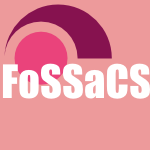 FoSSaCS-2012-AdamekMMS #algebra
FoSSaCS-2012-AdamekMMS #algebra- Well-Pointed Coalgebras (Extended Abstract) (JA, SM, LSM, LS), pp. 89–103.
 ICSM-2012-TangWZL #detection #maintenance
ICSM-2012-TangWZL #detection #maintenance- Time-leverage point detection for time sensitive software maintenance (ET, LW, JZ, XL), pp. 567–570.
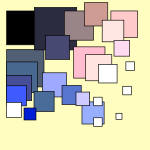 SCAM-2012-GutzmannLL #analysis #framework #points-to
SCAM-2012-GutzmannLL #analysis #framework #points-to- Collections Frameworks for Points-To Analysis (TG, JL, WL), pp. 4–13.
 PLDI-2012-BenzHH #float #problem #program analysis
PLDI-2012-BenzHH #float #problem #program analysis- A dynamic program analysis to find floating-point accuracy problems (FB, AH, SH), pp. 453–462.
 STOC-2012-ODonnellW #game studies #np-hard
STOC-2012-ODonnellW #game studies #np-hard- A new point of NP-hardness for unique games (RO, JW), pp. 289–306.
 CHI-2012-DixonFW #analysis #interface #using #visual notation
CHI-2012-DixonFW #analysis #interface #using #visual notation- A general-purpose target-aware pointing enhancement using pixel-level analysis of graphical interfaces (MD, JF, JOW), pp. 3167–3176.
 CHI-2012-EvansW #behaviour #metric
CHI-2012-EvansW #behaviour #metric- Taming wild behavior: the input observer for text entry and mouse pointing measures from everyday computer use (AE, JOW), pp. 1947–1956.
 CHI-2012-GajosRH #metric #performance
CHI-2012-GajosRH #metric #performance- Accurate measurements of pointing performance from in situ observations (KG, KR, CH), pp. 3157–3166.
 CHI-2012-HarrisonHHH
CHI-2012-HarrisonHHH- Unlocking the expressivity of point lights (CH, JH, GH, SEH), pp. 1683–1692.
 CHI-2012-HourcadeB #how #visual notation
CHI-2012-HourcadeB #how #visual notation- How small can you go?: analyzing the effect of visual angle in pointing tasks (JPH, NEBR), pp. 213–216.
 CHI-2012-HuangWB #web
CHI-2012-HuangWB #web- User see, user point: gaze and cursor alignment in web search (JH, RW, GB), pp. 1341–1350.
 CHI-2012-ZhangZF #2d
CHI-2012-ZhangZF #2d- Extending Fitts’ law to account for the effects of movement direction on 2d pointing (XZ, HZ, WF), pp. 3185–3194.
 ICEIS-J-2012-PolasikGWKPT12a #empirical #mobile #performance
ICEIS-J-2012-PolasikGWKPT12a #empirical #mobile #performance- Time Efficiency of Point-of-Sale Payment Methods: Empirical Results for Cash, Cards and Mobile Payments (MP, JG, GW, JK, KP, NT), pp. 306–320.
 ICPR-2012-AotoTSMY #estimation #using
ICPR-2012-AotoTSMY #estimation #using- Position estimation of near point light sources using a clear hollow sphere (TA, TT, TS, YM, NY), pp. 3721–3724.
 ICPR-2012-BoresB #monitoring #process
ICPR-2012-BoresB #monitoring #process- Urban traffic monitoring from aerial LIDAR data with a Two-Level Marked Point Process model (AB, CB), pp. 1379–1382.
 ICPR-2012-CalvetGC
ICPR-2012-CalvetGC- Camera tracking based on circular point factorization (LC, PG, VC), pp. 2128–2131.
 ICPR-2012-DaveDG #question
ICPR-2012-DaveDG #question- Do humans fixate on interest points? (AD, RD, BG), pp. 2784–2787.
 ICPR-2012-FrouzeshPH #modelling #optimisation
ICPR-2012-FrouzeshPH #modelling #optimisation- A combined method for finding best starting points for optimisation in bernoulli mixture models (FF, SP, YH), pp. 1128–1131.
 ICPR-2012-GerogiannisNL #detection #image #performance
ICPR-2012-GerogiannisNL #detection #image #performance- Fast and efficient vanishing point detection in indoor images (DG, CN, AL), pp. 3244–3247.
 ICPR-2012-HiradeY #learning #predict
ICPR-2012-HiradeY #learning #predict- Ensemble learning for change-point prediction (RH, TY), pp. 1860–1863.
 ICPR-2012-LiJ #estimation
ICPR-2012-LiJ #estimation- Vanishing point estimation by spherical gradient (SL, HJ), pp. 902–905.
 ICPR-2012-LoWCC #3d #estimation #locality #people
ICPR-2012-LoWCC #3d #estimation #locality #people- Acceleration of vanishing point-based line sampling scheme for people localization and height estimation via 3D line sampling (KHL, CJW, JHC, HTC), pp. 2788–2791.
 ICPR-2012-LozesEL #3d
ICPR-2012-LozesEL #3d- Nonlocal processing of 3D colored point clouds (FL, AE, OL), pp. 1968–1971.
 ICPR-2012-NakajimaMHMNYHY
ICPR-2012-NakajimaMHMNYHY- Point cloud transport (HN, YM, HH, IM, MN, HY, HH, YY), pp. 3803–3806.
 ICPR-2012-NurunnabiBW #3d #multi #robust #segmentation
ICPR-2012-NurunnabiBW #3d #multi #robust #segmentation- Robust segmentation for multiple planar surface extraction in laser scanning 3D point cloud data (AN, DB, GAWW), pp. 1367–1370.
 ICPR-2012-OumerP #3d #estimation #image #using
ICPR-2012-OumerP #3d #estimation #image #using- 3D point tracking and pose estimation of a space object using stereo images (NWO, GP), pp. 796–800.
 ICPR-2012-SvarmSEO #image #using
ICPR-2012-SvarmSEO #image #using- Point track creation in unordered image collections using Gomory-Hu trees (LS, ZS, OE, CO), pp. 2116–2119.
 ICPR-2012-UkitaMH #re-engineering
ICPR-2012-UkitaMH #re-engineering- Shape reconstruction with globally-optimized surface point selection (NU, KM, NH), pp. 1501–1504.
 ICPR-2012-VitaladevuniCPN #detection #documentation #image #using
ICPR-2012-VitaladevuniCPN #detection #documentation #image #using- Detecting near-duplicate document images using interest point matching (SNPV, FC, RP, PN), pp. 347–350.
 ICPR-2012-YuL #3d #refinement
ICPR-2012-YuL #3d #refinement- Genus refinement of a manifold surface reconstructed by sculpting the 3d-Delaunay triangulation of Structure-from-Motion points (SY, ML), pp. 1021–1025.
 KDD-2012-KimLX #image #multi #predict #process #using #web
KDD-2012-KimLX #image #multi #predict #process #using #web- Web image prediction using multivariate point processes (GK, FFL, EPX), pp. 1068–1076.
 KDD-2012-MarchCG #algorithm #correlation #performance
KDD-2012-MarchCG #algorithm #correlation #performance- Fast algorithms for comprehensive n-point correlation estimates (WBM, AJC, AGG), pp. 1478–1486.
 MLDM-2012-ForczmanskiF #classification #distance #representation
MLDM-2012-ForczmanskiF #classification #distance #representation- Classification of Elementary Stamp Shapes by Means of Reduced Point Distance Histogram Representation (PF, DF), pp. 603–616.
 SIGIR-2012-KatoOT #adaptation #retrieval
SIGIR-2012-KatoOT #adaptation #retrieval- Content-based retrieval for heterogeneous domains: domain adaptation by relative aggregation points (MPK, HO, KT), pp. 811–820.
 SIGIR-2012-RaeMPB #mining #web
SIGIR-2012-RaeMPB #mining #web- Mining the web for points of interest (AR, VM, AP, HB), pp. 711–720.
 ECOOP-2012-OstlundW #multi
ECOOP-2012-OstlundW #multi- Multiple Aggregate Entry Points for Ownership Types (JÖ, TW), pp. 156–180.
 ECOOP-2012-SridharanDCST #analysis #correlation #javascript #points-to
ECOOP-2012-SridharanDCST #analysis #correlation #javascript #points-to- Correlation Tracking for Points-To Analysis of JavaScript (MS, JD, SC, MS, FT), pp. 435–458.
 PPDP-2012-FilipiukNN #fixpoint #logic
PPDP-2012-FilipiukNN #fixpoint #logic- Layered fixed point logic (PF, FN, HRN), pp. 45–54.
 QAPL-2012-GazeauMP #analysis #float #robust #source code
QAPL-2012-GazeauMP #analysis #float #robust #source code- A non-local method for robustness analysis of floating point programs (IG, DM, CP), pp. 63–76.
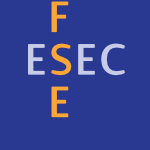 FSE-2012-MirakhorliMC #design pattern #variability
FSE-2012-MirakhorliMC #design pattern #variability- Variability points and design pattern usage in architectural tactics (MM, PM, JCH), p. 52.
 CC-2012-PuttaN #analysis #parallel #points-to
CC-2012-PuttaN #analysis #parallel #points-to- Parallel Replication-Based Points-To Analysis (SP, RN), pp. 61–80.
 CGO-2012-ShangXX #analysis #on-demand #points-to
CGO-2012-ShangXX #analysis #on-demand #points-to- On-demand dynamic summary-based points-to analysis (LS, XX, JX), pp. 264–274.
 ISMM-2012-Nasre #analysis #constraints #graph #performance #points-to
ISMM-2012-Nasre #analysis #constraints #graph #performance #points-to- Exploiting the structure of the constraint graph for efficient points-to analysis (RN), pp. 121–132.
 PPoPP-2012-Mendez-LojoBP #analysis #gpu #implementation #points-to
PPoPP-2012-Mendez-LojoBP #analysis #gpu #implementation #points-to- A GPU implementation of inclusion-based points-to analysis (MML, MB, KP), pp. 107–116.
 ICST-2012-DanH #analysis #comparison #float #mutation testing #semantics
ICST-2012-DanH #analysis #comparison #float #mutation testing #semantics- Semantic Mutation Analysis of Floating-Point Comparison (HD, RMH), pp. 290–299.
 ICST-2012-PonsiniMR #abstract interpretation #analysis #constraints #float #programming #source code
ICST-2012-PonsiniMR #abstract interpretation #analysis #constraints #float #programming #source code- Combining Constraint Programming and Abstract Interpretation for Value Analysis of Floating-point Programs (OP, CM, MR), pp. 775–776.
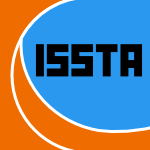 ISSTA-2012-AlkhalafCFBOK #analysis #consistency #difference #named #nondeterminism #string #validation
ISSTA-2012-AlkhalafCFBOK #analysis #consistency #difference #named #nondeterminism #string #validation- ViewPoints: differential string analysis for discovering client- and server-side input validation inconsistencies (MA, SRC, MF, TB, AO, CK), pp. 56–66.
 LICS-2012-BaeldeN #deduction #fixpoint #logic
LICS-2012-BaeldeN #deduction #fixpoint #logic- Combining Deduction Modulo and Logics of Fixed-Point Definitions (DB, GN), pp. 105–114.
 SMT-2012-ConchonMRI #axiom #float #smt
SMT-2012-ConchonMRI #axiom #float #smt- Built-in Treatment of an Axiomatic Floating-Point Theory for SMT Solvers (SC, GM, CR, MI), pp. 12–21.
 DATE-2011-AsadiniaMTS #using
DATE-2011-AsadiniaMTS #using- Supporting non-contiguous processor allocation in mesh-based CMPs using virtual point-to-point links (MA, MM, AT, HSA), pp. 413–418.
 DATE-2011-BoosNSHHGKS #analysis
DATE-2011-BoosNSHHGKS #analysis- Strategies for initial sizing and operating point analysis of analog circuits (VB, JN, MS, SH, SH, HG, DK, RS), pp. 1672–1674.
 DATE-2011-XuDJX #design
DATE-2011-XuDJX #design- Design implications of memristor-based RRAM cross-point structures (CX, XD, NPJ, YX), pp. 734–739.
 ICDAR-2011-DuAL #detection #performance
ICDAR-2011-DuAL #detection #performance- Dot Text Detection Based on FAST Points (YD, HA, SL), pp. 435–439.
 ICDAR-2011-YinHSN #detection #documentation #robust
ICDAR-2011-YinHSN #detection #documentation #robust- Robust Vanishing Point Detection for MobileCam-Based Documents (XCY, HWH, JS, SN), pp. 136–140.
 VLDB-2011-YanZN #algorithm #network #performance
VLDB-2011-YanZN #algorithm #network #performance- Efficient Algorithms for Finding Optimal Meeting Point on Road Networks (DY, ZZ, WN), pp. 968–979.
 ICPC-2011-FabryKD #named #scalability #visualisation
ICPC-2011-FabryKD #named #scalability #visualisation- AspectMaps: A Scalable Visualization of Join Point Shadows (JF, AK, SD), pp. 121–130.
 ICPC-2011-SteinH #aspect-oriented #comparison #constraints #empirical #visual notation
ICPC-2011-SteinH #aspect-oriented #comparison #constraints #empirical #visual notation- Comparison of a Visual and a Textual Notation to Express Data Constraints in Aspect-Oriented Join Point Selections: A Controlled Experiment (DS, SH), pp. 141–150.
 FM-2011-DerrickSW #verification
FM-2011-DerrickSW #verification- Verifying Linearisability with Potential Linearisation Points (JD, GS, HW), pp. 323–337.
 ICFP-2011-HinzeJ #category theory #fixpoint #proving
ICFP-2011-HinzeJ #category theory #fixpoint #proving- Proving the unique fixed-point principle correct: an adventure with category theory (RH, DWHJ), pp. 359–371.
 CHI-2011-BlanchO #benchmark #metric #paradigm
CHI-2011-BlanchO #benchmark #metric #paradigm- Benchmarking pointing techniques with distractors: adding a density factor to Fitts’ pointing paradigm (RB, MO), pp. 1629–1638.
 CHI-2011-BragdonK #gesture #scalability
CHI-2011-BragdonK #gesture #scalability- Gesture select: : acquiring remote targets on large displays without pointing (AB, HSK), pp. 187–196.
 CHI-2011-DijkstraPV #flexibility #performance
CHI-2011-DijkstraPV #flexibility #performance- Evaluating effects of structural holds on pointing and dragging performance with flexible displays (RD, CP, RV), pp. 1293–1302.
 CHI-2011-HuotCD #named
CHI-2011-HuotCD #named- TorusDesktop: pointing via the backdoor is sometimes shorter (SH, OC, PD), pp. 829–838.
 CHI-2011-MartinRB #comprehension #interactive #modelling
CHI-2011-MartinRB #comprehension #interactive #modelling- Client TouchPoint modeling: understanding client interactions in the context of service delivery (AMM, YAR, JB), pp. 979–982.
 CHI-2011-QuinnCRD #cost analysis #multi #on the
CHI-2011-QuinnCRD #cost analysis #multi #on the- On the costs of multiple trajectory pointing methods (PQ, AC, KJR, JD), pp. 859–862.
 CHI-2011-WobbrockJS #2d #fault #modelling #predict
CHI-2011-WobbrockJS #2d #fault #modelling #predict- Modeling and predicting pointing errors in two dimensions (JOW, AJ, KS), pp. 1653–1656.
 CHI-2011-WobbrockSJ #design #empirical #metric #modelling #throughput
CHI-2011-WobbrockSJ #design #empirical #metric #modelling #throughput- The effects of task dimensionality, endpoint deviation, throughput calculation, and experiment design on pointing measures and models (JOW, KS, AJ), pp. 1639–1648.
 CHI-2011-XinBR #empirical #interactive
CHI-2011-XinBR #empirical #interactive- Acquiring and pointing: an empirical study of pen-tilt-based interaction (YX, XB, XR), pp. 849–858.
 DHM-2011-NeumannD #empirical #visual notation
DHM-2011-NeumannD #empirical #visual notation- The Two-Point Visual Control Model of Steering — New Empirical Evidence (HN, BD), pp. 493–502.
 DHM-2011-RupprechtHB #automation
DHM-2011-RupprechtHB #automation- Automatic Face Feature Points Extraction (DR, SH, RB), pp. 186–194.
 HCI-ITE-2011-AngeliniCCKM #gesture #interactive #multi #scalability #using
HCI-ITE-2011-AngeliniCCKM #gesture #interactive #multi #scalability #using- Multi-user Pointing and Gesture Interaction for Large Screen Using Infrared Emitters and Accelerometers (LA, MC, SC, OAK, EM), pp. 185–193.
 HCI-ITE-2011-IkeYYMSYS #evaluation #user interface
HCI-ITE-2011-IkeYYMSYS #evaluation #user interface- Evaluation of User Support of a Hemispherical Sub-display with GUI Pointing Functions (SI, SY, YY, NM, KS, TY, HS), pp. 436–445.
 HCI-ITE-2011-TangTLCLL #gesture #low cost
HCI-ITE-2011-TangTLCLL #gesture #low cost- Virtual Mouse: A Low Cost Proximity-Based Gestural Pointing Device (SKT, WCT, WWL, KCC, STL, YPL), pp. 491–499.
 HCI-MIIE-2011-GaoG #mobile #representation
HCI-MIIE-2011-GaoG #mobile #representation- The Effect of Time Orientation and Representation of Points of Interests on the Use of Mobile Tour Guide (FG, QG), pp. 59–68.
 HIMI-v1-2011-MikiHY #visualisation
HIMI-v1-2011-MikiHY #visualisation- Methods for Service Sciences from Visualization Points (HM, NH, SY), pp. 231–238.
 ICEIS-v4-2011-LiuZZ #web
ICEIS-v4-2011-LiuZZ #web- Profit Point of Web 2.0 (JL, ZZ, JZ), pp. 132–136.
 ICML-2011-KuleszaT #named #process
ICML-2011-KuleszaT #named #process- k-DPPs: Fixed-Size Determinantal Point Processes (AK, BT), pp. 1193–1200.
 ICML-2011-Potetz #linear #problem #using
ICML-2011-Potetz #linear #problem #using- Estimating the Bayes Point Using Linear Knapsack Problems (BP), pp. 257–264.
 KEOD-2011-HmidaCBN #3d #approach #detection #ontology #semantics
KEOD-2011-HmidaCBN #3d #approach #detection #ontology #semantics- From 3D Point Clouds to Semantic Objects — An Ontology-based Detection Approach (HBH, CC, FB, CN), pp. 255–260.
 SIGIR-2011-YangGU #clustering #identification #self
SIGIR-2011-YangGU #clustering #identification #self- Identifying points of interest by self-tuning clustering (YY, ZG, LHU), pp. 883–892.
 SIGIR-2011-YeYLL #collaboration #recommendation
SIGIR-2011-YeYLL #collaboration #recommendation- Exploiting geographical influence for collaborative point-of-interest recommendation (MY, PY, WCL, DLL), pp. 325–334.
 POPL-2011-LhotakC #analysis #performance #points-to
POPL-2011-LhotakC #analysis #performance #points-to- Points-to analysis with efficient strong updates (OL, KCAC), pp. 3–16.
 SAC-2011-GutzmannLL #analysis #points-to
SAC-2011-GutzmannLL #analysis #points-to- Feedback-driven points-to analysis (TG, JL, WL), pp. 1341–1342.
 SAC-2011-VenkateshGBC #fixpoint #implementation #markov #modelling #recognition #speech #using
SAC-2011-VenkateshGBC #fixpoint #implementation #markov #modelling #recognition #speech #using- Fixed-point implementation of isolated sub-word level speech recognition using hidden Markov models (NV, RG, RB, MGC), pp. 368–373.
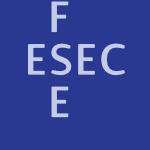 ESEC-FSE-2011-InostrozaTB #aspect-oriented #composition #interface #reasoning #source code
ESEC-FSE-2011-InostrozaTB #aspect-oriented #composition #interface #reasoning #source code- Join point interfaces for modular reasoning in aspect-oriented programs (MI, ÉT, EB), pp. 508–511.
 ESEC-FSE-2011-LiCK #analysis #performance #points-to #using
ESEC-FSE-2011-LiCK #analysis #performance #points-to #using- Boosting the performance of flow-sensitive points-to analysis using value flow (LL, CC, NK), pp. 343–353.
 CC-2011-SunZC #analysis #java #points-to #probability
CC-2011-SunZC #analysis #java #points-to #probability- Probabilistic Points-to Analysis for Java (QS, JZ, YC), pp. 62–81.
 CGO-2011-NasreG #analysis #constraints #evaluation #performance #points-to
CGO-2011-NasreG #analysis #constraints #evaluation #performance #points-to- Prioritizing constraint evaluation for efficient points-to analysis (RN, RG), pp. 267–276.
 CAV-2011-HoderBM #constraints #fixpoint #named #performance
CAV-2011-HoderBM #constraints #fixpoint #named #performance- μZ — An Efficient Engine for Fixed Points with Constraints (KH, NB, LMdM), pp. 457–462.
 ISSTA-2011-XiaoZ #analysis #encoding #geometry #java #performance #points-to
ISSTA-2011-XiaoZ #analysis #encoding #geometry #java #performance #points-to- Geometric encoding: forging the high performance context sensitive points-to analysis for Java (XX, CZ), pp. 188–198.
 CASE-2010-MaFW #re-engineering
CASE-2010-MaFW #re-engineering- Delaunay-based triangular surface reconstruction from points via Umbrella Facet Matching (JM, HYF, LW), pp. 580–585.
 CASE-2010-RuZSZSHC #automation #metric
CASE-2010-RuZSZSHC #automation #metric- Automated four-point probe measurement of nanowires inside a scanning electron microscope (CR, YZ, YS, YZ, XS, DH, IC), pp. 533–538.
 DATE-2010-RitheGWDGBC #analysis #logic #statistics
DATE-2010-RitheGWDGBC #analysis #logic #statistics- Non-linear Operating Point Statistical Analysis for Local Variations in logic timing at low voltage (RR, JG, AW, SD, GG, DB, AC), pp. 965–968.
 VLDB-2010-SettyBBW #identification #named
VLDB-2010-SettyBBW #identification #named- InZeit: Efficiently Identifying Insightful Time Points (VS, SJB, KB, GW), pp. 1605–1608.
 VLDB-2011-LeeH10 #clustering #named #performance #using
VLDB-2011-LeeH10 #clustering #named #performance #using- QSkycube: Efficient Skycube Computation using Point-Based Space Partitioning (JL, SwH), pp. 185–196.
 PLDI-2010-Loitsch #float #integer
PLDI-2010-Loitsch #float #integer- Printing floating-point numbers quickly and accurately with integers (FL), pp. 233–243.
 SAS-2010-Chapoutot #abstract domain #float
SAS-2010-Chapoutot #abstract domain #float- Interval Slopes as a Numerical Abstract Domain for Floating-Point Variables (AC), pp. 184–200.
 SAS-2010-NasreG #analysis #equation #linear #points-to
SAS-2010-NasreG #analysis #equation #linear #points-to- Points-to Analysis as a System of Linear Equations (RN, RG), pp. 422–438.
 SEFM-2010-KatzK #query #refinement #specification
SEFM-2010-KatzK #query #refinement #specification- User Queries for Specification Refinement Treating Shared Aspect Join Points (EK, SK), pp. 73–82.
 CHI-2010-CaoVI #hybrid #performance
CHI-2010-CaoVI #hybrid #performance- Comparing user performance with single-finger, whole-hand, and hybrid pointing devices (XC, NV, SI), pp. 1643–1646.
 CHI-2010-ChoKJSS #distance #interface #proximity #query
CHI-2010-ChoKJSS #distance #interface #proximity #query- Dynamic query interface for spatial proximity query with degree-of-interest varied by distance to query point (MC, BHK, DKJ, YGS, JS), pp. 693–702.
 CHI-2010-HolzB #how
CHI-2010-HolzB #how- The generalized perceived input point model and how to double touch accuracy by extracting fingerprints (CH, PB), pp. 581–590.
 CHI-2010-HourcadeNPD
CHI-2010-HourcadeNPD- Pointassist for older adults: analyzing sub-movement characteristics to aid in pointing tasks (JPH, CMN, KBP, NLD), pp. 1115–1124.
 CHI-2010-MoffattM #fault #named
CHI-2010-MoffattM #fault #named- Steadied-bubbles: combining techniques to address pen-based pointing errors for younger and older adults (KM, JM), pp. 1125–1134.
 CHI-2010-WongG
CHI-2010-WongG- Where are you pointing?: the accuracy of deictic pointing in CVEs (NW, CG), pp. 1029–1038.
 CHI-2010-YangX #2d #bias #towards
CHI-2010-YangX #2d #bias #towards- Bias towards regular configuration in 2D pointing (HY, XX), pp. 1391–1400.
 CHI-2010-ZhangRZ #modelling
CHI-2010-ZhangRZ #modelling- Modeling dwell-based eye pointing target acquisition (XZ, XR, HZ), pp. 2083–2092.
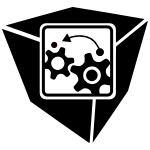 SOFTVIS-2010-ChengTWH #animation #automation #debugging #named
SOFTVIS-2010-ChengTWH #animation #automation #debugging #named- xDIVA: automatic animation between debugging break points (YPC, HYT, CSW, CHH), pp. 221–222.
 CIKM-2010-DuGZC #ranking #summary
CIKM-2010-DuGZC #ranking #summary- Manifold ranking with sink points for update summarization (PD, JG, JZ, XC), pp. 1757–1760.
 ICML-2010-SaatciTR #modelling #process
ICML-2010-SaatciTR #modelling #process- Gaussian Process Change Point Models (YS, RDT, CER), pp. 927–934.
 ICML-2010-Scherrer #difference #fixpoint #perspective
ICML-2010-Scherrer #difference #fixpoint #perspective- Should one compute the Temporal Difference fix point or minimize the Bellman Residual? The unified oblique projection view (BS), pp. 959–966.
 ICPR-2010-BenedekDZ #detection #image #process
ICPR-2010-BenedekDZ #detection #image #process- Building Detection in a Single Remotely Sensed Image with a Point Process of Rectangles (CB, XD, JZ), pp. 1417–1420.
 ICPR-2010-BhatBSS #sequence #transitive #video #visual notation #word
ICPR-2010-BhatBSS #sequence #transitive #video #visual notation #word- Transitive Closure Based Visual Words for Point Matching in Video Sequence (KKSB, MOB, GS, FS), pp. 3300–3303.
 ICPR-2010-ConteFPTV #detection #people
ICPR-2010-ConteFPTV #detection #people- Counting Moving People in Videos by Salient Points Detection (DC, PF, GP, FT, MV), pp. 1743–1746.
 ICPR-2010-HanerG #visual notation
ICPR-2010-HanerG #visual notation- Combining Foreground / Background Feature Points and Anisotropic Mean Shift For Enhanced Visual Object Tracking (SH, IYHG), pp. 3488–3491.
 ICPR-2010-HuCY #estimation #interactive
ICPR-2010-HuCY #estimation #interactive- Hand Pointing Estimation for Human Computer Interaction Based on Two Orthogonal-Views (KH, SJC, LY), pp. 3760–3763.
 ICPR-2010-IwahoriIWKFK #performance
ICPR-2010-IwahoriIWKFK #performance- Extending Fast Marching Method under Point Light Source Illumination and Perspective Projection (YI, KI, RJW, HK, SF, KK), pp. 1650–1653.
 ICPR-2010-JeffersAH
ICPR-2010-JeffersAH- Entropy of Feature Point-Based Retina Templates (JJ, AA, KJH), pp. 213–216.
 ICPR-2010-KloihoferK
ICPR-2010-KloihoferK- Interest Point Based Tracking (WK, MK), pp. 3549–3552.
 ICPR-2010-KootstraBK #segmentation #symmetry #using
ICPR-2010-KootstraBK #segmentation #symmetry #using- Using Symmetry to Select Fixation Points for Segmentation (GK, NB, DK), pp. 3894–3897.
 ICPR-2010-LefakisWGS #detection
ICPR-2010-LefakisWGS #detection- Boosted Edge Orientation Histograms for Grasping Point Detection (LL, HW, MPGT, LS), pp. 4072–4076.
 ICPR-2010-LiuLH #learning #multi #representation #using
ICPR-2010-LiuLH #learning #multi #representation #using- Semi-supervised Trajectory Learning Using a Multi-Scale Key Point Based Trajectory Representation (YL, XL, WH), pp. 3525–3528.
 ICPR-2010-NordbergZ #2d #geometry #image #multi #segmentation #using
ICPR-2010-NordbergZ #2d #geometry #image #multi #segmentation #using- Multibody Motion Segmentation Using the Geometry of 6 Points in 2D Images (KN, VZ), pp. 1783–1787.
 ICPR-2010-PaivaT #detection #image #using
ICPR-2010-PaivaT #detection #image #using- Detection of Salient Image Points Using Principal Subspace Manifold Structure (ARCP, TT), pp. 1389–1392.
 ICPR-2010-ParkKS #detection #markov #modelling #recognition #using #visual notation
ICPR-2010-ParkKS #detection #markov #modelling #recognition #using #visual notation- Visual Recognition of Types of Structural Corridor Landmarks Using Vanishing Points Detection and Hidden Markov Models (YP, SSK, IHS), pp. 3292–3295.
 ICPR-2010-RodolaAT #approach #game studies #multi #robust
ICPR-2010-RodolaAT #approach #game studies #multi #robust- A Game-Theoretic Approach to Robust Selection of Multi-view Point Correspondence (ER, AA, AT), pp. 57–60.
 ICPR-2010-SeverskyY #3d #detection #scalability #set
ICPR-2010-SeverskyY #3d #detection #scalability #set- Scalable Cage-Driven Feature Detection and Shape Correspondence for 3D Point Sets (LMS, LY), pp. 3557–3560.
 ICPR-2010-SuS #predict #process
ICPR-2010-SuS #predict #process- Latent Fingerprint Core Point Prediction Based on Gaussian Processes (CS, SNS), pp. 1634–1637.
 ICPR-2010-SuZSH #2d #detection #image
ICPR-2010-SuZSH #2d #detection #image- Detection of Shapes in 2D Point Clouds Generated from Images (JS, ZZ, AS, FH), pp. 2640–2643.
 ICPR-2010-TamakiTURK #3d #image
ICPR-2010-TamakiTURK #3d #image- Scale Matching of 3D Point Clouds by Finding Keyscales with Spin Images (TT, ST, YU, BR, KK), pp. 3480–3483.
 ICPR-2010-Temerinac-OttKB #evaluation
ICPR-2010-Temerinac-OttKB #evaluation- Evaluation of a New Point Clouds Registration Method Based on Group Averaging Features (MTO, MK, HB), pp. 2452–2455.
 ICPR-2010-WeiXZ
ICPR-2010-WeiXZ- Calibration Method for Line Structured Light Vision Sensor Based on Vanish Points and Lines (ZW, MX, GZ), pp. 794–797.
 ICPR-2010-ZhangK #analysis #bound
ICPR-2010-ZhangK #analysis #bound- Weighted Boundary Points for Shape Analysis (JZ, RK), pp. 1598–1601.
 ICPR-2010-ZhangW10a #modelling #random #validation
ICPR-2010-ZhangW10a #modelling #random #validation- LLN-based Model-Driven Validation of Data Points for Random Sample Consensus Methods (LZ, DW), pp. 3436–3439.
 ICPR-2010-ZhouPD #3d #automation
ICPR-2010-ZhouPD #3d #automation- 3D Active Shape Model for Automatic Facial Landmark Location Trained with Automatically Generated Landmark Points (DZ, DPD, BD), pp. 3801–3805.
 KDIR-2010-OzekiKT #analysis #multi #network
KDIR-2010-OzekiKT #analysis #multi #network- Multi-modal Analysis of Complex Network — Point Stimulus Response Depending on Its Location in the Network (TO, TK, YT), pp. 226–231.
 MoDELS-v1-2010-GronnigerRR #diagrams #process #semantics #towards
MoDELS-v1-2010-GronnigerRR #diagrams #process #semantics #towards- Towards a Semantics of Activity Diagrams with Semantic Variation Points (HG, DR, BR), pp. 331–345.
 OOPSLA-2010-Mendez-LojoMP #analysis #parallel #points-to
OOPSLA-2010-Mendez-LojoMP #analysis #parallel #points-to- Parallel inclusion-based points-to analysis (MML, AM, KP), pp. 428–443.
 OOPSLA-2010-RajanKR #composition #concurrent #design pattern
OOPSLA-2010-RajanKR #composition #concurrent #design pattern- Concurrency by modularity: design patterns, a case in point (HR, SMK, WR), pp. 790–805.
 GPCE-2010-RysselPK #automation #identification #modelling
GPCE-2010-RysselPK #automation #identification #modelling- Automatic variation-point identification in function-block-based models (UR, JP, KK), pp. 23–32.
 SAC-2010-BaeAVNB #algorithm #performance #search-based
SAC-2010-BaeAVNB #algorithm #performance #search-based- Convex onion peeling genetic algorithm: an efficient solution to map labeling of point-feature (WDB, SA, PV, SN, KYB), pp. 892–899.
 SAC-2010-BechikhSG #mobile #multi #optimisation #using
SAC-2010-BechikhSG #mobile #multi #optimisation #using- Searching for knee regions in multi-objective optimization using mobile reference points (SB, LBS, KG), pp. 1118–1125.
 FSE-2010-EpifaniGT #black box #detection
FSE-2010-EpifaniGT #black box #detection- Change-point detection for black-box services (IE, CG, GT), pp. 227–236.
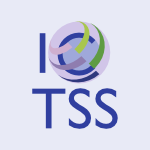 ICTSS-2010-LakhotiaTHH #constraints #execution #float #named #search-based #symbolic computation #theorem proving
ICTSS-2010-LakhotiaTHH #constraints #execution #float #named #search-based #symbolic computation #theorem proving- FloPSy — Search-Based Floating Point Constraint Solving for Symbolic Execution (KL, NT, MH, JdH), pp. 142–157.
 IJCAR-2010-AyadM #float #multi #source code #verification
IJCAR-2010-AyadM #float #multi #source code #verification- Multi-Prover Verification of Floating-Point Programs (AA, CM), pp. 127–141.
 ISSTA-2010-GodefroidK #float #memory management #program analysis #proving #safety
ISSTA-2010-GodefroidK #float #memory management #program analysis #proving #safety- Proving memory safety of floating-point computations by combining static and dynamic program analysis (PG, JK), pp. 1–12.
 ISSTA-2010-TangBLS #analysis #float #statistics
ISSTA-2010-TangBLS #analysis #float #statistics- Perturbing numerical calculations for statistical analysis of floating-point program (in)stability (ET, ETB, XL, ZS), pp. 131–142.
 LICS-2010-EndrullisHK #combinator #composition #fixpoint
LICS-2010-EndrullisHK #combinator #composition #fixpoint- Modular Construction of Fixed Point Combinators and Clocked Bohm Trees (JE, DH, JWK), pp. 111–119.
 LICS-2010-Grohe #fixpoint #graph #polynomial
LICS-2010-Grohe #fixpoint #graph #polynomial- Fixed-Point Definability and Polynomial Time on Graphs with Excluded Minors (MG), pp. 179–188.
 SAT-2010-Kottler #satisfiability
SAT-2010-Kottler #satisfiability- SAT Solving with Reference Points (SK), pp. 143–157.
 CASE-2009-MakkapatiN #detection
CASE-2009-MakkapatiN #detection- Clump splitting based on detection of dominant points from contours (VM, SKN), pp. 197–201.
 DAC-2009-VillenaS #automation #modelling #multi #named
DAC-2009-VillenaS #automation #modelling #multi #named- ARMS — automatic residue-minimization based sampling for multi-point modeling techniques (JFV, LMS), pp. 951–956.
 DATE-2009-DSilvaK #detection #fixpoint #multi
DATE-2009-DSilvaK #detection #fixpoint #multi- Fixed points for multi-cycle path detection (VD, DK), pp. 1710–1715.
 DATE-2009-GuntoroG #flexibility #float
DATE-2009-GuntoroG #flexibility #float- A flexible floating-point wavelet transform and wavelet packet processor (AG, MG), pp. 1314–1319.
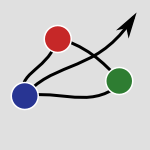 HT-2009-MitchellM #authoring #design #hypermedia #multi #tool support
HT-2009-MitchellM #authoring #design #hypermedia #multi #tool support- Designing hypertext tools to facilitate authoring multiple points-of-view stories (AM, KM), pp. 309–316.
 ICDAR-2009-WangBT #automation #documentation #image
ICDAR-2009-WangBT #automation #documentation #image- Automatic Corresponding Control Points Selection for Historical Document Image Registration (JW, MSB, CLT), pp. 1176–1180.
 SCAM-2009-GutzmannKLL #analysis #points-to #towards
SCAM-2009-GutzmannKLL #analysis #points-to #towards- Towards Comparing and Combining Points-to Analyses (TG, AK, JL, WL), pp. 45–54.
 PLDI-2009-TorreMP #calculus #fixpoint #recursion #source code #using
PLDI-2009-TorreMP #calculus #fixpoint #recursion #source code #using- Analyzing recursive programs using a fixed-point calculus (SLT, PM, GP), pp. 211–222.
 STOC-2009-KannanN #linear #programming #random
STOC-2009-KannanN #linear #programming #random- Random walks on polytopes and an affine interior point method for linear programming (RK, HN), pp. 561–570.
 ICFP-2009-YakushevHLJ #data type #fixpoint #programming #recursion
ICFP-2009-YakushevHLJ #data type #fixpoint #programming #recursion- Generic programming with fixed points for mutually recursive datatypes (ARY, SH, AL, JJ), pp. 233–244.
 CHI-2009-BlanchO #concurrent #performance
CHI-2009-BlanchO #concurrent #performance- Rake cursor: improving pointing performance with concurrent input channels (RB, MO), pp. 1415–1418.
 CHI-2009-FeketeEG #named #using
CHI-2009-FeketeEG #named #using- Motion-pointing: target selection using elliptical motions (JDF, NE, YG), pp. 289–298.
 CHI-2009-Ljungblad #what
CHI-2009-Ljungblad #what- Passive photography from a creative perspective: “If I would just shoot the same thing for seven days, it’s like... What’s the point?” (SL), pp. 829–838.
 HCD-2009-Nishiguchi #people #user interface
HCD-2009-Nishiguchi #people #user interface- Support Method for Improving the Ability of People with Cerebral Palsy to Efficiently Point a Mouse at Objects on a GUI Screen (HN), pp. 531–537.
 HCI-AUII-2009-HongE #multi
HCI-AUII-2009-HongE #multi- Point and Control: The Intuitive Method to Control Multi-device with Single Remote Control (SSH, JIE), pp. 416–422.
 HCI-AUII-2009-SongPJPKJ #effectiveness #human-computer #interactive #multi #using
HCI-AUII-2009-SongPJPKJ #effectiveness #human-computer #interactive #multi #using- Multi-pointing Method Using a Desk Lamp and Single Camera for Effective Human-Computer Interaction (TS, TCP, SJ, JHP, KHK, JWJ), pp. 520–525.
 HCI-NIMT-2009-HuangK #gesture #interactive
HCI-NIMT-2009-HuangK #gesture #interactive- Interactive Demonstration of Pointing Gestures for Virtual Trainers (YH, MK), pp. 178–187.
 HIMI-II-2009-FujiokaAO #evaluation #performance #user interface
HIMI-II-2009-FujiokaAO #evaluation #performance #user interface- Evaluation of Pointing Efficiency on Small Screen Touch User Interfaces (RF, TA, HO), pp. 375–384.
 ICEIS-J-2009-StruskaP #named #testing
ICEIS-J-2009-StruskaP #named #testing- BORM-points: Introduction and Results of Practical Testing (ZS, RP), pp. 590–599.
 SIGIR-2009-GongO #ambiguity #clustering #web
SIGIR-2009-GongO #ambiguity #clustering #web- Selecting hierarchical clustering cut points for web person-name disambiguation (JG, DWO), pp. 778–779.
 ECOOP-2009-XuRS #alias #analysis #points-to #scalability #using
ECOOP-2009-XuRS #alias #analysis #points-to #scalability #using- Scaling CFL-Reachability-Based Points-To Analysis Using Context-Sensitive Must-Not-Alias Analysis (G(X, AR, MS), pp. 98–122.
 OOPSLA-2009-BravenboerS #analysis #declarative #points-to #specification #strict
OOPSLA-2009-BravenboerS #analysis #declarative #points-to #specification #strict- Strictly declarative specification of sophisticated points-to analyses (MB, YS), pp. 243–262.
 TOOLS-EUROPE-2009-StrickerHS #constraints #design #diagrams #uml #using
TOOLS-EUROPE-2009-StrickerHS #constraints #design #diagrams #uml #using- Designing Design Constraints in the UML Using Join Point Designation Diagrams (VS, SH, DS), pp. 57–76.
 GPCE-2009-Sadat-MohtashamH #transaction
GPCE-2009-Sadat-MohtashamH #transaction- Transactional pointcuts: designation reification and advice of interrelated join points (SHSM, HJH), pp. 35–44.
 PPDP-2009-Aranda-LopezNSS #constraints #database #deduction #fixpoint #implementation #semantics
PPDP-2009-Aranda-LopezNSS #constraints #database #deduction #fixpoint #implementation #semantics- Implementing a fixed point semantics for a constraint deductive database based on hereditary harrop formulas (GAL, SN, FSP, JSH), pp. 117–128.
 RE-2009-OmoronyiaSRFW #case study #developer #navigation #source code #traceability
RE-2009-OmoronyiaSRFW #case study #developer #navigation #source code #traceability- Use Case to Source Code Traceability: The Developer Navigation View Point (IO, GS, MR, JDF, MW), pp. 237–242.
 SAC-2009-JangC #analysis #javascript #points-to
SAC-2009-JangC #analysis #javascript #points-to- Points-to analysis for JavaScript (DJ, KMC), pp. 1930–1937.
 SAC-2009-ShellD #precise #simulation
SAC-2009-ShellD #precise #simulation- Precise generalized contact point and normal determination for rigid body simulation (DAS, ED), pp. 2107–2108.
 SAC-2009-TokoroTT #smarttech #using
SAC-2009-TokoroTT #smarttech #using- A pointing method using two accelerometers for wearable computing (YT, TT, MT), pp. 136–141.
 ASPLOS-2009-SidiroglouLPVNK #automation #named #self #using
ASPLOS-2009-SidiroglouLPVNK #automation #named #self #using- ASSURE: automatic software self-healing using rescue points (SS, OL, CP, NV, JN, ADK), pp. 37–48.
 CADE-2009-Rinard #proving #reasoning
CADE-2009-Rinard #proving #reasoning- Integrated Reasoning and Proof Choice Point Selection in the Jahob System — Mechanisms for Program Survival (MCR), pp. 1–16.
 CAV-2009-BjornerH #fixpoint #functional #linear
CAV-2009-BjornerH #fixpoint #functional #linear- Linear Functional Fixed-points (NB, JH), pp. 124–139.
 CAV-2009-Monniaux #float #linear #on the #using
CAV-2009-Monniaux #float #linear #on the #using- On Using Floating-Point Computations to Help an Exact Linear Arithmetic Decision Procedure (DM), pp. 570–583.
 CSL-2009-Grohe #fixpoint #polynomial
CSL-2009-Grohe #fixpoint #polynomial- Fixed-Point Definability and Polynomial Time (MG), pp. 20–23.
 ISSTA-2009-BravenboerS #analysis #exception #points-to
ISSTA-2009-BravenboerS #analysis #exception #points-to- Exception analysis and points-to analysis: better together (MB, YS), pp. 1–12.
 SAT-2009-Goldberg #bound
SAT-2009-Goldberg #bound- Boundary Points and Resolution (EG), pp. 147–160.
 DAC-2008-ChongP #agile #float #generative
DAC-2008-ChongP #agile #float #generative- Rapid application specific floating-point unit generation with bit-alignment (YJC, SP), pp. 62–67.
 DAC-2008-GinsburgC #energy #parallel
DAC-2008-GinsburgC #energy #parallel- The mixed signal optimum energy point: voltage and parallelism (BPG, APC), pp. 244–249.
 DAC-2008-HoTDDGS #identification #logic #verification
DAC-2008-HoTDDGS #identification #logic #verification- Early formal verification of conditional coverage points to identify intrinsically hard-to-verify logic (RCH, MT, MMD, ROD, JG, DES), pp. 268–271.
 DAC-2008-PangR #fixpoint #optimisation
DAC-2008-PangR #fixpoint #optimisation- Optimizing imprecise fixed-point arithmetic circuits specified by Taylor Series through arithmetic transform (YP, KR), pp. 397–402.
 DATE-2008-NovoBLPC #energy #fixpoint #refinement
DATE-2008-NovoBLPC #energy #fixpoint #refinement- Scenario-Based Fixed-point Data Format Refinement to Enable Energy-scalable Software Defined Radios (DN, BB, AL, LVdP, FC), pp. 722–727.
 VLDB-2008-PaquetV #database #named #perspective
VLDB-2008-PaquetV #database #named #perspective- Capri/MR: exploring protein databases from a structural and physicochemical point of view (EP, HLV), pp. 1504–1507.
 CSEET-2008-TaranRR #challenge #industrial
CSEET-2008-TaranRR #challenge #industrial- Continuing Challenges in Selecting Industry Projects for Academic Credit: Points to Consider and Pitfalls to Avoid (GT, DR, MRL), pp. 163–170.
 SCAM-2008-LundbergGL #analysis #performance #points-to #precise
SCAM-2008-LundbergGL #analysis #performance #points-to #precise- Fast and Precise Points-to Analysis (JL, TG, WL), pp. 133–142.
 SCAM-2008-SunZ #analysis #points-to
SCAM-2008-SunZ #analysis #points-to- Aspect-Aware Points-to Analysis (QS, JZ), pp. 143–152.
 STOC-2008-DaitchS #algorithm #approximate #performance
STOC-2008-DaitchS #algorithm #approximate #performance- Faster approximate lossy generalized flow via interior point algorithms (SID, DAS), pp. 451–460.
 DLT-2008-DurandRS #fixpoint
DLT-2008-DurandRS #fixpoint- Fixed Point and Aperiodic Tilings (BD, AER, AS), pp. 276–288.
 DLT-2008-EsparzaKL #analysis #fixpoint
DLT-2008-EsparzaKL #analysis #fixpoint- Derivation Tree Analysis for Accelerated Fixed-Point Computation (JE, SK, ML), pp. 301–313.
 ICALP-A-2008-Onak #metric #testing
ICALP-A-2008-Onak #metric #testing- Testing Properties of Sets of Points in Metric Spaces (KO), pp. 515–526.
 ICALP-C-2008-KatzKK #complexity #network
ICALP-C-2008-KatzKK #complexity #network- Improving the Round Complexity of VSS in Point-to-Point Networks (JK, CYK, RK), pp. 499–510.
 ICFP-2008-Hinze #fixpoint #functional
ICFP-2008-Hinze #fixpoint #functional- Functional pearl: streams and unique fixed points (RH), pp. 189–200.
 CHI-2008-CaoLB #modelling
CHI-2008-CaoLB #modelling- Peephole pointing: modeling acquisition of dynamically revealed targets (XC, JJL, RB), pp. 1699–1708.
 CHI-2008-CasiezV
CHI-2008-CasiezV- The effect of spring stiffness and control gain with an elastic rate control pointing device (GC, DV), pp. 1709–1718.
 CHI-2008-FitzmauriceMKGK #agile #named
CHI-2008-FitzmauriceMKGK #agile #named- PieCursor: merging pointing and command selection for rapid in-place tool switching (GWF, JM, AK, MG, GK), pp. 1361–1370.
 CHI-2008-ForlinesB #feedback
CHI-2008-ForlinesB #feedback- Evaluating tactile feedback and direct vs. indirect stylus input in pointing and crossing selection tasks (CF, RB), pp. 1563–1572.
 CHI-2008-LaukkanenIR #lazy evaluation #performance
CHI-2008-LaukkanenIR #lazy evaluation #performance- The cone and the lazy bubble: two efficient alternatives between the point cursor and the bubble cursor (JL, PI, KJR), pp. 309–312.
 CHI-2008-WobbrockCHM #fault
CHI-2008-WobbrockCHM #fault- An error model for pointing based on Fitts’ law (JOW, EC, SH, ISM), pp. 1613–1622.
 CHI-2008-ZhangRZ
CHI-2008-ZhangRZ- Improving eye cursor’s stability for eye pointing tasks (XZ, XR, HZ), pp. 525–534.
 ICML-2008-Bach #graph #kernel
ICML-2008-Bach #graph #kernel- Graph kernels between point clouds (FRB), pp. 25–32.
 ICML-2008-CunninghamSS #estimation #performance #process
ICML-2008-CunninghamSS #estimation #performance #process- Fast Gaussian process methods for point process intensity estimation (JPC, KVS, MS), pp. 192–199.
 ICPR-2008-Abdel-HakimF #detection #novel #quantifier
ICPR-2008-Abdel-HakimF #detection #novel #quantifier- A novel stability quantification of detected interest points in scale-space (AEAH, AAF), pp. 1–4.
 ICPR-2008-IbrahimG #online #using #verification
ICPR-2008-IbrahimG #online #using #verification- On-line signature verification by using most discriminating points (MTI, LG), pp. 1–4.
 ICPR-2008-IonHKM #2d #coordination
ICPR-2008-IonHKM #2d #coordination- A coordinate system for articulated 2D shape point correspondences (AI, YH, WGK, SBLM), pp. 1–4.
 ICPR-2008-LiZ #algorithm #fixpoint #matrix #named #performance
ICPR-2008-LiZ #algorithm #fixpoint #matrix #named #performance- FastNMF: A fast monotonic fixed-point non-negative Matrix Factorization algorithm with high ease of use (LL, YJZ), pp. 1–4.
 ICPR-2008-PaclikLND #analysis #estimation #multi #using
ICPR-2008-PaclikLND #analysis #estimation #multi #using- Variance estimation for two-class and multi-class ROC analysis using operating point averaging (PP, CL, JN, RPWD), pp. 1–4.
 ICPR-2008-SekiH #3d #multi #realtime #using
ICPR-2008-SekiH #3d #multi #realtime #using- Real-time 3D tracking using multiple sample points (AS, HH), pp. 1–4.
 ICPR-2008-ShanCW #algorithm #automation #image #novel
ICPR-2008-ShanCW #algorithm #automation #image #novel- A novel automatic seed point selection algorithm for breast ultrasound images (JS, HDC, YW), pp. 1–4.
 ICPR-2008-StewmanD #recognition
ICPR-2008-StewmanD #recognition- Contour registration and corresponding point selection for dorsal fin recognition (JHS, KD), pp. 1–5.
 ICPR-2008-TeynorB #classification
ICPR-2008-TeynorB #classification- Wavelet-based salient points with scale information for classification (AT, HB), pp. 1–5.
 ICPR-2008-ThomeA #bottom-up #detection #invariant
ICPR-2008-ThomeA #bottom-up #detection #invariant- A bottom-up, view-point invariant human detector (NT, SA), pp. 1–4.
 ICPR-2008-VikstenNK #detection
ICPR-2008-VikstenNK #detection- Point-of-interest detection for range data (FV, KN, MK), pp. 1–4.
 ICPR-2008-XuD
ICPR-2008-XuD- A local descriptor for finding corresponding points in vector fields (LX, HQD), pp. 1–4.
 ICPR-2008-YingZ #detection #performance #using
ICPR-2008-YingZ #detection #performance #using- Efficient detection of projected concentric circles using four intersection points on a secant line (XY, HZ), pp. 1–4.
 ICPR-2008-ZhaoG #multi #recognition #using
ICPR-2008-ZhaoG #multi #recognition #using- Establishing point correspondence using multidirectional binary pattern for face recognition (SZ, YG), pp. 1–4.
 PPDP-2008-BertotK #coq #fixpoint #recursion #semantics
PPDP-2008-BertotK #coq #fixpoint #recursion #semantics- Fixed point semantics and partial recursion in Coq (YB, VK), pp. 89–96.
 SAC-2008-GybelsHD
SAC-2008-GybelsHD- Symbiosis in logic-based pointcuts over a history of join points (KG, CH, TD), pp. 253–260.
 HPCA-2008-LarsonSDDYGSKS #interactive #simulation
HPCA-2008-LarsonSDDYGSKS #interactive #simulation- High-throughput pairwise point interactions in Anton, a specialized machine for molecular dynamics simulation (RHL, JKS, ROD, MMD, CY, JPG, YS, JLK, DES), pp. 331–342.
 ISSTA-2008-XuR #analysis #points-to #scalability
ISSTA-2008-XuR #analysis #points-to #scalability- Merging equivalent contexts for scalable heap-cloning-based context-sensitive points-to analysis (G(X, AR), pp. 225–236.
 CASE-2007-ChakrabortyAW #multi #set
CASE-2007-ChakrabortyAW #multi #set- Coverage of a Planar Point Set with Multiple Constrained Robots (NC, SA, JTW), pp. 899–904.
 DATE-2007-ChenZLC #analysis #performance #statistics
DATE-2007-ChenZLC #analysis #performance #statistics- Fast statistical circuit analysis with finite-point based transistor model (MC, WZ, FL, YC), pp. 1391–1396.
 DATE-2007-ChongP #automation #float #generative
DATE-2007-ChongP #automation #float #generative- Automatic application specific floating-point unit generation (YJC, SP), pp. 461–466.
 DATE-2007-GeilenB
DATE-2007-GeilenB- A calculator for Pareto points (MG, TB), pp. 285–290.
 DATE-2007-LisselGG #design #industrial #perspective #verification
DATE-2007-LisselGG #design #industrial #perspective #verification- Introducing new verification methods into a company’s design flow: an industrial user’s point of view (RL, JG), pp. 689–694.
 ICDAR-2007-MS #encoding #online #recognition
ICDAR-2007-MS #encoding #online #recognition- A Feature based on Encoding the Relative Position of a Point in the Character for Online Handwritten Character Recognition (DM, MKS), pp. 1014–1017.
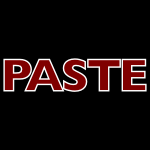 PASTE-2007-Milanova #analysis #java #points-to
PASTE-2007-Milanova #analysis #java #points-to- Light context-sensitive points-to analysis for java (AM), pp. 25–30.
 SCAM-2007-GutzmannLL #analysis #points-to #towards
SCAM-2007-GutzmannLL #analysis #points-to #towards- Towards Path-Sensitive Points-to Analysis (TG, JL, WL), pp. 59–68.
 PLDI-2007-LattnerLA #analysis #points-to
PLDI-2007-LattnerLA #analysis #points-to- Making context-sensitive points-to analysis with heap cloning practical for the real world (CL, AL, VSA), pp. 278–289.
 ICALP-2007-ArenasBL #automaton #fixpoint #regular expression #word
ICALP-2007-ArenasBL #automaton #fixpoint #regular expression #word- Regular Languages of Nested Words: Fixed Points, Automata, and Synchronization (MA, PB, LL), pp. 888–900.
 CHI-2007-GrossmanKB #modelling
CHI-2007-GrossmanKB #modelling- Modeling pointing at targets of arbitrary shapes (TG, NK, RB), pp. 463–472.
 CHI-2007-HachetPTG #agile #mobile
CHI-2007-HachetPTG #agile #mobile- “Jump and refine” for rapid pointing on mobile phones (MH, JP, FT, PG), pp. 167–170.
 CHI-2007-KumarPW #named #using
CHI-2007-KumarPW #named #using- EyePoint: practical pointing and selection using gaze and keyboard (MK, AP, TW), pp. 421–430.
 CHI-2007-PietrigaAB #evaluation #multi
CHI-2007-PietrigaAB #evaluation #multi- Pointing and beyond: an operationalization and preliminary evaluation of multi-scale searching (EP, CA, MBL), pp. 1215–1224.
 CHI-2007-RamosCBB #lens
CHI-2007-RamosCBB #lens- Pointing lenses: facilitating stylus input through visual-and motor-space magnification (GR, AC, RB, MBL), pp. 757–766.
 CHI-2007-ShoemakerG #interactive #multi #visual notation
CHI-2007-ShoemakerG #interactive #multi #visual notation- Supporting multi-point interaction in visual workspaces (GS, CG), pp. 999–1008.
 DHM-2007-DuSY #modelling
DHM-2007-DuSY #modelling- Modeling of Human’s Pointing Movement on the Effect of Target Position (JD, HS, XY), pp. 48–55.
 DHM-2007-KurodaOKTOY #animation #coordination
DHM-2007-KurodaOKTOY #animation #coordination- Finding Origin Points for New Coordinate System Suitable for Sign Animation (TK, KO, RK, TT, NO, HY), pp. 415–422.
 HIMI-IIE-2007-Fagerstrom #online
HIMI-IIE-2007-Fagerstrom #online- The Impact of Verbal Stimuli in Motivating Consumer Response at the Point of Purchase Situation Online (AF), pp. 713–719.
 HIMI-MTT-2007-OehlSZ #how #interface #performance
HIMI-MTT-2007-OehlSZ #how #interface #performance- Considerations on Efficient Touch Interfaces — How Display Size Influences the Performance in an Applied Pointing Task (MO, CS, MZ), pp. 136–143.
 VISSOFT-2007-SensalireO #industrial #object-oriented #tool support #towards #visualisation
VISSOFT-2007-SensalireO #industrial #object-oriented #tool support #towards #visualisation- Visualizing Object Oriented Software: Towards a Point of Reference for Developing Tools for Industry (MS, PO), pp. 26–29.
 ICML-2007-YoganandaMG #linear #performance
ICML-2007-YoganandaMG #linear #performance- A fast linear separability test by projection of positive points on subspaces (APY, MNM, LG), pp. 713–720.
 SIGIR-2007-PopoviciMM #documentation #effectiveness
SIGIR-2007-PopoviciMM #documentation #effectiveness- An effective method for finding best entry points in semi-structured documents (EP, PFM, GM), pp. 851–852.
 ECMDA-FA-2007-CuccuruMTG #metamodelling #semantics
ECMDA-FA-2007-CuccuruMTG #metamodelling #semantics- Templatable Metamodels for Semantic Variation Points (AC, CM, FT, SG), pp. 68–82.
 OOPSLA-2007-Rinard #termination #using
OOPSLA-2007-Rinard #termination #using- Using early phase termination to eliminate load imbalances at barrier synchronization points (MCR), pp. 369–386.
 POPL-2007-OhoriS #fixpoint #lightweight
POPL-2007-OhoriS #fixpoint #lightweight- Lightweight fusion by fixed point promotion (AO, IS), pp. 143–154.
 CSL-2007-BucciarelliEM
CSL-2007-BucciarelliEM- Not Enough Points Is Enough (AB, TE, GM), pp. 298–312.
 CASE-2006-XuLT #using #visual notation
CASE-2006-XuLT #using #visual notation- Visual Positioning Using Four-Point Planar Patterns (DX, YL, MT), pp. 600–605.
 DATE-2006-MatulaM #algorithm #float #formal method #generative #performance #standard #traversal #verification
DATE-2006-MatulaM #algorithm #float #formal method #generative #performance #standard #traversal #verification- A formal model and efficient traversal algorithm for generating testbenches for verification of IEEE standard floating point division (DWM, LDM), pp. 1134–1138.
 DATE-DF-2006-KaruriLAMK #composition #design #float #implementation
DATE-DF-2006-KaruriLAMK #composition #design #float #implementation- Design and implementation of a modular and portable IEEE 754 compliant floating-point unit (KK, RL, GA, HM, MK), pp. 221–226.
 DATE-DF-2006-MadingLPSBEH #architecture #fixpoint
DATE-DF-2006-MadingLPSBEH #architecture #fixpoint- The vector fixed point unit of the synergistic processor element of the cell architecture processor (NM, JL, JP, RS, SB, SE, WH), pp. 244–248.
 DATE-DF-2006-SohnWYY #design #fixpoint #mobile #multi
DATE-DF-2006-SohnWYY #design #fixpoint #mobile #multi- Design and test of fixed-point multimedia co-processor for mobile applications (JHS, JHW, JY, HJY), pp. 249–253.
 PEPM-2006-Edwards #fixpoint #simulation #using
PEPM-2006-Edwards #fixpoint #simulation #using- Using program specialization to speed SystemC fixed-point simulation (SAE), pp. 21–28.
 PLDI-2006-SridharanB #analysis #java #points-to
PLDI-2006-SridharanB #analysis #java #points-to- Refinement-based context-sensitive points-to analysis for Java (MS, RB), pp. 387–400.
 STOC-2006-ColeG #bound #set
STOC-2006-ColeG #bound #set- Searching dynamic point sets in spaces with bounded doubling dimension (RC, LAG), pp. 574–583.
 DLT-2006-Krieger #fixpoint #morphism #on the
DLT-2006-Krieger #fixpoint #morphism #on the- On Critical Exponents in Fixed Points of Non-erasing Morphisms (DK), pp. 280–291.
 ICALP-v1-2006-ChenD #2d #complexity #fixpoint #on the #problem
ICALP-v1-2006-ChenD #2d #complexity #fixpoint #on the #problem- On the Complexity of 2D Discrete Fixed Point Problem (XC, XD), pp. 489–500.
 SFM-2006-Harrison #float #proving #theorem proving #using #verification
SFM-2006-Harrison #float #proving #theorem proving #using #verification- Floating-Point Verification Using Theorem Proving (JH), pp. 211–242.
 ICPR-v1-2006-BabaMA #geometry #using
ICPR-v1-2006-BabaMA #geometry #using- A Unified Camera Calibration Using Geometry and Blur of Feature Points (MB, MM, NA), pp. 816–819.
 ICPR-v1-2006-BouterucheA #fuzzy #gesture #online #recognition
ICPR-v1-2006-BouterucheA #fuzzy #gesture #online #recognition- Fuzzy Point of View Combination for Contextual Shape Recognition: Application to On-line Graphic Gesture Recognition (FB, ÉA), pp. 1088–1091.
 ICPR-v1-2006-HansenMT #analysis #clustering #re-engineering #sorting
ICPR-v1-2006-HansenMT #analysis #clustering #re-engineering #sorting- Cluster Analysis and Priority Sorting in Huge Point Clouds for Building Reconstruction (WvH, EM, UT), pp. 23–26.
 ICPR-v1-2006-LiH #estimation
ICPR-v1-2006-LiH #estimation- Five-Point Motion Estimation Made Easy (HL, RIH), pp. 630–633.
 ICPR-v1-2006-LiuZH #detection #symmetry
ICPR-v1-2006-LiuZH #detection #symmetry- Fingerprint Reference Point Detection Based on Local Axial Symmetry (TL, CZ, PH), pp. 1050–1053.
 ICPR-v1-2006-NegriCMP #algorithm #classification
ICPR-v1-2006-NegriCMP #algorithm #classification- An Oriented-Contour Point Based Voting Algorithm for Vehicle Type Classification (PN, XC, MM, RP), pp. 574–577.
 ICPR-v1-2006-PerrinDZ #2d #3d #assessment #parametricity #process #using
ICPR-v1-2006-PerrinDZ #2d #3d #assessment #parametricity #process #using- 2D and 3D Vegetation Resource Parameters Assessment using Marked Point Processes (GP, XD, JZ), pp. 1–4.
 ICPR-v1-2006-TongT #3d #multi #re-engineering #set
ICPR-v1-2006-TongT #3d #multi #re-engineering #set- Multiresolution Mesh Reconstruction from Noisy 3D Point Sets (WST, CKT), pp. 5–8.
 ICPR-v1-2006-TrujilloO #detection #evolution #how #using
ICPR-v1-2006-TrujilloO #detection #evolution #how #using- Using Evolution to Learn How to Perform Interest Point Detection (LT, GO), pp. 211–214.
 ICPR-v2-2006-ChiuL #invariant #using
ICPR-v2-2006-ChiuL #invariant #using- Matching Interest Points Using Affine Invariant Concentric Circles (HPC, TLP), pp. 167–170.
 ICPR-v2-2006-Guo #perspective #using
ICPR-v2-2006-Guo #perspective #using- Plane Rectification Using a Circle and Points from a Single View (FG), pp. 9–12.
 ICPR-v2-2006-Mainar-RuizP #approximate #multi #nearest neighbour #using
ICPR-v2-2006-Mainar-RuizP #approximate #multi #nearest neighbour #using- Approximate Nearest Neighbor Search using a Single Space-filling Curve and Multiple Representations of the Data Points (GMR, JCPC), pp. 502–505.
 ICPR-v2-2006-MakkapatiM #encoding #using
ICPR-v2-2006-MakkapatiM #encoding #using- Contour Encoding Based on Extraction of Key Points Using Wavelet Transform (VM, PRM), pp. 1177–1180.
 ICPR-v2-2006-McNeillV #probability
ICPR-v2-2006-McNeillV #probability- Part-Based Probabilistic Point Matching (GM, SV), pp. 382–386.
 ICPR-v2-2006-TongWMI #3d #optimisation #representation
ICPR-v2-2006-TongWMI #3d #optimisation #representation- Evolutionary Optimization of Feature Representation for 3D Point-based (XT, HSW, BM, HHSI), pp. 707–710.
 ICPR-v2-2006-ZhengZ #2d #3d #framework #metric #similarity
ICPR-v2-2006-ZhengZ #2d #3d #framework #metric #similarity- A Unifying MAP-MRF Framework for Deriving New Point Similarity Measures for Intensity-based 2D-3D Registration (GZ, XZ), pp. 1181–1185.
 ICPR-v3-2006-CaetanoC #invariant #pattern matching
ICPR-v3-2006-CaetanoC #invariant #pattern matching- A Unified Formulation of Invariant Point Pattern Matching (TSC, TC), pp. 121–124.
 ICPR-v3-2006-PeiLX #detection #information retrieval
ICPR-v3-2006-PeiLX #detection #information retrieval- A Method For IR Point Target Detection Based on Spatial-temporal Bilateral Filter (JP, ZL, WX), pp. 846–849.
 ICPR-v3-2006-TianK06a #algorithm #distance #performance #using
ICPR-v3-2006-TianK06a #algorithm #distance #performance #using- An Efficient Algorithm for Point Matching Using Hilbert Scanning Distance (LT, SiK), pp. 873–876.
 ICPR-v3-2006-YeungS #framework #probability #set #symmetry
ICPR-v3-2006-YeungS #framework #probability #set #symmetry- Stochastic Framework for Symmetric Affine Matching between Point Sets (SKY, PS), pp. 790–793.
 ICPR-v4-2006-AreekulSJ #algorithm #locality
ICPR-v4-2006-AreekulSJ #algorithm #locality- The New Focal Point Localization Algorithm for Fingerprint Registration (VA, KS, SJ), pp. 497–500.
 ICPR-v4-2006-KryszczukD #detection #using
ICPR-v4-2006-KryszczukD #detection #using- Singular point detection in fingerprints using quadrant change information (KK, AD), pp. 594–597.
 ICPR-v4-2006-LeeHHLWLC #adaptation
ICPR-v4-2006-LeeHHLWLC #adaptation- An Adaptive ICP Registration for Facial Point Data (JDL, SSH, CHH, LCL, CTW, STL, JFC), pp. 703–706.
 ICPR-v4-2006-SekoYSMK #metric #pointer
ICPR-v4-2006-SekoYSMK #metric #pointer- Proposal of recordable pointer: Pointed position measurement by projecting interference concentric circle pattern with a pointing device (YS, YY, YS, JM, HK), pp. 825–828.
 SAC-2006-CazzolaCP #modelling #towards
SAC-2006-CazzolaCP #modelling #towards- Towards a model-driven join point model (WC, AC, AP), pp. 1306–1307.
 CC-2006-LhotakH #analysis #points-to #question
CC-2006-LhotakH #analysis #points-to #question- Context-Sensitive Points-to Analysis: Is It Worth It? (OL, LJH), pp. 47–64.
 CSL-2006-LautemannTT #algebra
CSL-2006-LautemannTT #algebra- An Algebraic Point of View on the Crane Beach Property (CL, PT, DT), pp. 426–440.
 IJCAR-2006-Boldo #algorithm #float #proving
IJCAR-2006-Boldo #algorithm #float #proving- Pitfalls of a Full Floating-Point Proof: Example on the Formal Proof of the Veltkamp/Dekker Algorithms (SB), pp. 52–66.
 DocEng-2005-Beaudoux05a #documentation #xml
DocEng-2005-Beaudoux05a #documentation #xml- Event points: annotating XML documents for remote sharing (OB), pp. 159–161.
 ICDAR-2005-IwamuraNOA #recognition
ICDAR-2005-IwamuraNOA #recognition- Isolated Character Recognition by Searching Feature Points (MI, KN, SO, HA), pp. 1035–1039.
 ICDAR-2005-Miyazaki #documentation
ICDAR-2005-Miyazaki #documentation- Documents and Services: From the Historical Points of Document Media as Extension of Human Body (JM), p. 811.
 ICDAR-2005-SternbyE #framework
ICDAR-2005-SternbyE #framework- Core Points — A Framework For Structural Parameterization (JS, AE), pp. 217–221.
 STOC-2005-ChenD #algorithm #approximate #fixpoint #on the
STOC-2005-ChenD #algorithm #approximate #fixpoint #on the- On algorithms for discrete and approximate brouwer fixed points (XC, XD), pp. 323–330.
 STOC-2005-Wee #obfuscation #on the
STOC-2005-Wee #obfuscation #on the- On obfuscating point functions (HW), pp. 523–532.
 ICALP-2005-HanedaKT
ICALP-2005-HanedaKT- Suitable Curves for Genus-4 HCC over Prime Fields: Point Counting Formulae for Hyperelliptic Curves of Type y2=x2k+1+ax (MH, MK, TT), pp. 539–550.
 FM-2005-Harrison #float #verification
FM-2005-Harrison #float #verification- Floating-Point Verification (JH), pp. 529–532.
 IFL-2005-CunhaPP #framework #program transformation
IFL-2005-CunhaPP #framework #program transformation- A Framework for Point-Free Program Transformation (AC, JSP, JP), pp. 1–18.
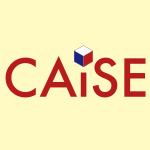 CAiSE-2005-SchalkenBV #framework
CAiSE-2005-SchalkenBV #framework- Measuring IT Infrastructure Project Size: Infrastructure Effort Points (JJPS, SB, HvV), pp. 567–581.
 CIKM-2005-KraftMC #exclamation
CIKM-2005-KraftMC #exclamation- Y!Q: contextual search at the point of inspiration (RK, FM, CCC), pp. 816–823.
 CIKM-2005-ZhangGLTW
CIKM-2005-ZhangGLTW- Discovering strong skyline points in high dimensional spaces (ZZ, XG, HL, AKHT, NW), pp. 247–248.
 ICML-2005-SindhwaniNB #learning
ICML-2005-SindhwaniNB #learning- Beyond the point cloud: from transductive to semi-supervised learning (VS, PN, MB), pp. 824–831.
 MLDM-2005-CaoHXW #algorithm #network #recognition
MLDM-2005-CaoHXW #algorithm #network #recognition- Iris Recognition Algorithm Based on Point Covering of High-Dimensional Space and Neural Network (WC, JH, GX, SW), pp. 305–313.
 MLDM-2005-SiaL #clustering #dataset #scalability #using
MLDM-2005-SiaL #clustering #dataset #scalability #using- Clustering Large Dynamic Datasets Using Exemplar Points (WS, MML), pp. 163–173.
 MoDELS-2005-ChauvelJ #code generation #modelling #semantics #uml
MoDELS-2005-ChauvelJ #code generation #modelling #semantics #uml- Code Generation from UML Models with Semantic Variation Points (FC, JMJ), pp. 54–68.
 MoDELS-2005-ChauvelJ #code generation #modelling #semantics #uml
MoDELS-2005-ChauvelJ #code generation #modelling #semantics #uml- Code Generation from UML Models with Semantic Variation Points (FC, JMJ), pp. 54–68.
 OOPSLA-2005-SridharanGSB #analysis #java #points-to
OOPSLA-2005-SridharanGSB #analysis #java #points-to- Demand-driven points-to analysis for Java (MS, DG, LS, RB), pp. 59–76.
 GPCE-2005-WuL #programming #reasoning #source code #using
GPCE-2005-WuL #programming #reasoning #source code #using- Shadow Programming: Reasoning About Programs Using Lexical Join Point Information (PW, KJL), pp. 141–156.
 PPDP-2005-SahaR #analysis #incremental #logic programming #points-to #using
PPDP-2005-SahaR #analysis #incremental #logic programming #points-to #using- Incremental and demand-driven points-to analysis using logic programming (DS, CRR), pp. 117–128.
 SAC-2005-JiJC #adaptation #analysis #migration
SAC-2005-JiJC #adaptation #analysis #migration- Adaptation point analysis for computation migration/checkpointing (YJ, HJ, VC), pp. 750–751.
 SAC-2005-ReddyC #bound #using
SAC-2005-ReddyC #bound #using- Finding saddle points using stability boundaries (CKR, HDC), pp. 212–213.
 CAV-2005-CostanGGMP #algorithm #fixpoint #policy #source code #static analysis
CAV-2005-CostanGGMP #algorithm #fixpoint #policy #source code #static analysis- A Policy Iteration Algorithm for Computing Fixed Points in Static Analysis of Programs (AC, SG, EG, MM, SP), pp. 462–475.
 CAV-2005-Monniaux #analysis #composition #float #linear
CAV-2005-Monniaux #analysis #composition #float #linear- Compositional Analysis of Floating-Point Linear Numerical Filters (DM), pp. 199–212.
 DAC-2004-AnastasakisMP #equivalence #performance
DAC-2004-AnastasakisMP #equivalence #performance- Efficient equivalence checking with partitions and hierarchical cut-points (DA, LM, SP), pp. 539–542.
 DAC-2004-RoyB #algorithm #design #fixpoint #float #matlab
DAC-2004-RoyB #algorithm #design #fixpoint #float #matlab- An algorithm for converting floating-point computations to fixed-point in MATLAB based FPGA design (SR, PB), pp. 484–487.
 DAC-2004-ShiB #automation #communication #data type #fixpoint #optimisation
DAC-2004-ShiB #automation #communication #data type #fixpoint #optimisation- Automated fixed-point data-type optimization tool for signal processing and communication systems (CS, RWB), pp. 478–483.
 DATE-DF-2004-LoukusaPRRV #design #perspective
DATE-DF-2004-LoukusaPRRV #design #perspective- Systems on Chips Design: System Manufacturer Point of View (VL, HP, AR, TR, OV), pp. 3–4.
 DATE-v2-2004-VrankenSW #layout
DATE-v2-2004-VrankenSW #layout- Impact of Test Point Insertion on Silicon Area and Timing during Layout (HPEV, FSS, HJW), pp. 810–815.
 HT-2004-MartinTA
HT-2004-MartinTA- The end-point is not enough (DM, MT, HA), pp. 128–129.
 VLDB-2004-IwerksSS #maintenance #query
VLDB-2004-IwerksSS #maintenance #query- Maintenance of Spatial Semijoin Queries on Moving Points (GSI, HS, KPS), pp. 828–839.
 ESOP-2004-Mine #abstract domain #detection #fault #float #relational #runtime
ESOP-2004-Mine #abstract domain #detection #fault #float #relational #runtime- Relational Abstract Domains for the Detection of Floating-Point Run-Time Errors (AM), pp. 3–17.
 TACAS-2004-GrooteK #equation #fixpoint
TACAS-2004-GrooteK #equation #fixpoint- Solving Disjunctive/Conjunctive Boolean Equation Systems with Alternating Fixed Points (JFG, MK), pp. 436–450.
 STOC-2004-KenyonRS #set
STOC-2004-KenyonRS #set- Low distortion maps between point sets (CK, YR, AS), pp. 272–280.
 ICALP-2004-DawarGK #backtracking #fixpoint #game studies
ICALP-2004-DawarGK #backtracking #fixpoint #game studies- Backtracking Games and Inflationary Fixed Points (AD, EG, SK), pp. 420–432.
 ICALP-2004-Martin #fixpoint
ICALP-2004-Martin #fixpoint- Entropy as a Fixed Point (KM), pp. 945–958.
 ICALP-2004-Schweikardt #fixpoint #logic #monad #on the #power of
ICALP-2004-Schweikardt #fixpoint #logic #monad #on the #power of- On the Expressive Power of Monadic Least Fixed Point Logic (NS), pp. 1123–1135.
 CHI-2004-BlanchGB #adaptation #semantics
CHI-2004-BlanchGB #adaptation #semantics- Semantic pointing: improving target acquisition with control-display ratio adaptation (RB, YG, MBL), pp. 519–526.
 CHI-2004-GrossmanB #3d
CHI-2004-GrossmanB #3d- Pointing at trivariate targets in 3D environments (TG, RB), pp. 447–454.
 ICPR-v1-2004-ArcaCL #detection #performance #recognition
ICPR-v1-2004-ArcaCL #detection #performance #recognition- An Efficient Method to Detect Facial Fiducial Points for Face Recognition (SA, PC, RL), pp. 532–535.
 ICPR-v1-2004-JiangLK #detection #recognition
ICPR-v1-2004-JiangLK #detection #recognition- Reference Point Detection for Fingerprint Recognition (XJ, ML, ACK), pp. 540–543.
 ICPR-v1-2004-LaptevL #adaptation
ICPR-v1-2004-LaptevL #adaptation- Velocity Adaptation of Space-Time Interest Points (IL, TL), pp. 52–56.
 ICPR-v1-2004-SirisathitkulAU #distance #image #performance #using
ICPR-v1-2004-SirisathitkulAU #distance #image #performance #using- Fast Color Image Quantization using Squared Euclidean Distance of Adjacent Color Points along the Highest Color Variance Axis (YS, SA, BU), pp. 656–659.
 ICPR-v1-2004-TsuiTC #image #metric #using
ICPR-v1-2004-TsuiTC #image #metric #using- Metric Measurement on Arbitrary Planes in 2 Images Using the Conformal Point (PTT, HTT, WkC), pp. 108–111.
 ICPR-v1-2004-ZhangJT
ICPR-v1-2004-ZhangJT- Geodesic Closest Point Constrained Inter-Subject Non-Rigid Registration (ZZ, YJ, HTT), pp. 564–567.
 ICPR-v2-2004-CaetanoCB #algorithm #comparison #distance #metric #using
ICPR-v2-2004-CaetanoCB #algorithm #comparison #distance #metric #using- A Comparison of Junction Tree and Relaxation Algorithms for Point Matching using Different Distance Metrics (TSC, TC, DACB), pp. 124–127.
 ICPR-v2-2004-HalawaniB #evaluation #image #kernel #retrieval
ICPR-v2-2004-HalawaniB #evaluation #image #kernel #retrieval- Image Retrieval by Local Evaluation of Nonlinear Kernel Functions around Salient Points (AH, HB), pp. 955–960.
 ICPR-v3-2004-LiMH
ICPR-v3-2004-LiMH- New Method for Sparse Point-Sets Matching with Underlying Non-Rigidity (BL, QM, HH), pp. 8–11.
 ICPR-v3-2004-ZhangL #multi #pattern matching
ICPR-v3-2004-ZhangL #multi #pattern matching- Point Pattern Matching for Articulated or Multiple Objects (XZ, YL), pp. 630–633.
 ICPR-v4-2004-ReyesB #approach #geometry #re-engineering
ICPR-v4-2004-ReyesB #approach #geometry #re-engineering- Geometric Approach for Simultaneous Projective Reconstruction of Points, Lines, Planes, Quadrics, Plane Conics and Degenerate Quadrics (LR, EBC), pp. 60–63.
 ICPR-v4-2004-ViguerasBS #multi #on the
ICPR-v4-2004-ViguerasBS #multi #on the- On the Influence of Fixing the Principal Point in Frame-by-Frame Multiplanar Calibration (JFV, MOB, GS), pp. 120–123.
 ICPR-v4-2004-YamamotoYS #gesture #interface #using
ICPR-v4-2004-YamamotoYS #gesture #interface #using- Arm-Pointing Gesture Interface Using Surrounded Stereo Cameras System (YY, IY, KS), pp. 965–970.
 ICPR-v4-2004-ZaveriMD #image #information retrieval #modelling #multi #sequence #using
ICPR-v4-2004-ZaveriMD #image #information retrieval #modelling #multi #sequence #using- Tracking of Point Targets in IR Image Sequence using Multiple Model Based Particle Filtering and MRF Based Data Association (MAZ, SNM, UBD), pp. 729–732.
 KDD-2004-CumbyFGK #predict
KDD-2004-CumbyFGK #predict- Predicting customer shopping lists from point-of-sale purchase data (CMC, AEF, RG, MK), pp. 402–409.
 SAC-2004-StraubH #mobile #recommendation
SAC-2004-StraubH #mobile #recommendation- An anonymous bonus point system for mobile commerce based on word-of-mouth recommendation (TS, AH), pp. 766–773.
 SAC-2004-TangMC #embedded #fixpoint #implementation #mobile #performance #using #verification
SAC-2004-TangMC #embedded #fixpoint #implementation #mobile #performance #using #verification- Efficient implementation of fingerprint verification for mobile embedded systems using fixed-point arithmetic (TYT, YSM, KCC), pp. 821–825.
 CSL-2004-AbelM #fixpoint #recursion
CSL-2004-AbelM #fixpoint #recursion- Fixed Points of Type Constructors and Primitive Recursion (AA, RM), pp. 190–204.
 DAC-2003-CarlettaVKF #fixpoint
DAC-2003-CarlettaVKF #fixpoint- Determining appropriate precisions for signals in fixed-point IIR filters (JC, RJV, FWK, ZF), pp. 656–661.
 ICDAR-2003-YouK #approach #network #segmentation #string #using
ICDAR-2003-YouK #approach #network #segmentation #string #using- An approach for locating segmentation points of handwritten digit strings using a neural network (DY, GK), p. 142–?.
 VLDB-2003-IwerksSS #nearest neighbour #query
VLDB-2003-IwerksSS #nearest neighbour #query- Continuous K-Nearest Neighbor Queries for Continuously Moving Points with Updates (GSI, HS, KPS), pp. 512–523.
 ICSM-2003-Klusener #analysis #source code
ICSM-2003-Klusener #analysis #source code- Source Code Based Function Point Analysis for Enhancement Projects (SK), pp. 373–376.
 PLDI-2003-BerndlLQHU #analysis #points-to #using
PLDI-2003-BerndlLQHU #analysis #points-to #using- Points-to analysis using BDDs (MB, OL, FQ, LJH, NU), pp. 103–114.
 DLT-2003-AnselmoM #formal method #perspective #problem
DLT-2003-AnselmoM #formal method #perspective #problem- Covering Problems from a Formal Language Point of View (MA, MM), pp. 122–133.
 CHI-2003-AccotZ #modelling
CHI-2003-AccotZ #modelling- Refining Fitts’ law models for bivariate pointing (JA, SZ), pp. 193–200.
 CIKM-2003-LalmasR #automation #documentation #identification #retrieval
CIKM-2003-LalmasR #automation #documentation #identification #retrieval- Automatic identification of best entry points for focused structured document retrieval (ML, JR), pp. 540–543.
 MLDM-2003-ImiyaTOH #bound #detection #random #set
MLDM-2003-ImiyaTOH #bound #detection #random #set- Detecting the Boundary Curve of Planar Random Point Set (AI, KT, HO, VH), pp. 413–424.
 SEKE-2003-CostagliolaMF #3d #developer #evaluation #perspective #web
SEKE-2003-CostagliolaMF #3d #developer #evaluation #perspective #web- An Evaluation of Web3d Technologies from Developer’s and End-User’s Point of View (GC, SDM, FF), pp. 25–32.
 UML-2003-Fowler #question #uml #what
UML-2003-Fowler #question #uml #what- What Is the Point of the UML? (MF), p. 325.
 POPL-2003-Chakaravarthy #analysis #complexity
POPL-2003-Chakaravarthy #analysis #complexity- New results on the computability and complexity of points — to analysis (VTC), pp. 115–125.
 RE-2003-Becker #lifecycle #multi #requirements #traceability
RE-2003-Becker #lifecycle #multi #requirements #traceability- Measuring Requirements Traceability from Multiple Angels at Multiple Lifecycle Entry Points (DB), p. 291.
 ICSE-2003-Berner #case study #development #experience
ICSE-2003-Berner #case study #development #experience- About the Development of a Point of Sale System: an Experience Report (SB), pp. 528–533.
 ICSE-2003-NuseibehKF #exclamation #named
ICSE-2003-NuseibehKF #exclamation #named- ViewPoints: meaningful relationships are difficult! (BN, JK, AF), pp. 676–683.
 CC-2003-LhotakH #analysis #java #points-to #scalability #using
CC-2003-LhotakH #analysis #java #points-to #scalability #using- Scaling Java Points-to Analysis Using SPARK (OL, LJH), pp. 153–169.
 PPoPP-2003-ChenHHJL #analysis #architecture #compilation #multi #points-to #probability #thread
PPoPP-2003-ChenHHJL #analysis #architecture #compilation #multi #points-to #probability #thread- Compiler support for speculative multithreading architecture with probabilistic points-to analysis (PSC, MYH, YSH, RDCJ, JKL), pp. 25–36.
 CSL-2003-DawarR #fixpoint #logic #symmetry
CSL-2003-DawarR #fixpoint #logic #symmetry- A Fixed-Point Logic with Symmetric Choice (AD, DR), pp. 169–182.
 LICS-2003-GradelK #fixpoint
LICS-2003-GradelK #fixpoint- Will Deflation Lead to Depletion? On Non-Monotone Fixed Point Inductions (EG, SK), p. 158–?.
 TLCA-2003-KakutaniH #category theory #fixpoint
TLCA-2003-KakutaniH #category theory #fixpoint- Parameterizations and Fixed-Point Operators on Control Categories (YK, MH), pp. 180–194.
 VMCAI-2003-Majster-CederbaumZF #logic #perspective #refinement
VMCAI-2003-Majster-CederbaumZF #logic #perspective #refinement- Action Refinement from a Logical Point of View (MEMC, NZ, HF), pp. 253–267.
 DAC-2002-AnastasakisDMS #performance
DAC-2002-AnastasakisDMS #performance- A practical and efficient method for compare-point matching (DA, RFD, HKTM, TS), pp. 305–310.
 DATE-2002-DrozdLD #array #float #online #performance #testing
DATE-2002-DrozdLD #array #float #online #performance #testing- Efficient On-Line Testing Method for a Floating-Point Iterative Array Divider (AVD, MVL, JVD), p. 1127.
 DATE-2002-KaivolaN #float #multi #verification
DATE-2002-KaivolaN #float #multi #verification- Formal Verification of the Pentium ® 4 Floating-Point Multiplier (RK, NN), pp. 20–27.
 DATE-2002-MenardS #algorithm #automation #evaluation #fixpoint
DATE-2002-MenardS #algorithm #automation #evaluation #fixpoint- Automatic Evaluation of the Accuracy of Fixed-Point Algorithms (DM, OS), pp. 529–535.
 WRLA-J-1996-BorovanskyKKM02 #logic #perspective
WRLA-J-1996-BorovanskyKKM02 #logic #perspective- ELAN from a rewriting logic point of view (PB, CK, HK, PEM), pp. 155–185.
 ESOP-2002-GoubaultMP #float #interpreter #precise
ESOP-2002-GoubaultMP #float #interpreter #precise- Asserting the Precision of Floating-Point Computations: A Simple Abstract Interpreter (EG, MM, SP), pp. 209–212.
 FoSSaCS-2002-LangeS #fixpoint #logic #model checking
FoSSaCS-2002-LangeS #fixpoint #logic #model checking- Model Checking Fixed Point Logic with Chop (ML, CS), pp. 250–263.
 SCAM-J-2001-AndersonBRT02 #points-to #set
SCAM-J-2001-AndersonBRT02 #points-to #set- Flow insensitive points-to sets (PA, DB, GR, TT), pp. 743–754.
 SAS-2002-SerebrenikS #float #logic programming #on the #source code #termination
SAS-2002-SerebrenikS #float #logic programming #on the #source code #termination- On Termination of Logic Programs with Floating Point Computations (AS, DDS), pp. 151–164.
 SAS-2002-WhaleyL #analysis #performance #points-to #strict
SAS-2002-WhaleyL #analysis #performance #points-to #strict- An Efficient Inclusion-Based Points-To Analysis for Strictly-Typed Languages (JW, MSL), pp. 180–195.
 IFM-2002-AkbarpourDT #fixpoint #formal method
IFM-2002-AkbarpourDT #fixpoint #formal method- Formalization of Cadence SPW Fixed-Point Arithmetic in HOL (BA, AD, ST), pp. 185–204.
 IFL-2002-LindahlS #compilation #float
IFL-2002-LindahlS #compilation #float- Unboxed Compilation of Floating Point Arithmetic in a Dynamically Typed Language Environment (TL, KFS), pp. 134–149.
 VISSOFT-2002-DiehlK #execution #visual notation
VISSOFT-2002-DiehlK #execution #visual notation- Reification of Program Points for Visual Execution (SD, AK), pp. 100–109.
 ICML-2002-PerkinsP #fixpoint #on the
ICML-2002-PerkinsP #fixpoint #on the- On the Existence of Fixed Points for Q-Learning and Sarsa in Partially Observable Domains (TJP, MDP), pp. 490–497.
 ICPR-v1-2002-WollnyTK #analysis #segmentation
ICPR-v1-2002-WollnyTK #analysis #segmentation- Segmentation of Vector Fields by Critical Point Analysis: Application to Brain Deformation (GW, MT, FK), pp. 524–527.
 ICPR-v2-2002-Al-ShaherH #learning #modelling #online #performance
ICPR-v2-2002-Al-ShaherH #learning #modelling #online #performance- Fast On-Line learning of Point Distribution Models (AAAS, ERH), pp. 208–211.
 ICPR-v2-2002-CarcassoniH #multi #scalability #using
ICPR-v2-2002-CarcassoniH #multi #scalability #using- Point-Set Alignment Using Multidimensional Scaling (MC, ERH), pp. 402–405.
 ICPR-v2-2002-ChenC
ICPR-v2-2002-ChenC- Speeding up SVM Decision Based on Mirror Points (JHC, CSC), pp. 869–872.
 ICPR-v2-2002-DrotDMZ #image #process #segmentation
ICPR-v2-2002-DrotDMZ #image #process #segmentation- Object Point Processes for Image Segmentation (SD, XD, HLM, JZ), pp. 913–916.
 ICPR-v2-2002-Ho #analysis #proximity
ICPR-v2-2002-Ho #analysis #proximity- Exploratory Analysis of Point Proximity in Subspaces (TKH), pp. 196–199.
 ICPR-v2-2002-RuizLG
ICPR-v2-2002-RuizLG- A Note on Principal Point Estimability (AR, PELdT, GGM), pp. 304–307.
 ICPR-v3-2002-ChetverikovSSK #algorithm
ICPR-v3-2002-ChetverikovSSK #algorithm- The Trimmed Iterative Closest Point Algorithm (DC, DS, DS, PK), pp. 545–548.
 ICPR-v3-2002-GuestF #analysis #approach #clustering #image
ICPR-v3-2002-GuestF #analysis #approach #clustering #image- A Clustering Approach to Corner Point Analysis in Hand Drawn Images (RMG, MCF), pp. 940–943.
 ICPR-v3-2002-MekadaT #distance #using
ICPR-v3-2002-MekadaT #distance #using- Anchor Point Thinning Using a Skeleton Based on the Euclidean Distance Transformation (YM, JiT), pp. 923–926.
 ICPR-v3-2002-MeshoulB #estimation
ICPR-v3-2002-MeshoulB #estimation- Ant Colony System with Extremal Dynamics for Point Matching and Pose Estimation (SM, MB), pp. 823–826.
 ICPR-v3-2002-NilssonB #image #symmetry
ICPR-v3-2002-NilssonB #image #symmetry- Prominent Symmetry Points as Landmarks in Finger Print Images for Alignment (KN, JB), pp. 395–398.
 ICPR-v3-2002-RavindranF #linear
ICPR-v3-2002-RavindranF #linear- A Simple Linear Method to Obtain Height Ordering of Scene Points (PR, NJF), pp. 719–722.
 ICPR-v3-2002-SuW #identification #learning #process
ICPR-v3-2002-SuW #identification #learning #process- A Learning Process to the Identification of Feature Points on Chinese Characters (YMS, JFW), pp. 93–97.
 ICPR-v4-2002-Yang02a
ICPR-v4-2002-Yang02a- Tetrahedron Mapping of Points from N-Space to Three-Space (LY), p. 343–?.
 KDD-2002-YamanishiT #detection #framework
KDD-2002-YamanishiT #detection #framework- A unifying framework for detecting outliers and change points from non-stationary time series data (KY, JiT), pp. 676–681.
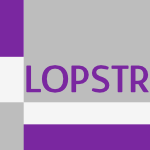 LOPSTR-2002-VanhoofTB #fixpoint #logic programming #semantics #source code
LOPSTR-2002-VanhoofTB #fixpoint #logic programming #semantics #source code- A Fixed Point Semantics for Logic Programs Extended with Cuts (WV, RT, MB), pp. 238–257.
 RE-2002-GrossMZH #convergence #development
RE-2002-GrossMZH #convergence #development- The Reference Point Method: Requirements-Based ICT Convergence Solution Development (WG, TM, FZ, CH), p. 193.
 FSE-2002-BrunsC #analysis #points-to
FSE-2002-BrunsC #analysis #points-to- Searching for points-to analysis (GB, SC), pp. 61–70.
 FSE-2002-MockACE #points-to #slicing
FSE-2002-MockACE #points-to #slicing- Improving program slicing with dynamic points-to data (MM, DCA, CC, SJE), pp. 71–80.
 ICSE-2002-KusumotoIIMMT #java #metric #source code
ICSE-2002-KusumotoIIMMT #java #metric #source code- Function point measurement from Java programs (SK, MI, KI, SM, KM, MT), pp. 576–582.
 CADE-2002-Goldberg #satisfiability #testing
CADE-2002-Goldberg #satisfiability #testing- Testing Satisfiability of CNF Formulas by Computing a Stable Set of Points (EG), pp. 161–180.
 CSL-2002-Kreutzer #fixpoint #infinity #logic
CSL-2002-Kreutzer #fixpoint #infinity #logic- Partial Fixed-Point Logic on Infinite Structures (SK), pp. 337–351.
 ISSTA-2002-MilanovaRR #analysis #java #points-to
ISSTA-2002-MilanovaRR #analysis #java #points-to- Parameterized object sensitivity for points-to and side-effect analyses for Java (AM, AR, BGR), pp. 1–11.
 ISSTA-2002-MoorsVTZB #automation #case study #experience #testing
ISSTA-2002-MoorsVTZB #automation #case study #experience #testing- Experiences in automating the testing of SS7 signalling transfer points (TM, MV, ZT, XZ, RB), pp. 154–158.
 LICS-2002-Kreutzer #equivalence #fixpoint #logic
LICS-2002-Kreutzer #equivalence #fixpoint #logic- Expressive Equivalence of Least and Inflationary Fixed-Point Logic (SK), p. 403–?.
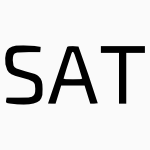 SAT-2002-Goldberg #satisfiability #testing
SAT-2002-Goldberg #satisfiability #testing- Testing satisfiability of CNF formulas by computing a stable set of points (EG), p. 12.
 CBSE-2001-VieiraDR #component #dependence
CBSE-2001-VieiraDR #component #dependence- Describing Dependencies in Component Access Points (MERV, MSD, DJR), p. 22.
 DATE-2001-DrozdL #float #online #performance #testing
DATE-2001-DrozdL #float #online #performance #testing- Efficient on-line testing method for a floating-point adder (AVD, MVL), pp. 307–313.
 IWPC-J-1999-MartinoMMV01 #communication #detection #interactive #parallel #program analysis
IWPC-J-1999-MartinoMMV01 #communication #detection #interactive #parallel #program analysis- Parallel program analysis and restructuring by detection of point-to-point interaction patterns and their transformation into collective communication constructs (BDM, AM, NM, UV), pp. 235–263.
 PASTE-2001-LiangPH #analysis #java #points-to
PASTE-2001-LiangPH #analysis #java #points-to- Extending and evaluating flow-insenstitive and context-insensitive points-to analyses for Java (DL, MP, MJH), pp. 73–79.
 PASTE-2001-MockDCE #analysis #comparison #comprehension #optimisation #points-to #set
PASTE-2001-MockDCE #analysis #comparison #comprehension #optimisation #points-to #set- Dynamic points-to sets: a comparison with static analyses and potential applications in program understanding and optimization (MM, MD, CC, SJE), pp. 66–72.
 SCAM-2001-AndersonBRT #points-to #set
SCAM-2001-AndersonBRT #points-to #set- Flow Insensitive Points-To Sets (PA, DB, GR, TT), pp. 81–91.
 PLDI-2001-GhiyaLS #ambiguity #analysis #c #memory management #on the #points-to #source code
PLDI-2001-GhiyaLS #ambiguity #analysis #c #memory management #on the #points-to #source code- On the Importance of Points-to Analysis and Other Memory Disambiguation Methods for C Programs (RG, DML, DCS), pp. 47–58.
 SAS-2001-Goubault #analysis #float #precise
SAS-2001-Goubault #analysis #float #precise- Static Analyses of the Precision of Floating-Point Operations (EG), pp. 234–259.
 STOC-2001-GartnerSTWV
STOC-2001-GartnerSTWV- One line and n points (BG, JS, FT, EW, PV), pp. 306–315.
 DLT-2001-Esik #equation #fixpoint
DLT-2001-Esik #equation #fixpoint- The Equational Theory of Fixed Points with Applications to Generalized Language Theory (ZÉ), pp. 21–36.
 CHI-2001-MacKenzieKS #metric
CHI-2001-MacKenzieKS #metric- Accuracy measures for evaluating computer pointing devices (ISM, TK, MS), pp. 9–16.
 ICML-2001-ChoiR #approximate #difference #fixpoint #learning #performance
ICML-2001-ChoiR #approximate #difference #fixpoint #learning #performance- A Generalized Kalman Filter for Fixed Point Approximation and Efficient Temporal Difference Learning (DC, BVR), pp. 43–50.
 OOPSLA-2001-RountevMR #analysis #constraints #java #points-to #using
OOPSLA-2001-RountevMR #analysis #constraints #java #points-to #using- Points-To Analysis for Java using Annotated Constraints (AR, AM, BGR), pp. 43–55.
 SAIG-2001-Wand #aspect-oriented #programming #semantics
SAIG-2001-Wand #aspect-oriented #programming #semantics- A Semantics for Advice and Dynamic Join Points in Aspect-Oriented Programming (MW), pp. 45–46.
 SAC-2001-GaliassoW #algorithm #hybrid #multi #problem #search-based
SAC-2001-GaliassoW #algorithm #hybrid #multi #problem #search-based- A hybrid genetic algorithm for the point to multipoint routing problem with single split paths (PG, RLW), pp. 327–332.
 CC-2001-RountevR #analysis #library #points-to #source code
CC-2001-RountevR #analysis #library #points-to #source code- Points-to and Side-Effect Analyses for Programs Built with Precompiled Libraries (AR, BGR), pp. 20–36.
 CSL-2001-DawarGK #fixpoint #logic
CSL-2001-DawarGK #fixpoint #logic- Inflationary Fixed Points in Modal Logic (AD, EG, SK), pp. 277–291.
 ICLP-2001-KumarRS #equation #fixpoint #modelling
ICLP-2001-KumarRS #equation #fixpoint #modelling- Alternating Fixed Points in Boolean Equation Systems as Preferred Stable Models (KNK, CRR, SAS), pp. 227–241.
 DAC-2000-KashyapK
DAC-2000-KashyapK- A realizable driving point model for on-chip interconnect with inductance (CVK, BK), pp. 190–195.
 DATE-2000-VardanianM #concurrent #detection #fault
DATE-2000-VardanianM #concurrent #detection #fault- Improving the Error Detection Ability of Concurrent Checkers by Observation Point Insertion in the Circuit Under Check (VAV, LBM), p. 762.
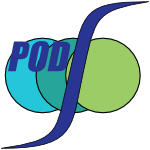 PODS-2000-AgarwalAE
PODS-2000-AgarwalAE- Indexing Moving Points (PKA, LA, JE), pp. 175–186.
 PODS-2000-Kreutzer #constraints #database #fixpoint #linear #query
PODS-2000-Kreutzer #constraints #database #fixpoint #linear #query- Fixed-Point Query Languages for Linear Constraint Databases (SK), pp. 116–125.
 TACAS-2000-GoedickeEMT #development #distributed #graph transformation #multi #tool support
TACAS-2000-GoedickeEMT #development #distributed #graph transformation #multi #tool support- ViewPoint-Oriented Software Development: Tool Support for Integrating Multiple Perspectives by Distributed Graph Transformation (MG, BE, TM, GT), pp. 43–47.
 PLDI-2000-RouhtevC #analysis #points-to #scalability
PLDI-2000-RouhtevC #analysis #points-to #scalability- Off-line variable substitution for scaling points-to analysis (AR, SC), pp. 47–56.
 SAS-2000-FosterFA #analysis #c #points-to #polymorphism
SAS-2000-FosterFA #analysis #c #points-to #polymorphism- Polymorphic versus Monomorphic Flow-Insensitive Points-to Analysis for C (JSF, MF, AA), pp. 175–198.
 CSCW-2000-MamykinaW #case study #evolution
CSCW-2000-MamykinaW #case study #evolution- Evolution of Contact Point: a case study of a help desk and its users (LM, CGW), pp. 41–48.
 ICML-2000-FariasR #approximate #fixpoint #learning
ICML-2000-FariasR #approximate #fixpoint #learning- Fixed Points of Approximate Value Iteration and Temporal-Difference Learning (DPdF, BVR), pp. 207–214.
 ICML-2000-RychetskySG
ICML-2000-RychetskySG- Direct Bayes Point Machines (MR, JST, MG), pp. 815–822.
 ICPR-v1-2000-Brauer-BurchardtV #image #robust
ICPR-v1-2000-Brauer-BurchardtV #image #robust- Robust Vanishing Point Determination in Noisy Images (CBB, KV), pp. 1559–1562.
 ICPR-v1-2000-DuchesneH #approach #artificial reality #problem
ICPR-v1-2000-DuchesneH #approach #artificial reality #problem- A Point-Based Approach to the Interposition Problem in Augmented Reality (CD, JYH), pp. 1261–1265.
 ICPR-v1-2000-WilliamsB #algorithm #evaluation #multi #novel #set
ICPR-v1-2000-WilliamsB #algorithm #evaluation #multi #novel #set- Evaluation of a Novel Multiple Point Set Registration Algorithm (JAW, MB), pp. 5007–5010.
 ICPR-v2-2000-CarcassoniH #matrix #proximity
ICPR-v2-2000-CarcassoniH #matrix #proximity- An Improved Point Proximity Matrix for Modal Matching (MC, ERH), pp. 2034–2037.
 ICPR-v2-2000-HwangLBV #re-engineering
ICPR-v2-2000-HwangLBV #re-engineering- Face Reconstruction from a Small Number of Feature Points (BWH, SWL, VB, TV), pp. 2838–2837.
 ICPR-v2-2000-MelkemiVC #set
ICPR-v2-2000-MelkemiVC #set- Shapes of Weighted Points Sets (MM, DV, LC), pp. 6058–6061.
 ICPR-v3-2000-FayolleDRC #detection #multi
ICPR-v3-2000-FayolleDRC #detection #multi- A Wavelet Based Multiscale Detection Scheme of Feature Points (JF, CD, LR, SC), pp. 3425–3428.
 ICPR-v3-2000-IiyamaKM #estimation
ICPR-v3-2000-IiyamaKM #estimation- Estimation of the Location of Joint Points of Human Body from Successive Volume Data (MI, YK, MM), pp. 3699–3702.
 ICPR-v3-2000-ShinBGK #2d #3d #framework
ICPR-v3-2000-ShinBGK #2d #3d #framework- Framework of Integrating 2D Points and Curves for Tracking of 3D Nonrigid Motion and Structure (MCS, RB, DBG, CK), pp. 3831–3834.
 ICPR-v3-2000-ZhangB
ICPR-v3-2000-ZhangB- Grouping Edge Points into Line Segments by Sequential Hough Transformation (XZ, HB), pp. 3676–3679.
 ICPR-v4-2000-TakahashiKIS #image #using
ICPR-v4-2000-TakahashiKIS #image #using- Expanding Possible View Points of Virtual Environment Using Panoramic Images (TT, HK, KI, MS), pp. 4468–4472.
 ICPR-v4-2000-WolfKBJ #image #retrieval #using
ICPR-v4-2000-WolfKBJ #image #retrieval #using- Content Based Image Retrieval Using Interest Points and Texture Features (CW, WGK, HB, JMJ), pp. 4234–4237.
 CADE-2000-Seger #float #model checking #proving #theorem proving
CADE-2000-Seger #float #model checking #proving #theorem proving- Connecting Bits with Floating-Point Numbers: Model Checking and Theorem Proving in Practice (CJHS), p. 235.
 CSL-2000-Atserias #bound #complexity #fixpoint
CSL-2000-Atserias #bound #complexity #fixpoint- The Descriptive Complexity of the Fixed-Points of Bounded Formulas (AA), pp. 172–186.
 CSL-2000-Esik #axiom #fixpoint
CSL-2000-Esik #axiom #fixpoint- Axiomatizing the Least Fixed Point Operation and Binary Supremum (ZÉ), pp. 302–316.
 LICS-2000-SimpsonP #axiom #category theory #fixpoint
LICS-2000-SimpsonP #axiom #category theory #fixpoint- Complete Axioms for Categorical Fixed-Point Operators (AKS, GDP), pp. 30–41.
 TestCom-2000-SchieferdeckerLR #incremental #testing
TestCom-2000-SchieferdeckerLR #incremental #testing- Incremental Testing at System Reference Points (IS, ML, AR), pp. 75–90.
 DAC-1999-BashfordL #constraints #fixpoint
DAC-1999-BashfordL #constraints #fixpoint- Constraint Driven Code Selection for Fixed-Point DSPs (SB, RL), pp. 817–822.
 DATE-1999-CmarRSVB #design #fixpoint #refinement
DATE-1999-CmarRSVB #design #fixpoint #refinement- A Methodology and Design Environment for DSP ASIC Fixed-Point Refinement (RC, LR, PS, SV, IB), p. 271–?.
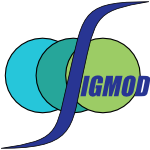 SIGMOD-1999-AnkerstBKS #clustering #identification #named
SIGMOD-1999-AnkerstBKS #clustering #identification #named- OPTICS: Ordering Points To Identify the Clustering Structure (MA, MMB, HPK, JS), pp. 49–60.
 VLDB-1999-Hamilton #data transformation #design
VLDB-1999-Hamilton #data transformation #design- Networked Data Management Design Points (JRH), pp. 202–206.
 CSMR-1999-Tonella #analysis #points-to #set
CSMR-1999-Tonella #analysis #points-to #set- Effects of Different Flow Insensitive Points-to Analyses on DEF/USE Sets (PT), pp. 62–71.
 IWPC-1999-MartinoMMV #communication #interactive #parallel #source code
IWPC-1999-MartinoMMV #communication #interactive #parallel #source code- Restructuring Parallel Programs by Transformation of Point-To-Point Interactions into Collective Communication (BDM, AM, NM, UV), pp. 84–91.
 AGTIVE-1999-GoedickeEMT #development #distributed #graph transformation #integration #multi #tool support #towards
AGTIVE-1999-GoedickeEMT #development #distributed #graph transformation #integration #multi #tool support #towards- Tool Support for ViewPoint-Oriented Software Development: Towards Integration of Multiple Perspectives by Distributed Graph Transformation (MG, BE, TM, GT), pp. 369–377.
 AGTIVE-1999-GoedickeEMT99a #development #tool support
AGTIVE-1999-GoedickeEMT99a #development #tool support- Tool Support for ViewPoint-oriented Software Development (MG, BE, TM, GT), pp. 419–425.
 CHI-1999-DouglasKM #assessment #performance #standard #testing
CHI-1999-DouglasKM #assessment #performance #standard #testing- Testing Pointing Device Performance and User Assessment with the ISO 9241, Part 9 Standard (SAD, AEK, ISM), pp. 215–222.
 CHI-1999-FaradayS #authoring #using #web
CHI-1999-FaradayS #authoring #using #web- Authoring Animated Web Pages Using “Contact Points” (PF, AGS), pp. 458–465.
 CHI-1999-GuiardBM #multi #navigation #precise
CHI-1999-GuiardBM #multi #navigation #precise- Navigation as Multiscale Pointing: Extending Fitts’ Model to Very High Precision Tasks (YG, MBL, DM), pp. 450–457.
 CHI-1999-ZhaiMI
CHI-1999-ZhaiMI- Manual and Gaze Input Cascaded (MAGIC) Pointing (SZ, CM, SI), pp. 246–253.
 HCI-CCAD-1999-Menzel #design
HCI-CCAD-1999-Menzel #design- New design solution for call center work places from the point of view of furniture manufacturer (DM), pp. 1327–1331.
 HCI-CCAD-1999-Morikawa #communication #video
HCI-CCAD-1999-Morikawa #communication #video- Pointing on HyperMirror video mediated communication (OM), pp. 548–552.
 HCI-CCAD-1999-Morishima #communication #multi #using
HCI-CCAD-1999-Morishima #communication #multi #using- Multiple points face-to-face communication in cyberspace using multi-modal agent (SM), pp. 177–181.
 HCI-CCAD-1999-MurataFAI #2d #effectiveness
HCI-CCAD-1999-MurataFAI #2d #effectiveness- Extending effective target width in Fitt’s law to two-dimensional pointing task (AM, MF, YA, HI), pp. 1236–1240.
 HCI-EI-1999-KotaniH
HCI-EI-1999-KotaniH- Relationship between Size of Icons and Mouse Operating Force with Complex Actions during Pointing Tasks (KK, KH), pp. 412–415.
 HCI-EI-1999-LeungPM #mobile
HCI-EI-1999-LeungPM #mobile- Pointing Accuracy with Mobile Pen-based Devices for On-the-move Applications (YKL, CP, KM), pp. 218–222.
 HCI-EI-1999-ZuhlkeK #industrial
HCI-EI-1999-ZuhlkeK #industrial- Pointing Devices for Industrial Use (DZ, LK), pp. 402–406.
 ICEIS-1999-PopescuM #implementation #perspective
ICEIS-1999-PopescuM #implementation #perspective- Organizational Level of Intelligent Robots-An Implementation Point of View (AP, GM), p. 779.
 RE-1999-GoedickeMT #consistency #development #distributed #graph transformation #nondeterminism #towards
RE-1999-GoedickeMT #consistency #development #distributed #graph transformation #nondeterminism #towards- ViewPoint-Oriented Software Development by Distributed Graph Transformation: Towards a Basis for Living with Inconsistencies (MG, TM, GT), pp. 92–99.
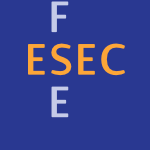 ESEC-FSE-1999-LiangH #performance #points-to #program analysis
ESEC-FSE-1999-LiangH #performance #points-to #program analysis- Efficient Points-to Analysis for Whole-Program Analysis (DL, MJH), pp. 199–215.
 CC-1999-CilioC #c #fixpoint #float
CC-1999-CilioC #c #fixpoint #float- Floating Point to Fixed Point Conversion of C Code (AGMC, HC), pp. 229–243.
 IWTCS-1999-Frey-PuckoKN #automation #consistency #generative #industrial #testing
IWTCS-1999-Frey-PuckoKN #automation #consistency #generative #industrial #testing- Automatic Test Case Generation from the Industrial Point of View: Conformance Testing in IskraTEL (MFP, MKK, RN), pp. 347–362.
 LICS-1999-AtseriasK #finite #first-order #fixpoint #logic #set
LICS-1999-AtseriasK #finite #first-order #fixpoint #logic #set- First-Order Logic vs. Fixed-Point Logic in Finite Set Theory (AA, PGK), pp. 275–284.
 LICS-1999-GradelW #fixpoint #logic
LICS-1999-GradelW #fixpoint #logic- Guarded Fixed Point Logic (EG, IW), pp. 45–54.
 DATE-1998-KedingWCM #design #fixpoint #named #simulation
DATE-1998-KedingWCM #design #fixpoint #named #simulation- FRIDGE: A Fixed-Point Design and Simulation Environment (HK, MW, MC, HM), pp. 429–435.
 SIGMOD-1998-RamakrishnanD #network
SIGMOD-1998-RamakrishnanD #network- The PointCast Network (SR, VD), p. 520.
 TACAS-1998-LiuRS #evaluation #fixpoint #performance
TACAS-1998-LiuRS #evaluation #fixpoint #performance- Fully Local and Efficient Evaluation of Alternating Fixed Points (Extended Abstract) (XL, CRR, SAS), pp. 5–19.
 PLDI-1998-SastryPS #execution #float #integer
PLDI-1998-SastryPS #execution #float #integer- Exploiting Idle Floating-Point Resources for Integer Execution (SSS, SP, JES), pp. 118–129.
 ICALP-1998-LiuS #algorithm #fixpoint #linear
ICALP-1998-LiuS #algorithm #fixpoint #linear- Simple Linear-Time Algorithms for Minimal Fixed Points (Extended Abstract) (XL, SAS), pp. 53–66.
 CHI-1998-KawachiyaI #mobile #named
CHI-1998-KawachiyaI #mobile #named- NaviPoint: An Input Device for Mobile Information Browsing (KK, HI), pp. 1–8.
 CHI-1998-OlsenBVPML #interactive #multi
CHI-1998-OlsenBVPML #interactive #multi- Generalized Pointing: Enabling Multiagent Interaction (DRO, DB, TV, MP, JLM, ELL), pp. 526–533.
 CAiSE-1998-AntoniolCCFC #adaptation #information management #object-oriented
CAiSE-1998-AntoniolCCFC #adaptation #information management #object-oriented- Adapting Function Points to Object-Oriented Information Systems (GA, FC, LC, RF, GC), pp. 59–76.
 ICML-1998-BradleyF #clustering
ICML-1998-BradleyF #clustering- Refining Initial Points for K-Means Clustering (PSB, UMF), pp. 91–99.
 ICPR-1998-ChetverikovV #algorithm
ICPR-1998-ChetverikovV #algorithm- Tracking feature points: a new algorithm (DC, JV), pp. 1436–1438.
 ICPR-1998-Liu #coordination
ICPR-1998-Liu #coordination- Determination of the point of fixation in a head-fixed coordinate system (JL), pp. 501–504.
 ICPR-1998-OkataniD #identification #invariant #on the #problem #using
ICPR-1998-OkataniD #identification #invariant #on the #problem #using- On identification of singular points using photometric invariants for global shape from shading problem (TO, KD), pp. 1787–1790.
 ICPR-1998-OlagueM #3d
ICPR-1998-OlagueM #3d- Optimal camera placement to obtain accurate 3D point positions (GO, RM), pp. 8–10.
 ICPR-1998-PramadihantoIY #automation #detection #flexibility
ICPR-1998-PramadihantoIY #automation #detection #flexibility- A flexible feature matching for automatic face and facial feature points detection (DP, YI, MY), pp. 92–95.
 ICPR-1998-XiaoYM
ICPR-1998-XiaoYM- Some general grouping principles: line perception from points as an example (JX, ZY, SM), pp. 1825–1827.
 ALP-PLILP-1998-BreitingerKL #haskell #implementation #parallel #perspective
ALP-PLILP-1998-BreitingerKL #haskell #implementation #parallel #perspective- From (Sequential) Haskell to (Parallel) Eden: An Implementation Point of View (SB, UK, RL), pp. 318–334.
 CAV-1998-ChenB #float #verification
CAV-1998-ChenB #float #verification- Verification of Floating-Point Adders (YAC, REB), pp. 488–499.
 CSL-1998-Matthes #fixpoint #normalisation
CSL-1998-Matthes #fixpoint #normalisation- Monotone Fixed-Point Types and Strong Normalization (RM), pp. 298–312.
 LICS-1998-Grohe #fixpoint #graph #logic
LICS-1998-Grohe #fixpoint #graph #logic- Fixed-Point Logics on Planar Graphs (MG), pp. 6–15.
 DAC-1997-TsaiCLB #algorithm #hybrid
DAC-1997-TsaiCLB #algorithm #hybrid- A Hybrid Algorithm for Test Point Selection for Scan-Based BIST (HCT, KTC, CJL, SB), pp. 478–483.
 DAC-1997-WillemsBKGM #approach #design #fixpoint
DAC-1997-WillemsBKGM #approach #design #fixpoint- System Level Fixed-Point Design Based on an Interpolative Approach (MW, VB, HK, TG, HM), pp. 293–298.
 ICSM-1997-NiessinkV #maintenance #predict
ICSM-1997-NiessinkV #maintenance #predict- Predicting Maintenance Effort with Function Points (FN, HvV), pp. 32–39.
 WCRE-1997-AprilMA #approach #reverse engineering
WCRE-1997-AprilMA #approach #reverse engineering- A Reverse Engineering Approach to Evaluate Function Point Rules (AA, EM, AA), pp. 236–246.
 WPC-1997-TonellaAFM #analysis #comprehension #points-to
WPC-1997-TonellaAFM #analysis #comprehension #points-to- Points-to Analysis for Program Understanding (PT, GA, RF, EM), pp. 90–99.
 STOC-1997-AsanoKTT #approximate #polynomial #towards
STOC-1997-AsanoKTT #approximate #polynomial #towards- Covering Points in the Plane by k-Tours: Towards a Polynomial Time Approximation Scheme for General k (TA, NK, HT, TT), pp. 275–283.
 STOC-1997-KannanV
STOC-1997-KannanV- Sampling Lattice Points (RK, SV), pp. 696–700.
 STOC-1997-Reif #approximate #constant #evaluation #polynomial
STOC-1997-Reif #approximate #constant #evaluation #polynomial- Approximate Complex Polynomial Evaluation in Near Constant Work Per Point (JHR), pp. 30–39.
 DLT-1997-DassowMP #context-free grammar
DLT-1997-DassowMP #context-free grammar- Point mutations in context-free languages (JD, VM, GP), pp. 429–446.
 CHI-1997-SalemZ
CHI-1997-SalemZ- An Isometric Tongue Pointing Device (CS, SZ), pp. 538–539.
 HCI-CC-1997-Horie
HCI-CC-1997-Horie- Fundamental Study on Optimum Working Posture of VDT Workers from the View Point of EMG (YH), pp. 643–646.
 TOOLS-ASIA-1997-TaniarR #database #object-oriented #parallel #perspective
TOOLS-ASIA-1997-TaniarR #database #object-oriented #parallel #perspective- Parallelization and Object-Orientation: A Database Processing Point of View (DT, JWR), pp. 244–253.
 TOOLS-USA-1997-FetckeAN #analysis #approach
TOOLS-USA-1997-FetckeAN #analysis #approach- Mapping the OO-Jacobson Approach into Function Point Analysis (TF, AA, THN), pp. 192–202.
 POPL-1997-ShapiroH #analysis #performance #points-to
POPL-1997-ShapiroH #analysis #performance #points-to- Fast and Accurate Flow-Insensitive Points-To Analysis (MS, SH), pp. 1–14.
 SAC-1997-ChristensenWS #algorithm #hybrid #multi #problem
SAC-1997-ChristensenWS #algorithm #hybrid #multi #problem- A hybrid algorithm for the point to multipoint routing problem (HLC, RLW, DAS), pp. 263–268.
 DAC-1996-LinMCL #logic
DAC-1996-LinMCL #logic- Test Point Insertion: Scan Paths through Combinational Logic (CCL, MMS, KTC, MTCL), pp. 268–273.
 PODS-1996-Toman #database #query
PODS-1996-Toman #database #query- Point vs. Interval-based Query Languages for Temporal Databases (DT), pp. 58–67.
 ICSM-1996-Favre #perspective #preprocessor
ICSM-1996-Favre #perspective #preprocessor- Preprocessors from an Abstract Point of View (JMF), p. 329–?.
 WCRE-1996-Favre #perspective #preprocessor
WCRE-1996-Favre #perspective #preprocessor- Preprocessors from an Abstract Point of View (JMF), pp. 287–296.
 PLDI-1996-BurgerD #float
PLDI-1996-BurgerD #float- Printing Floating-Point Numbers Quickly and Accurately (RGB, RKD), pp. 108–116.
 ICFP-1996-Howard #induction
ICFP-1996-Howard #induction- Inductive, Coinductive, and Pointed Types (BTH), pp. 102–109.
 CHI-1996-GrahamM #physics
CHI-1996-GrahamM #physics- Physical versus Virtual Pointing (EDG, CLM), pp. 292–299.
 AdaEurope-1996-Bondeli #ada #object-oriented #programming
AdaEurope-1996-Bondeli #ada #object-oriented #programming- An Ada 95 View of Some Difficult or Controversial Points in Object-Oriented Programming (PdB), pp. 370–384.
 ICPR-1996-Bayro-CorrochanoLS #algebra #framework #geometry #using
ICPR-1996-Bayro-CorrochanoLS #algebra #framework #geometry #using- Geometric algebra: a framework for computing point and line correspondences and projective structure using n uncalibrated cameras (EBC, JL, GS), pp. 334–338.
 ICPR-1996-GurdjosDC #3d #coordination #invariant
ICPR-1996-GurdjosDC #3d #coordination #invariant- Tracking 3D coplanar points in the invariant perspective coordinates plane (PG, PD, SC), pp. 493–497.
 ICPR-1996-OkataniD #image #re-engineering
ICPR-1996-OkataniD #image #re-engineering- Reconstructing shape from shading with a point light source at the projection center: shape reconstruction from an endoscope image (TO, KD), pp. 830–834.
 ICPR-1996-Reisfeld #detection
ICPR-1996-Reisfeld #detection- Constrained phase congruency: simultaneous detection of interest points and of their orientational scales (DR), pp. 750–754.
 ICPR-1996-SanchizQP #algorithm #detection
ICPR-1996-SanchizQP #algorithm #detection- A neural network-based algorithm to detect dominant points from the chain-code of a contour (JMS, JMIQ, FP), pp. 325–329.
 ICPR-1996-Shimshoni #3d #image #nondeterminism #performance #recognition
ICPR-1996-Shimshoni #3d #image #nondeterminism #performance #recognition- A fast method for estimating the uncertainty in the location of image points in 3D recognition (IS), pp. 590–594.
 ICPR-1996-StoddartH #multi #set
ICPR-1996-StoddartH #multi #set- Registration of multiple point sets (AJS, AH), pp. 40–44.
 KR-1996-JonssonDB #algebra #classification #subclass
KR-1996-JonssonDB #algebra #classification #subclass- Tractable Subclasses of the Point-Interval Algebra: A Complete Classification (PJ, TD, CB), pp. 352–363.
 SEKE-1996-KnollSS #assurance #perspective #quality #specification
SEKE-1996-KnollSS #assurance #perspective #quality #specification- Quality Assurance of Specification — The Users Point of View (HDK, TS, WS), pp. 450–456.
 POPL-1996-Steensgaard #analysis #linear #points-to
POPL-1996-Steensgaard #analysis #linear #points-to- Points-to Analysis in Almost Linear Time (BS), pp. 32–41.
 SAC-1996-DoroodchiR #clustering #fuzzy
SAC-1996-DoroodchiR #clustering #fuzzy- Nonlinear smoothing of signals by applying fuzzy clustering to local points (MD, AMR), pp. 595–599.
 CC-1996-Steensgaard #analysis #points-to #source code #type inference
CC-1996-Steensgaard #analysis #points-to #source code #type inference- Points-to Analysis by Type Inference of Programs with Structures and Unions (BS), pp. 136–150.
 ICDAR-v2-1995-FanLW #approach #clustering #documentation #segmentation
ICDAR-v2-1995-FanLW #approach #clustering #documentation #segmentation- A feature point clustering approach to the segmentation of form documents (KCF, JML, JYW), pp. 623–626.
 ICDAR-v2-1995-Shieh #recursion
ICDAR-v2-1995-Shieh #recursion- Recursive morphological sieve method for searching pictorial point symbols on maps (JSS), pp. 931–935.
 CHI-1995-MaltzE #collaboration
CHI-1995-MaltzE #collaboration- Pointing the Way: Active Collaborative Filtering (DM, KE), pp. 202–209.
 SAC-1995-ThuenteS #algorithm #hybrid #problem #programming #search-based
SAC-1995-ThuenteS #algorithm #hybrid #problem #programming #search-based- Mathematical programming in a hybrid genetic algorithm for Steiner point problems (DJT, PS), pp. 357–363.
 CAV-1995-AndersenV #behaviour #fixpoint #performance #using
CAV-1995-AndersenV #behaviour #fixpoint #performance #using- Efficient Checking of Behavioural Relations and Modal Assertions using Fixed-Point Inversion (HRA, BV), pp. 142–154.
 ICLP-1995-Cicekli #backtracking
ICLP-1995-Cicekli #backtracking- Shallow Backtracking Points in an Intelligent Backtracking Schema (IC), p. 815.
 LICS-1995-Seth #complexity #fixpoint #logic #question
LICS-1995-Seth #complexity #fixpoint #logic #question- When Do Fixed Point Logics Capture Complexity Classes? (AS), pp. 353–363.
 DAC-1994-PomeranzR #combinator #fault #scalability #using
DAC-1994-PomeranzR #combinator #fault #scalability #using- Design-for-Testability for Path Delay Faults in Large Combinatorial Circuits Using Test-Points (IP, SMR), pp. 358–364.
 ESOP-J-1992-HankinH94 #abstract interpretation #approximate #fixpoint
ESOP-J-1992-HankinH94 #abstract interpretation #approximate #fixpoint- Approximate Fixed Points in Abstract Interpretation (CH, SH), pp. 283–306.
 ESOP-1994-Amtoft #fixpoint #re-engineering
ESOP-1994-Amtoft #fixpoint #re-engineering- Local Type Reconstruction by Means of Symbolic Fixed Point Iteration (TA), pp. 43–57.
 PLDI-1994-EmamiGH #analysis #interprocedural #pointer #points-to
PLDI-1994-EmamiGH #analysis #interprocedural #pointer #points-to- Context-Sensitive Interprocedural Points-to Analysis in the Presence of Function Pointers (ME, RG, LJH), pp. 242–256.
 SAS-1994-Henglein #analysis #fixpoint #strict #type system
SAS-1994-Henglein #analysis #fixpoint #strict #type system- Iterative Fixed Point Computation for Type-Based Strictness Analysis (FH), pp. 395–407.
 SAS-1994-VergauwenWL #fixpoint #performance
SAS-1994-VergauwenWL #fixpoint #performance- Efficient FixPoint Computation (BV, JW, JL), pp. 314–328.
 STOC-1994-Pellegrini #on the
STOC-1994-Pellegrini #on the- On point location and motion planning among simplices (MP), pp. 95–104.
 STOC-1994-VavasisY
STOC-1994-VavasisY- An accelerated interior point method whose running time depends only on A (extended abstract) (SAV, YY), pp. 512–521.
 CHI-1994-DouglasM94a
CHI-1994-DouglasM94a- The effect of reducing homing time on the speed of a finger-controlled isometric pointing device (SAD, AKM), pp. 411–416.
 SEKE-1994-AbranDMMS #analysis #hypermedia #learning #using
SEKE-1994-AbranDMMS #analysis #hypermedia #learning #using- Structured hypertext for using and learning function point analysis (AA, JMD, DM, MM, DSP), pp. 164–171.
 SAC-1994-FlorianiM
SAC-1994-FlorianiM- Computing point visibility on a terrain based on a nested horizon structure (LDF, PM), pp. 318–322.
 ICLP-1994-BurgLH #backtracking #set
ICLP-1994-BurgLH #backtracking #set- Finding Conflict Sets and Backtrack Points in CLP(R) (JB, SDL, CEH), pp. 323–338.
 ICDAR-1993-AbeMNK #comparison #detection
ICDAR-1993-AbeMNK #comparison #detection- Comparison of methods for detecting corner points from digital curves-a preliminary report (KA, RM, KN, TK), pp. 854–857.
 ICDAR-1993-HarukiTO #algorithm #generative #multi
ICDAR-1993-HarukiTO #algorithm #generative #multi- A multi-stage algorithm of extracting joint points for generating function-fonts (RH, KT, YO), pp. 31–34.
 CSM-1993-AbranR #case study #reliability
CSM-1993-AbranR #case study #reliability- Reliability of Function Points Productivity Model for Enhancement Projects (A Field Study) (AA, PNR), pp. 80–87.
 STOC-1993-FelsnerW #algorithm #combinator #set
STOC-1993-FelsnerW #algorithm #combinator #set- Maximum k-chains in planar point sets: combinatorial structure and algorithms (SF, LW), pp. 146–153.
 HCI-ACS-1993-CockeWA #health #modelling #physics
HCI-ACS-1993-CockeWA #health #modelling #physics- Models of Job Enlargement Tested and Evaluated from the Point of View of Physical Health and Job Satisfaction (BC, GW, EÅ), pp. 845–850.
 HCI-ACS-1993-HouwingWA #evaluation #metric #usability
HCI-ACS-1993-HouwingWA #evaluation #metric #usability- Usability Evaluation From Users’ Point of View: Three Complementary Measures (EMH, MW, AGA), pp. 475–480.
 HCI-SHI-1993-Loricchio #comparison
HCI-SHI-1993-Loricchio #comparison- A Comparison of Keyboard-Integrated Pointing Devices (DFL), pp. 1075–1078.
 TOOLS-EUROPE-1993-Marcaillou-EbersoldCV #approach #modelling
TOOLS-EUROPE-1993-Marcaillou-EbersoldCV #approach #modelling- An Approach to View Point Modelling (SME, BC, DPV), pp. 151–164.
 SAC-1993-RankinW #combinator #fixpoint #prolog #using
SAC-1993-RankinW #combinator #fixpoint #prolog #using- Finding Fixed Point Combinators Using Prolog (RR, RWW), pp. 604–608.
 ICSE-1993-KitchenhamK #correlation
ICSE-1993-KitchenhamK #correlation- Inter-item Correlations among Function Points (BK, KK), pp. 477–480.
 CSL-1993-Grohe #bound #fixpoint #logic
CSL-1993-Grohe #bound #fixpoint #logic- Bounded-Arity Hierarchies in Fixed-Point Logics (MG), pp. 150–164.
 CSL-1993-Stewart #fixpoint #quantifier
CSL-1993-Stewart #fixpoint #quantifier- Incorporating Generalized Quantifiers and the Least Fixed Point Operator (IAS), pp. 318–333.
 ESOP-1992-HankinH #abstract interpretation #approximate #fixpoint
ESOP-1992-HankinH #abstract interpretation #approximate #fixpoint- Approximate Fixed Points in Abstract Interpretation (CH, SH), pp. 219–232.
 STOC-1992-CallahanK #composition #multi #nearest neighbour
STOC-1992-CallahanK #composition #multi #nearest neighbour- A Decomposition of Multi-Dimensional Point-Sets with Applications to k-Nearest-Neighbors and n-Body Potential Fields (Preliminary Version) (PBC, SRK), pp. 546–556.
 WSA-1992-AmeurCFG #abstract interpretation #float
WSA-1992-AmeurCFG #abstract interpretation #float- An Application of Abstract Interpretation to Floating Point Arithmetic (YAA, PC, JJF, AG), pp. 205–212.
 ICALP-1992-Bundgen #algorithm #term rewriting
ICALP-1992-Bundgen #algorithm #term rewriting- Buchberger’s Algorithm: The Term Rewriter’s Point of View (Extended Abstract) (RB), pp. 380–391.
 LFP-1992-ChuangG #approach #finite #fixpoint
LFP-1992-ChuangG #approach #finite #fixpoint- A Syntactic Approach to Fixed Point Computation on Finite Domains (TRC, BG), pp. 109–118.
 LFP-1992-NielsonN #fixpoint
LFP-1992-NielsonN #fixpoint- Finiteness Conditions for Fixed Point Iteration (FN, HRN), pp. 96–108.
 CHI-1992-HillH #visualisation
CHI-1992-HillH #visualisation- Pointing and Visualization (WCH, JDH), pp. 665–666.
 LOPSTR-1992-Neugebauer #approach
LOPSTR-1992-Neugebauer #approach- The LOPS Approach: A Transformational Point of View (Extended Abstract) (GN), pp. 80–81.
 POPL-1992-NielsonN #bound #fixpoint
POPL-1992-NielsonN #bound #fixpoint- Bounded Fixed Point Iteration (HRN, FN), pp. 71–82.
 IWMM-1992-Pique #garbage collection #prolog
IWMM-1992-Pique #garbage collection #prolog- Dynamic Revision of Choice Points during Garbage Collection in Prolog [II/III] (JFP), pp. 330–343.
 STOC-1991-GoodrichT
STOC-1991-GoodrichT- Dynamic Trees and Dynamic Point Location (Preliminary Version) (MTG, RT), pp. 523–533.
 STOC-1991-Mulmuley
STOC-1991-Mulmuley- Hidden Surface Removal with Respect to a Moving View Point (KM), pp. 512–522.
 CHI-1991-MacKenzieSB #comparison
CHI-1991-MacKenzieSB #comparison- A comparison of input devices in element pointing and dragging tasks (ISM, AS, WB), pp. 161–166.
 AdaEurope-1991-SymsB #reuse
AdaEurope-1991-SymsB #reuse- Software Reuse: Customer vs. Contractor Point-Counterpoint (TS, CLB), pp. 326–337.
 ASPLOS-1991-LeeKB #float #performance
ASPLOS-1991-LeeKB #float #performance- The Floating-Point Performance of a Superscalar SPARC Processor (RLL, AYK, FAB), pp. 28–37.
 LICS-1991-Taylor #fixpoint
LICS-1991-Taylor #fixpoint- The Fixed Point Property in Synthetic Domain Theory (PT0), pp. 152–160.
 ECHT-1990-MylonasH #hypermedia
ECHT-1990-MylonasH #hypermedia- Hypertext from the Data Point of View: Paths and Links in the Perseus Project (EM, SH), pp. 324–336.
 SIGMOD-1990-BeckmannKSS #performance #robust
SIGMOD-1990-BeckmannKSS #performance #robust- The R*-Tree: An Efficient and Robust Access Method for Points and Rectangles (NB, HPK, RS, BS), pp. 322–331.
 ESOP-1990-NielsonN #exclamation #for free
ESOP-1990-NielsonN #exclamation #for free- Eureka Definitions for Free! or Disagreement Points for Fold/Unford Transformations (HRN, FN), pp. 291–305.
 PLDI-1990-Clinger #float #how
PLDI-1990-Clinger #float #how- How to Read Floating-Point Numbers Accurately (WDC), pp. 92–101.
 PLDI-1990-SteeleW #float #how
PLDI-1990-SteeleW #float #how- How to Print Floating-Point Numbers Accurately (GLSJ, JLW), pp. 112–126.
 Best-of-PLDI-1990-Clinger90a #float #how
Best-of-PLDI-1990-Clinger90a #float #how- How to read floating point numbers accurately (with retrospective) (WDC), pp. 360–371.
 Best-of-PLDI-1990-SteeleW90a #float #how
Best-of-PLDI-1990-SteeleW90a #float #how- How to print floating-point numbers accurately (with retrospective) (GLSJ, JLW), pp. 372–389.
 CHI-1990-GillanHARM #how #question
CHI-1990-GillanHARM #how #question- How does Fitts’ law fit pointing and dragging? (DJG, KLH, SA, MR, LM), pp. 227–234.
 OOPSLA-ECOOP-1990-CarreG #inheritance #multi
OOPSLA-ECOOP-1990-CarreG #inheritance #multi- The Point of View Notion for Multiple Inheritance (BC, JMG), pp. 312–321.
 PLILP-1990-Sahlin #fixpoint #prolog #using
PLILP-1990-Sahlin #fixpoint #prolog #using- Finding the Least Fixed Point Using Wait-Declarations in Prolog (DS), pp. 151–158.
 DAC-1989-ZhangPR #performance
DAC-1989-ZhangPR #performance- Efficient Final Placement Based on Nets-as-Points (XZ, LTP, RAR), pp. 578–581.
 PODS-1989-DublishM #bound #fixpoint #query
PODS-1989-DublishM #bound #fixpoint #query- Expressibility of Bounded-Arity Fixed-Point Query Hierarchies (PD, SNM), pp. 324–335.
 PODS-1989-Przymusinski #fixpoint #logic programming
PODS-1989-Przymusinski #fixpoint #logic programming- Every Logic Program Has a Natural Stratification And an Iterated Least Fixed Point Model (TCP), pp. 11–21.
 VLDB-1989-HenrichSW #multi
VLDB-1989-HenrichSW #multi- The LSD tree: Spatial Access to Multidimensional Point and Nonpoint Objects (AH, HWS, PW), pp. 45–53.
 STOC-1989-Feder #approach #fixpoint #network
STOC-1989-Feder #approach #fixpoint #network- A New Fixed Point Approach for Stable Networks and Stable Marriages (TF), pp. 513–522.
 ICSE-1989-VernerTJH #analysis #bibliography #case study #dependence #perspective
ICSE-1989-VernerTJH #analysis #bibliography #case study #dependence #perspective- Technology Dependence in Function Point Analysis: A Case Study and Critical Review (JMV, GT, BJ, RGH), pp. 375–382.
 ASPLOS-1989-Dally #float
ASPLOS-1989-Dally #float- Micro-Optimization of Floating Point Operations (WJD), pp. 283–289.
 ASPLOS-1989-JouppiBW #architecture #float
ASPLOS-1989-JouppiBW #architecture #float- A Unified Vector/Scalar Floating-Point Architecture (NPJ, JB, DWW), pp. 134–143.
 LICS-1989-MisloveMO #fixpoint #set
LICS-1989-MisloveMO #fixpoint #set- Non-Well-Founded Sets Obtained from Ideal Fixed Points (MWM, LSM, FJO), pp. 263–272.
 NACLP-1989-Batarekh #convergence #fixpoint
NACLP-1989-Batarekh #convergence #fixpoint- Convergence Issues and Fixed Points of Non-Monotone Maps (AB), pp. 257–273.
 SIGMOD-1988-Goldberg #perspective
SIGMOD-1988-Goldberg #perspective- Data with a Point of View (AG), p. 1.
 VLDB-1988-Rougemont #algorithm #fixpoint #representation #scalability #semantics
VLDB-1988-Rougemont #algorithm #fixpoint #representation #scalability #semantics- Fixed-point semantics and the representation of algorithms on large data (MdR), pp. 264–272.
 LICS-1988-Amadio #fixpoint #higher-order #modelling #λ-calculus
LICS-1988-Amadio #fixpoint #higher-order #modelling #λ-calculus- A fixed point extension of the second order λ-calculus: observable equivalences and models (RMA), pp. 51–60.
 LICS-1988-Niwinski #fixpoint #generative #infinity
LICS-1988-Niwinski #fixpoint #generative #infinity- Fixed Points vs. Infinite Generation (DN), pp. 402–409.
 DAC-1987-Krishnamurthy #approach #problem #programming
DAC-1987-Krishnamurthy #approach #problem #programming- A Dynamic Programming Approach to the Test Point Insertion Problem (BK), pp. 695–705.
 FPCA-1987-MartinH #finite #fixpoint
FPCA-1987-MartinH #finite #fixpoint- Finding fixed points in finite lattices (CM, CH), pp. 426–445.
 ICLP-1987-OKeefe87 #finite #fixpoint #problem
ICLP-1987-OKeefe87 #finite #fixpoint #problem- Finite Fixed-Point Problems (RAO), pp. 729–743.
 LICS-1987-Milner #fixpoint
LICS-1987-Milner #fixpoint- Some Uses of Maximal Fixed Points (Abstract of Invited Lecture) (RM), p. 3.
 ICALP-1986-Niwinski #fixpoint #on the
ICALP-1986-Niwinski #fixpoint #on the- On Fixed-Point Clones (Extended Abstract) (DN), pp. 464–473.
 SLP-1986-Tarnlund86 #logic programming #perspective
SLP-1986-Tarnlund86 #logic programming #perspective- Logic Programming-From a Logic Point of View (SÅT), pp. 96–103.
 VLDB-1985-Zlatuska #database #functional #perspective
VLDB-1985-Zlatuska #database #functional #perspective- Hit Data Model Data Bases from the Functional Point of View (JZ), pp. 470–477.
 ICALP-1985-ChazelleE #problem #retrieval
ICALP-1985-ChazelleE #problem #retrieval- Optimal Solutions for a Class of Point Retrieval Problems (BC, HE), pp. 80–89.
 ICALP-1985-Cole #clustering #set
ICALP-1985-Cole #clustering #set- Partitioning Point Sets in 4 Dimensions (RC0), pp. 111–119.
 VLDB-1984-Walter #approach #commit #database #multi #transaction
VLDB-1984-Walter #approach #commit #database #multi #transaction- Nested Transactions with Multiple Commit Points: An Approach to the Structuring of Advanced Database Applications (BW), pp. 161–171.
 SIGMOD-1983-Stonebraker #question
SIGMOD-1983-Stonebraker #question- DBMS and AI: Is There any Common Point of View? (MS), p. 134.
 ICALP-1983-EdelsbrunnerW #on the #set
ICALP-1983-EdelsbrunnerW #on the #set- On the Number of Equal-Sized Semispaces of a Set of Points in the Plane (Extended Abstract) (HE, EW), pp. 182–187.
 DAC-1982-Pinter #on the
DAC-1982-Pinter #on the- On routing two-point nets across a channel (RYP), pp. 894–902.
 ICALP-1982-Niwinski #algebra #fixpoint #semantics
ICALP-1982-Niwinski #algebra #fixpoint #semantics- Fixed-Point Semantics for Algebraic (Tree) Grammars (Extended Abstract) (DN), pp. 384–396.
 DAC-1981-Dutton #automation #design #perspective #tool support
DAC-1981-Dutton #automation #design #perspective #tool support- Position statement — tools for design automation from a university point of view (RWD), p. 333.
 ICALP-1980-Majster-Cederbaum #algebra #axiom #fixpoint #named #semantics
ICALP-1980-Majster-Cederbaum #algebra #axiom #fixpoint #named #semantics- Semantics: Algebras, Fixed Points, Axioms (MEMC), pp. 394–408.
 ICALP-1979-Istrail #fixpoint #monad #recursion #semantics #source code #theorem
ICALP-1979-Istrail #fixpoint #monad #recursion #semantics #source code #theorem- A Fixed-Point Theorem for Recursive-Enumerable Languages and Some Considerations About Fixed-Point Semantics of Monadic Programs (SI), pp. 289–303.
 ICALP-1979-Tiuryn #fixpoint
ICALP-1979-Tiuryn #fixpoint- Unique Fixed Points vs. Least Fixed Points (JT), pp. 633–645.
 DAC-1977-PedroG #algorithm #automation #design #named #set
DAC-1977-PedroG #algorithm #automation #design #named #set- DOCIL: An automatic system for printed circuit board (PCB) designing. A board description language and an algorithm to connect a set of points (TdP, RG), pp. 174–181.
 STOC-1976-LeeP
STOC-1976-LeeP- Location of a Point in a Planar Subdivision and its Applications (DTL, FPP), pp. 231–235.
 VLDB-1975-DasTY #design
VLDB-1975-DasTY #design- Reorganization Points for File Designs with Nonlinear Processing Costs (KSD, TJT, SBY), pp. 516–518.
 VLDB-1975-WinslowL
VLDB-1975-WinslowL- Optimal Choice of Data Restructuring Points (LEW, JCL), pp. 353–363.
 SIGIR-1973-Smith #perspective
SIGIR-1973-Smith #perspective- From a Data Description Point of View (DCPS), pp. 118–130.
 STOC-1969-Thatcher #automaton #finite
STOC-1969-Thatcher #automaton #finite- Transformations and Translations from the Point of View of Generalized Finite Automata Theory (JWT), pp. 129–142.
 SOSP-1969-Kernighan #segmentation #source code
SOSP-1969-Kernighan #segmentation #source code- Optimal segmentation points for programs (BWK), pp. 47–53.
 CASE-2015-ChengTLCH #algorithm #modelling #network #optimisation
CASE-2015-ChengTLCH #algorithm #modelling #network #optimisation CASE-2015-LinYCLL #constraints #scheduling
CASE-2015-LinYCLL #constraints #scheduling CASE-2015-ZouLLJX #locality #online
CASE-2015-ZouLLJX #locality #online DAC-2015-TziantzioulisGF #correlation #fault #float #integer #named
DAC-2015-TziantzioulisGF #correlation #fault #float #integer #named DATE-2015-ChenKXMLYVSCY #algorithm #array #learning
DATE-2015-ChenKXMLYVSCY #algorithm #array #learning DATE-2015-HuangHC #algorithm #clustering #framework #multi #problem #scalability
DATE-2015-HuangHC #algorithm #clustering #framework #multi #problem #scalability TACAS-2015-DanglLW #contest #float #recursion #source code
TACAS-2015-DanglLW #contest #float #recursion #source code PLDI-2015-PanchekhaSWT #automation #float
PLDI-2015-PanchekhaSWT #automation #float ICALP-v1-2015-AronovK #algebra #diagrams #tool support
ICALP-v1-2015-AronovK #algebra #diagrams #tool support ICALP-v1-2015-HuangL #approximate #combinator #optimisation #probability #problem
ICALP-v1-2015-HuangL #approximate #combinator #optimisation #probability #problem ICALP-v1-2015-KarpinskiLS #set
ICALP-v1-2015-KarpinskiLS #set ICALP-v2-2015-EtessamiSY #branch #equation #fixpoint #markov #polynomial #probability #process #reachability
ICALP-v2-2015-EtessamiSY #branch #equation #fixpoint #markov #polynomial #probability #process #reachability FM-2015-SolovyevJRG #estimation #fault #float
FM-2015-SolovyevJRG #estimation #fault #float CHI-2015-HaqueNV #named #using
CHI-2015-HaqueNV #named #using CHI-2015-Mayer0SH #modelling
CHI-2015-Mayer0SH #modelling CHI-2015-ShihLW #privacy #smarttech
CHI-2015-ShihLW #privacy #smarttech DHM-EH-2015-YamamotoOGKHBA #research
DHM-EH-2015-YamamotoOGKHBA #research HCI-DE-2015-NakatsujiYKT #towards
HCI-DE-2015-NakatsujiYKT #towards HCI-IT-2015-HaraUO #smarttech
HCI-IT-2015-HaraUO #smarttech HCI-IT-2015-MurataMF #modelling #performance
HCI-IT-2015-MurataMF #modelling #performance ICEIS-v3-2015-RiveroC #case study #evaluation #experience #user interface #using
ICEIS-v3-2015-RiveroC #case study #evaluation #experience #user interface #using ICML-2015-FrostigGKS #algorithm #approximate #empirical #named #performance #probability
ICML-2015-FrostigGKS #algorithm #approximate #empirical #named #performance #probability ICML-2015-LianHRLC #multi #predict #process
ICML-2015-LianHRLC #multi #predict #process ICML-2015-MarietS #algorithm #fixpoint #learning #process
ICML-2015-MarietS #algorithm #fixpoint #learning #process ICML-2015-SamoR #parametricity #process #scalability
ICML-2015-SamoR #parametricity #process #scalability KDD-2015-MahdianSV #algorithm
KDD-2015-MahdianSV #algorithm KDD-2015-ZhaoEHRL #named #predict #process #self #twitter
KDD-2015-ZhaoEHRL #named #predict #process #self #twitter MLDM-2015-TreechalongRW #clustering #using
MLDM-2015-TreechalongRW #clustering #using RecSys-2015-MojsilovicV #enterprise #perspective #recommendation
RecSys-2015-MojsilovicV #enterprise #perspective #recommendation SIGIR-2015-LiCLPK #named #ranking #recommendation
SIGIR-2015-LiCLPK #named #ranking #recommendation SIGIR-2015-YaoSQWSH #recommendation #social #using
SIGIR-2015-YaoSQWSH #recommendation #social #using SIGIR-2015-ZhangC #category theory #correlation #named #recommendation #social
SIGIR-2015-ZhangC #category theory #correlation #named #recommendation #social OOPSLA-2015-DietrichHS #analysis #java #points-to
OOPSLA-2015-DietrichHS #analysis #java #points-to OOPSLA-2015-LeeBZZVG #assessment #float #named #runtime
OOPSLA-2015-LeeBZZVG #assessment #float #named #runtime SAC-2015-PedrosaTB
SAC-2015-PedrosaTB ICSE-v1-2015-ZouWXZSM #algorithm #detection #float #search-based
ICSE-v1-2015-ZouWXZSM #algorithm #detection #float #search-based SPLC-2015-ColaLTQ #product line
SPLC-2015-ColaLTQ #product line CC-2015-AllenSK #analysis #points-to #scalability #staged
CC-2015-AllenSK #analysis #points-to #scalability #staged CSL-2015-BaeldeDS #fixpoint
CSL-2015-BaeldeDS #fixpoint ICST-2015-TokcanOT #automation #development #framework #multi #named #testing
ICST-2015-TokcanOT #automation #development #framework #multi #named #testing LICS-2015-CanavoiGLP #fixpoint #logic
LICS-2015-CanavoiGLP #fixpoint #logic ASE-2014-RahimiC #automation
ASE-2014-RahimiC #automation CASE-2014-CaoMDZ #detection #performance #visual notation
CASE-2014-CaoMDZ #detection #performance #visual notation CASE-2014-ChouW #image #locality
CASE-2014-ChouW #image #locality DAC-2014-AlbalawiLL #algorithm #classification #design #fixpoint #implementation #machine learning #power management
DAC-2014-AlbalawiLL #algorithm #classification #design #fixpoint #implementation #machine learning #power management DAC-2014-DengBZW #performance
DAC-2014-DengBZW #performance DAC-2014-KrautzPAKPB #automation #float #verification
DAC-2014-KrautzPAKPB #automation #float #verification DATE-2014-LeeserMRW #effectiveness #float #reasoning
DATE-2014-LeeserMRW #effectiveness #float #reasoning DATE-2014-RaminiGGBFB #architecture #energy
DATE-2014-RaminiGGBFB #architecture #energy DATE-2014-SeylerSWSGT #network #self
DATE-2014-SeylerSWSGT #network #self VLDB-2014-JiangFWX #distance #network #query
VLDB-2014-JiangFWX #distance #network #query PLDI-2014-Schkufza0A #float #optimisation #precise #probability #source code
PLDI-2014-Schkufza0A #float #optimisation #precise #probability #source code SAS-2014-ChakarovS #fixpoint #invariant #probability
SAS-2014-ChakarovS #fixpoint #invariant #probability CHI-2014-GilliotCR
CHI-2014-GilliotCR CHI-2014-ORourkeHBDP #education #game studies #persistent
CHI-2014-ORourkeHBDP #education #game studies #persistent CHI-2014-PasqualW #predict #using
CHI-2014-PasqualW #predict #using CHI-2014-PschetzYE #named
CHI-2014-PschetzYE #named CSCW-2014-WongG #years after
CSCW-2014-WongG #years after DHM-2014-IkenoboKKTG #classification
DHM-2014-IkenoboKKTG #classification DUXU-DI-2014-BreyerVRK #named #precise
DUXU-DI-2014-BreyerVRK #named #precise HCI-AS-2014-MoserF #branch #experience #feedback #game studies
HCI-AS-2014-MoserF #branch #experience #feedback #game studies HIMI-DE-2014-JungAK #interface #using #web
HIMI-DE-2014-JungAK #interface #using #web HIMI-DE-2014-KobayashiS #corpus #topic
HIMI-DE-2014-KobayashiS #corpus #topic CIKM-2014-PaikO #fixpoint #query
CIKM-2014-PaikO #fixpoint #query CIKM-2014-YuanCS #graph #recommendation
CIKM-2014-YuanCS #graph #recommendation ICML-c1-2014-KhaleghiR #consistency #estimation
ICML-c1-2014-KhaleghiR #consistency #estimation ICML-c1-2014-MillerBAG #analysis #process
ICML-c1-2014-MillerBAG #analysis #process ICML-c2-2014-AffandiFAT #kernel #learning #parametricity #process
ICML-c2-2014-AffandiFAT #kernel #learning #parametricity #process ICML-c2-2014-DasL #automation #interactive
ICML-c2-2014-DasL #automation #interactive ICML-c2-2014-LindermanA #network #process
ICML-c2-2014-LindermanA #network #process ICML-c2-2014-YuKC #algorithm
ICML-c2-2014-YuKC #algorithm ICPR-2014-BhattacharyaGC #classification #estimation
ICPR-2014-BhattacharyaGC #classification #estimation ICPR-2014-FrinkenIIFU #recognition
ICPR-2014-FrinkenIIFU #recognition ICPR-2014-GarciaO #realtime
ICPR-2014-GarciaO #realtime ICPR-2014-HusainDT #random #using
ICPR-2014-HusainDT #random #using ICPR-2014-LeNVOT #documentation #retrieval #using
ICPR-2014-LeNVOT #documentation #retrieval #using ICPR-2014-LiCGW #hybrid #interactive #recognition #using
ICPR-2014-LiCGW #hybrid #interactive #recognition #using ICPR-2014-MasselliZ #approach #geometry #performance #problem
ICPR-2014-MasselliZ #approach #geometry #performance #problem ICPR-2014-QuLWXT #framework #robust #set
ICPR-2014-QuLWXT #framework #robust #set ICPR-2014-SantanaLH #geometry #identification #people #semantics
ICPR-2014-SantanaLH #geometry #identification #people #semantics ICPR-2014-SengerSMK #behaviour #multi #segmentation
ICPR-2014-SengerSMK #behaviour #multi #segmentation ICPR-2014-XiaoHL #3d #estimation #re-engineering
ICPR-2014-XiaoHL #3d #estimation #re-engineering ICPR-2014-YingWMYZ #problem #using
ICPR-2014-YingWMYZ #problem #using ICPR-2014-YuGZ #3d #recognition #using
ICPR-2014-YuGZ #3d #recognition #using KDD-2014-GuSJWC #estimation #network #topic
KDD-2014-GuSJWC #estimation #network #topic KDD-2014-LianZXSCR #matrix #modelling #named #recommendation
KDD-2014-LianZXSCR #matrix #modelling #named #recommendation KEOD-2014-Otero-CerdeiraR #named #ontology
KEOD-2014-Otero-CerdeiraR #named #ontology KEOD-2014-SurynekS #big data #challenge #graph #information management #logic #perspective #reasoning
KEOD-2014-SurynekS #big data #challenge #graph #information management #logic #perspective #reasoning SEKE-2014-SatapathyPR #agile #approach #estimation #kernel #using
SEKE-2014-SatapathyPR #agile #approach #estimation #kernel #using SEKE-2014-WanZWS #analysis #graph #performance #points-to
SEKE-2014-WanZWS #analysis #graph #performance #points-to ECOOP-2014-WeiR #analysis #behaviour #javascript #points-to
ECOOP-2014-WeiR #analysis #behaviour #javascript #points-to POPL-2014-Krebbers #axiom #c #nondeterminism #semantics #sequence
POPL-2014-Krebbers #axiom #c #nondeterminism #semantics #sequence RE-2014-AntonelliRLO #using
RE-2014-AntonelliRLO #using ASPLOS-2014-LuponGMSMSD #float #hardware #multi
ASPLOS-2014-LuponGMSMSD #float #hardware #multi HPDC-2014-RajachandrasekarPVHWP #architecture #distributed #framework #named
HPDC-2014-RajachandrasekarPVHWP #architecture #distributed #framework #named ISMM-2014-RatnakarN #analysis #constraints #graph #performance #points-to
ISMM-2014-RatnakarN #analysis #constraints #graph #performance #points-to PPoPP-2014-ChiangGRS #fault #float #performance
PPoPP-2014-ChiangGRS #fault #float #performance SMT-2014-Melquiond #algorithm #automation #float #verification
SMT-2014-Melquiond #algorithm #automation #float #verification VMCAI-2014-Fu #abstract domain #analysis #java #points-to #scalability
VMCAI-2014-Fu #abstract domain #analysis #java #points-to #scalability VMCAI-2014-Romano #float #integer #testing
VMCAI-2014-Romano #float #integer #testing ASE-2013-SumnerZ #analysis #execution #identification
ASE-2013-SumnerZ #analysis #execution #identification CASE-2013-LanzaKPSS #analysis #automation #detection #fault #using
CASE-2013-LanzaKPSS #analysis #automation #detection #fault #using DATE-2013-LeeVTS #design #energy #performance
DATE-2013-LeeVTS #design #energy #performance DATE-2013-NovoAI #estimation #fault #fixpoint #invariant #linear #trade-off
DATE-2013-NovoAI #estimation #fault #fixpoint #invariant #linear #trade-off ICDAR-2013-DoTT #approach #recognition #representation
ICDAR-2013-DoTT #approach #recognition #representation VLDB-2013-BoghSJ #approach #named #retrieval
VLDB-2013-BoghSJ #approach #named #retrieval VLDB-2013-FuWCW #distance #named #query
VLDB-2013-FuWCW #distance #named #query VLDB-2013-HassanzadehPYMPHH #web
VLDB-2013-HassanzadehPYMPHH #web PLDI-2013-KastrinisS #analysis #context-sensitive grammar #hybrid #points-to
PLDI-2013-KastrinisS #analysis #context-sensitive grammar #hybrid #points-to PLDI-2013-LiangF #composition #verification
PLDI-2013-LiangF #composition #verification SAS-2013-BrainDGHK #float #source code #verification
SAS-2013-BrainDGHK #float #source code #verification CHI-2013-BanovicGF #fault
CHI-2013-BanovicGF #fault CHI-2013-HeoL13a #estimation #multi
CHI-2013-HeoL13a #estimation #multi CHI-2013-JotaNDW #case study #how #latency #performance
CHI-2013-JotaNDW #case study #how #latency #performance CHI-2013-LanirSCG
CHI-2013-LanirSCG CHI-2013-LiuEY #authoring #named
CHI-2013-LiuEY #authoring #named CHI-2013-NancelCPYIB #scalability #using
CHI-2013-NancelCPYIB #scalability #using CHI-2013-SaliviaH #named
CHI-2013-SaliviaH #named CHI-2013-TeatherS #3d
CHI-2013-TeatherS #3d DHM-HB-2013-HuhK #estimation #image #using
DHM-HB-2013-HuhK #estimation #image #using DHM-HB-2013-MaruyamaKD #3d #simulation
DHM-HB-2013-MaruyamaKD #3d #simulation DUXU-NTE-2013-FukatsuOKST #evaluation #mobile
DUXU-NTE-2013-FukatsuOKST #evaluation #mobile HCI-IMT-2013-BraunFMSM #bound #gesture
HCI-IMT-2013-BraunFMSM #bound #gesture HCI-IMT-2013-CorbettYLHBN #3d #feedback
HCI-IMT-2013-CorbettYLHBN #3d #feedback HCI-IMT-2013-EbisawaF #detection #using #video
HCI-IMT-2013-EbisawaF #detection #using #video HCI-IMT-2013-KarunanayakaSENG #interface
HCI-IMT-2013-KarunanayakaSENG #interface HCI-IMT-2013-MurataHO #estimation #interface
HCI-IMT-2013-MurataHO #estimation #interface HCI-IMT-2013-PinoTIK #2d #3d #artificial reality #evaluation #performance #using
HCI-IMT-2013-PinoTIK #2d #3d #artificial reality #evaluation #performance #using HCI-IMT-2013-SchwallerBL #gesture #human-computer
HCI-IMT-2013-SchwallerBL #gesture #human-computer HCI-IMT-2013-YoshikawaMKST #using
HCI-IMT-2013-YoshikawaMKST #using HIMI-HSM-2013-ZiefleKWH #perspective
HIMI-HSM-2013-ZiefleKWH #perspective OCSC-2013-JamiesonGHW #game studies #metaheuristic
OCSC-2013-JamiesonGHW #game studies #metaheuristic EDOC-2013-AlyCEM #interface #multi #named
EDOC-2013-AlyCEM #interface #multi #named CIKM-2013-LiuLAM #mining #personalisation #recommendation
CIKM-2013-LiuLAM #mining #personalisation #recommendation ICML-c1-2013-LiWWT #fixpoint
ICML-c1-2013-LiWWT #fixpoint ICML-c2-2013-SohnZLL #learning
ICML-c2-2013-SohnZLL #learning ICML-c3-2013-HockingRVB #detection #learning #using
ICML-c3-2013-HockingRVB #detection #learning #using KDD-2013-LiuFYX #learning #recommendation
KDD-2013-LiuFYX #learning #recommendation MLDM-2013-AmalamanER #detection #using
MLDM-2013-AmalamanER #detection #using SIGIR-2013-YuanCMSM #recommendation
SIGIR-2013-YuanCMSM #recommendation OOPSLA-2013-BaoZ #detection #execution #float #on the fly #problem
OOPSLA-2013-BaoZ #detection #execution #float #on the fly #problem OOPSLA-2013-SmaragdakisBK #analysis #points-to #preprocessor
OOPSLA-2013-SmaragdakisBK #analysis #points-to #preprocessor POPL-2013-BarrVLS #automation #detection #exception #float
POPL-2013-BarrVLS #automation #detection #exception #float SAC-2013-CiraciV #code generation #points-to
SAC-2013-CiraciV #code generation #points-to ICSE-2013-HassanA #data flow #multi
ICSE-2013-HassanA #data flow #multi ICSE-2013-StaplesKKLAMJB #specification
ICSE-2013-StaplesKKLAMJB #specification CC-2013-KastrinisS #analysis #effectiveness #exception #java #performance #points-to
CC-2013-KastrinisS #analysis #effectiveness #exception #java #performance #points-to CC-2013-LuSXX #analysis #incremental #points-to
CC-2013-LuSXX #analysis #incremental #points-to CSL-2013-GallianiH #fixpoint #logic
CSL-2013-GallianiH #fixpoint #logic ICST-2013-BagnaraCGG #float #generative #source code #testing
ICST-2013-BagnaraCGG #float #generative #source code #testing LICS-2013-AndersonDH #fixpoint #linear #logic #programming
LICS-2013-AndersonDH #fixpoint #linear #logic #programming LICS-2013-BirkedalM #fixpoint #recursion #type system
LICS-2013-BirkedalM #fixpoint #recursion #type system ASE-2012-IbrahimGHA #ambiguity #analysis #kernel #operating system #points-to #using
ASE-2012-IbrahimGHA #ambiguity #analysis #kernel #operating system #points-to #using ASE-2012-Shang0X #analysis #experience #incremental #performance #points-to #precise #summary
ASE-2012-Shang0X #analysis #experience #incremental #performance #points-to #precise #summary CASE-2012-CaoZF #approach #mobile #search-based
CASE-2012-CaoZF #approach #mobile #search-based CASE-2012-FrankHEFDV #automation #modelling #realtime #requirements #using
CASE-2012-FrankHEFDV #automation #modelling #realtime #requirements #using CASE-2012-ParkYJCCKR #automation #flexibility
CASE-2012-ParkYJCCKR #automation #flexibility CASE-2012-YaqubGK #fault #multi
CASE-2012-YaqubGK #fault #multi DAC-2012-WangDX #architecture
DAC-2012-WangDX #architecture VLDB-2012-TaliusDDK #fault #query #transaction
VLDB-2012-TaliusDDK #fault #query #transaction FoSSaCS-2012-AdamekMMS #algebra
FoSSaCS-2012-AdamekMMS #algebra ICSM-2012-TangWZL #detection #maintenance
ICSM-2012-TangWZL #detection #maintenance SCAM-2012-GutzmannLL #analysis #framework #points-to
SCAM-2012-GutzmannLL #analysis #framework #points-to PLDI-2012-BenzHH #float #problem #program analysis
PLDI-2012-BenzHH #float #problem #program analysis STOC-2012-ODonnellW #game studies #np-hard
STOC-2012-ODonnellW #game studies #np-hard CHI-2012-DixonFW #analysis #interface #using #visual notation
CHI-2012-DixonFW #analysis #interface #using #visual notation CHI-2012-EvansW #behaviour #metric
CHI-2012-EvansW #behaviour #metric CHI-2012-GajosRH #metric #performance
CHI-2012-GajosRH #metric #performance CHI-2012-HarrisonHHH
CHI-2012-HarrisonHHH CHI-2012-HourcadeB #how #visual notation
CHI-2012-HourcadeB #how #visual notation CHI-2012-HuangWB #web
CHI-2012-HuangWB #web CHI-2012-ZhangZF #2d
CHI-2012-ZhangZF #2d ICEIS-J-2012-PolasikGWKPT12a #empirical #mobile #performance
ICEIS-J-2012-PolasikGWKPT12a #empirical #mobile #performance ICPR-2012-AotoTSMY #estimation #using
ICPR-2012-AotoTSMY #estimation #using ICPR-2012-BoresB #monitoring #process
ICPR-2012-BoresB #monitoring #process ICPR-2012-CalvetGC
ICPR-2012-CalvetGC ICPR-2012-DaveDG #question
ICPR-2012-DaveDG #question ICPR-2012-FrouzeshPH #modelling #optimisation
ICPR-2012-FrouzeshPH #modelling #optimisation ICPR-2012-GerogiannisNL #detection #image #performance
ICPR-2012-GerogiannisNL #detection #image #performance ICPR-2012-HiradeY #learning #predict
ICPR-2012-HiradeY #learning #predict ICPR-2012-LiJ #estimation
ICPR-2012-LiJ #estimation ICPR-2012-LoWCC #3d #estimation #locality #people
ICPR-2012-LoWCC #3d #estimation #locality #people ICPR-2012-LozesEL #3d
ICPR-2012-LozesEL #3d ICPR-2012-NakajimaMHMNYHY
ICPR-2012-NakajimaMHMNYHY ICPR-2012-NurunnabiBW #3d #multi #robust #segmentation
ICPR-2012-NurunnabiBW #3d #multi #robust #segmentation ICPR-2012-OumerP #3d #estimation #image #using
ICPR-2012-OumerP #3d #estimation #image #using ICPR-2012-SvarmSEO #image #using
ICPR-2012-SvarmSEO #image #using ICPR-2012-UkitaMH #re-engineering
ICPR-2012-UkitaMH #re-engineering ICPR-2012-VitaladevuniCPN #detection #documentation #image #using
ICPR-2012-VitaladevuniCPN #detection #documentation #image #using ICPR-2012-YuL #3d #refinement
ICPR-2012-YuL #3d #refinement KDD-2012-KimLX #image #multi #predict #process #using #web
KDD-2012-KimLX #image #multi #predict #process #using #web KDD-2012-MarchCG #algorithm #correlation #performance
KDD-2012-MarchCG #algorithm #correlation #performance MLDM-2012-ForczmanskiF #classification #distance #representation
MLDM-2012-ForczmanskiF #classification #distance #representation SIGIR-2012-KatoOT #adaptation #retrieval
SIGIR-2012-KatoOT #adaptation #retrieval SIGIR-2012-RaeMPB #mining #web
SIGIR-2012-RaeMPB #mining #web ECOOP-2012-OstlundW #multi
ECOOP-2012-OstlundW #multi ECOOP-2012-SridharanDCST #analysis #correlation #javascript #points-to
ECOOP-2012-SridharanDCST #analysis #correlation #javascript #points-to PPDP-2012-FilipiukNN #fixpoint #logic
PPDP-2012-FilipiukNN #fixpoint #logic QAPL-2012-GazeauMP #analysis #float #robust #source code
QAPL-2012-GazeauMP #analysis #float #robust #source code FSE-2012-MirakhorliMC #design pattern #variability
FSE-2012-MirakhorliMC #design pattern #variability CC-2012-PuttaN #analysis #parallel #points-to
CC-2012-PuttaN #analysis #parallel #points-to CGO-2012-ShangXX #analysis #on-demand #points-to
CGO-2012-ShangXX #analysis #on-demand #points-to ISMM-2012-Nasre #analysis #constraints #graph #performance #points-to
ISMM-2012-Nasre #analysis #constraints #graph #performance #points-to PPoPP-2012-Mendez-LojoBP #analysis #gpu #implementation #points-to
PPoPP-2012-Mendez-LojoBP #analysis #gpu #implementation #points-to ICST-2012-DanH #analysis #comparison #float #mutation testing #semantics
ICST-2012-DanH #analysis #comparison #float #mutation testing #semantics ICST-2012-PonsiniMR #abstract interpretation #analysis #constraints #float #programming #source code
ICST-2012-PonsiniMR #abstract interpretation #analysis #constraints #float #programming #source code ISSTA-2012-AlkhalafCFBOK #analysis #consistency #difference #named #nondeterminism #string #validation
ISSTA-2012-AlkhalafCFBOK #analysis #consistency #difference #named #nondeterminism #string #validation LICS-2012-BaeldeN #deduction #fixpoint #logic
LICS-2012-BaeldeN #deduction #fixpoint #logic SMT-2012-ConchonMRI #axiom #float #smt
SMT-2012-ConchonMRI #axiom #float #smt DATE-2011-AsadiniaMTS #using
DATE-2011-AsadiniaMTS #using DATE-2011-BoosNSHHGKS #analysis
DATE-2011-BoosNSHHGKS #analysis DATE-2011-XuDJX #design
DATE-2011-XuDJX #design ICDAR-2011-DuAL #detection #performance
ICDAR-2011-DuAL #detection #performance ICDAR-2011-YinHSN #detection #documentation #robust
ICDAR-2011-YinHSN #detection #documentation #robust VLDB-2011-YanZN #algorithm #network #performance
VLDB-2011-YanZN #algorithm #network #performance ICPC-2011-FabryKD #named #scalability #visualisation
ICPC-2011-FabryKD #named #scalability #visualisation ICPC-2011-SteinH #aspect-oriented #comparison #constraints #empirical #visual notation
ICPC-2011-SteinH #aspect-oriented #comparison #constraints #empirical #visual notation FM-2011-DerrickSW #verification
FM-2011-DerrickSW #verification ICFP-2011-HinzeJ #category theory #fixpoint #proving
ICFP-2011-HinzeJ #category theory #fixpoint #proving CHI-2011-BlanchO #benchmark #metric #paradigm
CHI-2011-BlanchO #benchmark #metric #paradigm CHI-2011-BragdonK #gesture #scalability
CHI-2011-BragdonK #gesture #scalability CHI-2011-DijkstraPV #flexibility #performance
CHI-2011-DijkstraPV #flexibility #performance CHI-2011-HuotCD #named
CHI-2011-HuotCD #named CHI-2011-MartinRB #comprehension #interactive #modelling
CHI-2011-MartinRB #comprehension #interactive #modelling CHI-2011-QuinnCRD #cost analysis #multi #on the
CHI-2011-QuinnCRD #cost analysis #multi #on the CHI-2011-WobbrockJS #2d #fault #modelling #predict
CHI-2011-WobbrockJS #2d #fault #modelling #predict CHI-2011-WobbrockSJ #design #empirical #metric #modelling #throughput
CHI-2011-WobbrockSJ #design #empirical #metric #modelling #throughput CHI-2011-XinBR #empirical #interactive
CHI-2011-XinBR #empirical #interactive DHM-2011-NeumannD #empirical #visual notation
DHM-2011-NeumannD #empirical #visual notation DHM-2011-RupprechtHB #automation
DHM-2011-RupprechtHB #automation HCI-ITE-2011-AngeliniCCKM #gesture #interactive #multi #scalability #using
HCI-ITE-2011-AngeliniCCKM #gesture #interactive #multi #scalability #using HCI-ITE-2011-IkeYYMSYS #evaluation #user interface
HCI-ITE-2011-IkeYYMSYS #evaluation #user interface HCI-ITE-2011-TangTLCLL #gesture #low cost
HCI-ITE-2011-TangTLCLL #gesture #low cost HCI-MIIE-2011-GaoG #mobile #representation
HCI-MIIE-2011-GaoG #mobile #representation HIMI-v1-2011-MikiHY #visualisation
HIMI-v1-2011-MikiHY #visualisation ICEIS-v4-2011-LiuZZ #web
ICEIS-v4-2011-LiuZZ #web ICML-2011-KuleszaT #named #process
ICML-2011-KuleszaT #named #process ICML-2011-Potetz #linear #problem #using
ICML-2011-Potetz #linear #problem #using KEOD-2011-HmidaCBN #3d #approach #detection #ontology #semantics
KEOD-2011-HmidaCBN #3d #approach #detection #ontology #semantics SIGIR-2011-YangGU #clustering #identification #self
SIGIR-2011-YangGU #clustering #identification #self SIGIR-2011-YeYLL #collaboration #recommendation
SIGIR-2011-YeYLL #collaboration #recommendation POPL-2011-LhotakC #analysis #performance #points-to
POPL-2011-LhotakC #analysis #performance #points-to SAC-2011-GutzmannLL #analysis #points-to
SAC-2011-GutzmannLL #analysis #points-to SAC-2011-VenkateshGBC #fixpoint #implementation #markov #modelling #recognition #speech #using
SAC-2011-VenkateshGBC #fixpoint #implementation #markov #modelling #recognition #speech #using ESEC-FSE-2011-InostrozaTB #aspect-oriented #composition #interface #reasoning #source code
ESEC-FSE-2011-InostrozaTB #aspect-oriented #composition #interface #reasoning #source code ESEC-FSE-2011-LiCK #analysis #performance #points-to #using
ESEC-FSE-2011-LiCK #analysis #performance #points-to #using CC-2011-SunZC #analysis #java #points-to #probability
CC-2011-SunZC #analysis #java #points-to #probability CGO-2011-NasreG #analysis #constraints #evaluation #performance #points-to
CGO-2011-NasreG #analysis #constraints #evaluation #performance #points-to CAV-2011-HoderBM #constraints #fixpoint #named #performance
CAV-2011-HoderBM #constraints #fixpoint #named #performance ISSTA-2011-XiaoZ #analysis #encoding #geometry #java #performance #points-to
ISSTA-2011-XiaoZ #analysis #encoding #geometry #java #performance #points-to CASE-2010-MaFW #re-engineering
CASE-2010-MaFW #re-engineering CASE-2010-RuZSZSHC #automation #metric
CASE-2010-RuZSZSHC #automation #metric DATE-2010-RitheGWDGBC #analysis #logic #statistics
DATE-2010-RitheGWDGBC #analysis #logic #statistics VLDB-2010-SettyBBW #identification #named
VLDB-2010-SettyBBW #identification #named VLDB-2011-LeeH10 #clustering #named #performance #using
VLDB-2011-LeeH10 #clustering #named #performance #using PLDI-2010-Loitsch #float #integer
PLDI-2010-Loitsch #float #integer SAS-2010-Chapoutot #abstract domain #float
SAS-2010-Chapoutot #abstract domain #float SAS-2010-NasreG #analysis #equation #linear #points-to
SAS-2010-NasreG #analysis #equation #linear #points-to SEFM-2010-KatzK #query #refinement #specification
SEFM-2010-KatzK #query #refinement #specification CHI-2010-CaoVI #hybrid #performance
CHI-2010-CaoVI #hybrid #performance CHI-2010-ChoKJSS #distance #interface #proximity #query
CHI-2010-ChoKJSS #distance #interface #proximity #query CHI-2010-HolzB #how
CHI-2010-HolzB #how CHI-2010-HourcadeNPD
CHI-2010-HourcadeNPD CHI-2010-MoffattM #fault #named
CHI-2010-MoffattM #fault #named CHI-2010-WongG
CHI-2010-WongG CHI-2010-YangX #2d #bias #towards
CHI-2010-YangX #2d #bias #towards CHI-2010-ZhangRZ #modelling
CHI-2010-ZhangRZ #modelling SOFTVIS-2010-ChengTWH #animation #automation #debugging #named
SOFTVIS-2010-ChengTWH #animation #automation #debugging #named CIKM-2010-DuGZC #ranking #summary
CIKM-2010-DuGZC #ranking #summary ICML-2010-SaatciTR #modelling #process
ICML-2010-SaatciTR #modelling #process ICML-2010-Scherrer #difference #fixpoint #perspective
ICML-2010-Scherrer #difference #fixpoint #perspective ICPR-2010-BenedekDZ #detection #image #process
ICPR-2010-BenedekDZ #detection #image #process ICPR-2010-BhatBSS #sequence #transitive #video #visual notation #word
ICPR-2010-BhatBSS #sequence #transitive #video #visual notation #word ICPR-2010-ConteFPTV #detection #people
ICPR-2010-ConteFPTV #detection #people ICPR-2010-HanerG #visual notation
ICPR-2010-HanerG #visual notation ICPR-2010-HuCY #estimation #interactive
ICPR-2010-HuCY #estimation #interactive ICPR-2010-IwahoriIWKFK #performance
ICPR-2010-IwahoriIWKFK #performance ICPR-2010-JeffersAH
ICPR-2010-JeffersAH ICPR-2010-KloihoferK
ICPR-2010-KloihoferK ICPR-2010-KootstraBK #segmentation #symmetry #using
ICPR-2010-KootstraBK #segmentation #symmetry #using ICPR-2010-LefakisWGS #detection
ICPR-2010-LefakisWGS #detection ICPR-2010-LiuLH #learning #multi #representation #using
ICPR-2010-LiuLH #learning #multi #representation #using ICPR-2010-NordbergZ #2d #geometry #image #multi #segmentation #using
ICPR-2010-NordbergZ #2d #geometry #image #multi #segmentation #using ICPR-2010-PaivaT #detection #image #using
ICPR-2010-PaivaT #detection #image #using ICPR-2010-ParkKS #detection #markov #modelling #recognition #using #visual notation
ICPR-2010-ParkKS #detection #markov #modelling #recognition #using #visual notation ICPR-2010-RodolaAT #approach #game studies #multi #robust
ICPR-2010-RodolaAT #approach #game studies #multi #robust ICPR-2010-SeverskyY #3d #detection #scalability #set
ICPR-2010-SeverskyY #3d #detection #scalability #set ICPR-2010-SuS #predict #process
ICPR-2010-SuS #predict #process ICPR-2010-SuZSH #2d #detection #image
ICPR-2010-SuZSH #2d #detection #image ICPR-2010-TamakiTURK #3d #image
ICPR-2010-TamakiTURK #3d #image ICPR-2010-Temerinac-OttKB #evaluation
ICPR-2010-Temerinac-OttKB #evaluation ICPR-2010-WeiXZ
ICPR-2010-WeiXZ ICPR-2010-ZhangK #analysis #bound
ICPR-2010-ZhangK #analysis #bound ICPR-2010-ZhangW10a #modelling #random #validation
ICPR-2010-ZhangW10a #modelling #random #validation ICPR-2010-ZhouPD #3d #automation
ICPR-2010-ZhouPD #3d #automation KDIR-2010-OzekiKT #analysis #multi #network
KDIR-2010-OzekiKT #analysis #multi #network MoDELS-v1-2010-GronnigerRR #diagrams #process #semantics #towards
MoDELS-v1-2010-GronnigerRR #diagrams #process #semantics #towards OOPSLA-2010-Mendez-LojoMP #analysis #parallel #points-to
OOPSLA-2010-Mendez-LojoMP #analysis #parallel #points-to OOPSLA-2010-RajanKR #composition #concurrent #design pattern
OOPSLA-2010-RajanKR #composition #concurrent #design pattern GPCE-2010-RysselPK #automation #identification #modelling
GPCE-2010-RysselPK #automation #identification #modelling SAC-2010-BaeAVNB #algorithm #performance #search-based
SAC-2010-BaeAVNB #algorithm #performance #search-based SAC-2010-BechikhSG #mobile #multi #optimisation #using
SAC-2010-BechikhSG #mobile #multi #optimisation #using FSE-2010-EpifaniGT #black box #detection
FSE-2010-EpifaniGT #black box #detection ICTSS-2010-LakhotiaTHH #constraints #execution #float #named #search-based #symbolic computation #theorem proving
ICTSS-2010-LakhotiaTHH #constraints #execution #float #named #search-based #symbolic computation #theorem proving IJCAR-2010-AyadM #float #multi #source code #verification
IJCAR-2010-AyadM #float #multi #source code #verification ISSTA-2010-GodefroidK #float #memory management #program analysis #proving #safety
ISSTA-2010-GodefroidK #float #memory management #program analysis #proving #safety ISSTA-2010-TangBLS #analysis #float #statistics
ISSTA-2010-TangBLS #analysis #float #statistics LICS-2010-EndrullisHK #combinator #composition #fixpoint
LICS-2010-EndrullisHK #combinator #composition #fixpoint LICS-2010-Grohe #fixpoint #graph #polynomial
LICS-2010-Grohe #fixpoint #graph #polynomial SAT-2010-Kottler #satisfiability
SAT-2010-Kottler #satisfiability CASE-2009-MakkapatiN #detection
CASE-2009-MakkapatiN #detection DAC-2009-VillenaS #automation #modelling #multi #named
DAC-2009-VillenaS #automation #modelling #multi #named DATE-2009-DSilvaK #detection #fixpoint #multi
DATE-2009-DSilvaK #detection #fixpoint #multi DATE-2009-GuntoroG #flexibility #float
DATE-2009-GuntoroG #flexibility #float HT-2009-MitchellM #authoring #design #hypermedia #multi #tool support
HT-2009-MitchellM #authoring #design #hypermedia #multi #tool support ICDAR-2009-WangBT #automation #documentation #image
ICDAR-2009-WangBT #automation #documentation #image SCAM-2009-GutzmannKLL #analysis #points-to #towards
SCAM-2009-GutzmannKLL #analysis #points-to #towards PLDI-2009-TorreMP #calculus #fixpoint #recursion #source code #using
PLDI-2009-TorreMP #calculus #fixpoint #recursion #source code #using STOC-2009-KannanN #linear #programming #random
STOC-2009-KannanN #linear #programming #random ICFP-2009-YakushevHLJ #data type #fixpoint #programming #recursion
ICFP-2009-YakushevHLJ #data type #fixpoint #programming #recursion CHI-2009-BlanchO #concurrent #performance
CHI-2009-BlanchO #concurrent #performance CHI-2009-FeketeEG #named #using
CHI-2009-FeketeEG #named #using CHI-2009-Ljungblad #what
CHI-2009-Ljungblad #what HCD-2009-Nishiguchi #people #user interface
HCD-2009-Nishiguchi #people #user interface HCI-AUII-2009-HongE #multi
HCI-AUII-2009-HongE #multi HCI-AUII-2009-SongPJPKJ #effectiveness #human-computer #interactive #multi #using
HCI-AUII-2009-SongPJPKJ #effectiveness #human-computer #interactive #multi #using HCI-NIMT-2009-HuangK #gesture #interactive
HCI-NIMT-2009-HuangK #gesture #interactive HIMI-II-2009-FujiokaAO #evaluation #performance #user interface
HIMI-II-2009-FujiokaAO #evaluation #performance #user interface ICEIS-J-2009-StruskaP #named #testing
ICEIS-J-2009-StruskaP #named #testing SIGIR-2009-GongO #ambiguity #clustering #web
SIGIR-2009-GongO #ambiguity #clustering #web ECOOP-2009-XuRS #alias #analysis #points-to #scalability #using
ECOOP-2009-XuRS #alias #analysis #points-to #scalability #using OOPSLA-2009-BravenboerS #analysis #declarative #points-to #specification #strict
OOPSLA-2009-BravenboerS #analysis #declarative #points-to #specification #strict TOOLS-EUROPE-2009-StrickerHS #constraints #design #diagrams #uml #using
TOOLS-EUROPE-2009-StrickerHS #constraints #design #diagrams #uml #using GPCE-2009-Sadat-MohtashamH #transaction
GPCE-2009-Sadat-MohtashamH #transaction PPDP-2009-Aranda-LopezNSS #constraints #database #deduction #fixpoint #implementation #semantics
PPDP-2009-Aranda-LopezNSS #constraints #database #deduction #fixpoint #implementation #semantics RE-2009-OmoronyiaSRFW #case study #developer #navigation #source code #traceability
RE-2009-OmoronyiaSRFW #case study #developer #navigation #source code #traceability SAC-2009-JangC #analysis #javascript #points-to
SAC-2009-JangC #analysis #javascript #points-to SAC-2009-ShellD #precise #simulation
SAC-2009-ShellD #precise #simulation SAC-2009-TokoroTT #smarttech #using
SAC-2009-TokoroTT #smarttech #using ASPLOS-2009-SidiroglouLPVNK #automation #named #self #using
ASPLOS-2009-SidiroglouLPVNK #automation #named #self #using CADE-2009-Rinard #proving #reasoning
CADE-2009-Rinard #proving #reasoning CAV-2009-BjornerH #fixpoint #functional #linear
CAV-2009-BjornerH #fixpoint #functional #linear CAV-2009-Monniaux #float #linear #on the #using
CAV-2009-Monniaux #float #linear #on the #using CSL-2009-Grohe #fixpoint #polynomial
CSL-2009-Grohe #fixpoint #polynomial ISSTA-2009-BravenboerS #analysis #exception #points-to
ISSTA-2009-BravenboerS #analysis #exception #points-to SAT-2009-Goldberg #bound
SAT-2009-Goldberg #bound DAC-2008-ChongP #agile #float #generative
DAC-2008-ChongP #agile #float #generative DAC-2008-GinsburgC #energy #parallel
DAC-2008-GinsburgC #energy #parallel DAC-2008-HoTDDGS #identification #logic #verification
DAC-2008-HoTDDGS #identification #logic #verification DAC-2008-PangR #fixpoint #optimisation
DAC-2008-PangR #fixpoint #optimisation DATE-2008-NovoBLPC #energy #fixpoint #refinement
DATE-2008-NovoBLPC #energy #fixpoint #refinement VLDB-2008-PaquetV #database #named #perspective
VLDB-2008-PaquetV #database #named #perspective CSEET-2008-TaranRR #challenge #industrial
CSEET-2008-TaranRR #challenge #industrial SCAM-2008-LundbergGL #analysis #performance #points-to #precise
SCAM-2008-LundbergGL #analysis #performance #points-to #precise SCAM-2008-SunZ #analysis #points-to
SCAM-2008-SunZ #analysis #points-to STOC-2008-DaitchS #algorithm #approximate #performance
STOC-2008-DaitchS #algorithm #approximate #performance DLT-2008-DurandRS #fixpoint
DLT-2008-DurandRS #fixpoint DLT-2008-EsparzaKL #analysis #fixpoint
DLT-2008-EsparzaKL #analysis #fixpoint ICALP-A-2008-Onak #metric #testing
ICALP-A-2008-Onak #metric #testing ICALP-C-2008-KatzKK #complexity #network
ICALP-C-2008-KatzKK #complexity #network ICFP-2008-Hinze #fixpoint #functional
ICFP-2008-Hinze #fixpoint #functional CHI-2008-CaoLB #modelling
CHI-2008-CaoLB #modelling CHI-2008-CasiezV
CHI-2008-CasiezV CHI-2008-FitzmauriceMKGK #agile #named
CHI-2008-FitzmauriceMKGK #agile #named CHI-2008-ForlinesB #feedback
CHI-2008-ForlinesB #feedback CHI-2008-LaukkanenIR #lazy evaluation #performance
CHI-2008-LaukkanenIR #lazy evaluation #performance CHI-2008-WobbrockCHM #fault
CHI-2008-WobbrockCHM #fault CHI-2008-ZhangRZ
CHI-2008-ZhangRZ ICML-2008-Bach #graph #kernel
ICML-2008-Bach #graph #kernel ICML-2008-CunninghamSS #estimation #performance #process
ICML-2008-CunninghamSS #estimation #performance #process ICPR-2008-Abdel-HakimF #detection #novel #quantifier
ICPR-2008-Abdel-HakimF #detection #novel #quantifier ICPR-2008-IbrahimG #online #using #verification
ICPR-2008-IbrahimG #online #using #verification ICPR-2008-IonHKM #2d #coordination
ICPR-2008-IonHKM #2d #coordination ICPR-2008-LiZ #algorithm #fixpoint #matrix #named #performance
ICPR-2008-LiZ #algorithm #fixpoint #matrix #named #performance ICPR-2008-PaclikLND #analysis #estimation #multi #using
ICPR-2008-PaclikLND #analysis #estimation #multi #using ICPR-2008-SekiH #3d #multi #realtime #using
ICPR-2008-SekiH #3d #multi #realtime #using ICPR-2008-ShanCW #algorithm #automation #image #novel
ICPR-2008-ShanCW #algorithm #automation #image #novel ICPR-2008-StewmanD #recognition
ICPR-2008-StewmanD #recognition ICPR-2008-TeynorB #classification
ICPR-2008-TeynorB #classification ICPR-2008-ThomeA #bottom-up #detection #invariant
ICPR-2008-ThomeA #bottom-up #detection #invariant ICPR-2008-VikstenNK #detection
ICPR-2008-VikstenNK #detection ICPR-2008-XuD
ICPR-2008-XuD ICPR-2008-YingZ #detection #performance #using
ICPR-2008-YingZ #detection #performance #using ICPR-2008-ZhaoG #multi #recognition #using
ICPR-2008-ZhaoG #multi #recognition #using PPDP-2008-BertotK #coq #fixpoint #recursion #semantics
PPDP-2008-BertotK #coq #fixpoint #recursion #semantics SAC-2008-GybelsHD
SAC-2008-GybelsHD HPCA-2008-LarsonSDDYGSKS #interactive #simulation
HPCA-2008-LarsonSDDYGSKS #interactive #simulation ISSTA-2008-XuR #analysis #points-to #scalability
ISSTA-2008-XuR #analysis #points-to #scalability CASE-2007-ChakrabortyAW #multi #set
CASE-2007-ChakrabortyAW #multi #set DATE-2007-ChenZLC #analysis #performance #statistics
DATE-2007-ChenZLC #analysis #performance #statistics DATE-2007-ChongP #automation #float #generative
DATE-2007-ChongP #automation #float #generative DATE-2007-GeilenB
DATE-2007-GeilenB DATE-2007-LisselGG #design #industrial #perspective #verification
DATE-2007-LisselGG #design #industrial #perspective #verification ICDAR-2007-MS #encoding #online #recognition
ICDAR-2007-MS #encoding #online #recognition PASTE-2007-Milanova #analysis #java #points-to
PASTE-2007-Milanova #analysis #java #points-to SCAM-2007-GutzmannLL #analysis #points-to #towards
SCAM-2007-GutzmannLL #analysis #points-to #towards PLDI-2007-LattnerLA #analysis #points-to
PLDI-2007-LattnerLA #analysis #points-to ICALP-2007-ArenasBL #automaton #fixpoint #regular expression #word
ICALP-2007-ArenasBL #automaton #fixpoint #regular expression #word CHI-2007-GrossmanKB #modelling
CHI-2007-GrossmanKB #modelling CHI-2007-HachetPTG #agile #mobile
CHI-2007-HachetPTG #agile #mobile CHI-2007-KumarPW #named #using
CHI-2007-KumarPW #named #using CHI-2007-PietrigaAB #evaluation #multi
CHI-2007-PietrigaAB #evaluation #multi CHI-2007-RamosCBB #lens
CHI-2007-RamosCBB #lens CHI-2007-ShoemakerG #interactive #multi #visual notation
CHI-2007-ShoemakerG #interactive #multi #visual notation DHM-2007-DuSY #modelling
DHM-2007-DuSY #modelling DHM-2007-KurodaOKTOY #animation #coordination
DHM-2007-KurodaOKTOY #animation #coordination HIMI-IIE-2007-Fagerstrom #online
HIMI-IIE-2007-Fagerstrom #online HIMI-MTT-2007-OehlSZ #how #interface #performance
HIMI-MTT-2007-OehlSZ #how #interface #performance VISSOFT-2007-SensalireO #industrial #object-oriented #tool support #towards #visualisation
VISSOFT-2007-SensalireO #industrial #object-oriented #tool support #towards #visualisation ICML-2007-YoganandaMG #linear #performance
ICML-2007-YoganandaMG #linear #performance SIGIR-2007-PopoviciMM #documentation #effectiveness
SIGIR-2007-PopoviciMM #documentation #effectiveness ECMDA-FA-2007-CuccuruMTG #metamodelling #semantics
ECMDA-FA-2007-CuccuruMTG #metamodelling #semantics OOPSLA-2007-Rinard #termination #using
OOPSLA-2007-Rinard #termination #using POPL-2007-OhoriS #fixpoint #lightweight
POPL-2007-OhoriS #fixpoint #lightweight CSL-2007-BucciarelliEM
CSL-2007-BucciarelliEM CASE-2006-XuLT #using #visual notation
CASE-2006-XuLT #using #visual notation DATE-2006-MatulaM #algorithm #float #formal method #generative #performance #standard #traversal #verification
DATE-2006-MatulaM #algorithm #float #formal method #generative #performance #standard #traversal #verification DATE-DF-2006-KaruriLAMK #composition #design #float #implementation
DATE-DF-2006-KaruriLAMK #composition #design #float #implementation DATE-DF-2006-MadingLPSBEH #architecture #fixpoint
DATE-DF-2006-MadingLPSBEH #architecture #fixpoint DATE-DF-2006-SohnWYY #design #fixpoint #mobile #multi
DATE-DF-2006-SohnWYY #design #fixpoint #mobile #multi PEPM-2006-Edwards #fixpoint #simulation #using
PEPM-2006-Edwards #fixpoint #simulation #using PLDI-2006-SridharanB #analysis #java #points-to
PLDI-2006-SridharanB #analysis #java #points-to STOC-2006-ColeG #bound #set
STOC-2006-ColeG #bound #set DLT-2006-Krieger #fixpoint #morphism #on the
DLT-2006-Krieger #fixpoint #morphism #on the ICALP-v1-2006-ChenD #2d #complexity #fixpoint #on the #problem
ICALP-v1-2006-ChenD #2d #complexity #fixpoint #on the #problem SFM-2006-Harrison #float #proving #theorem proving #using #verification
SFM-2006-Harrison #float #proving #theorem proving #using #verification ICPR-v1-2006-BabaMA #geometry #using
ICPR-v1-2006-BabaMA #geometry #using ICPR-v1-2006-BouterucheA #fuzzy #gesture #online #recognition
ICPR-v1-2006-BouterucheA #fuzzy #gesture #online #recognition ICPR-v1-2006-HansenMT #analysis #clustering #re-engineering #sorting
ICPR-v1-2006-HansenMT #analysis #clustering #re-engineering #sorting ICPR-v1-2006-LiH #estimation
ICPR-v1-2006-LiH #estimation ICPR-v1-2006-LiuZH #detection #symmetry
ICPR-v1-2006-LiuZH #detection #symmetry ICPR-v1-2006-NegriCMP #algorithm #classification
ICPR-v1-2006-NegriCMP #algorithm #classification ICPR-v1-2006-PerrinDZ #2d #3d #assessment #parametricity #process #using
ICPR-v1-2006-PerrinDZ #2d #3d #assessment #parametricity #process #using ICPR-v1-2006-TongT #3d #multi #re-engineering #set
ICPR-v1-2006-TongT #3d #multi #re-engineering #set ICPR-v1-2006-TrujilloO #detection #evolution #how #using
ICPR-v1-2006-TrujilloO #detection #evolution #how #using ICPR-v2-2006-ChiuL #invariant #using
ICPR-v2-2006-ChiuL #invariant #using ICPR-v2-2006-Guo #perspective #using
ICPR-v2-2006-Guo #perspective #using ICPR-v2-2006-Mainar-RuizP #approximate #multi #nearest neighbour #using
ICPR-v2-2006-Mainar-RuizP #approximate #multi #nearest neighbour #using ICPR-v2-2006-MakkapatiM #encoding #using
ICPR-v2-2006-MakkapatiM #encoding #using ICPR-v2-2006-McNeillV #probability
ICPR-v2-2006-McNeillV #probability ICPR-v2-2006-TongWMI #3d #optimisation #representation
ICPR-v2-2006-TongWMI #3d #optimisation #representation ICPR-v2-2006-ZhengZ #2d #3d #framework #metric #similarity
ICPR-v2-2006-ZhengZ #2d #3d #framework #metric #similarity ICPR-v3-2006-CaetanoC #invariant #pattern matching
ICPR-v3-2006-CaetanoC #invariant #pattern matching ICPR-v3-2006-PeiLX #detection #information retrieval
ICPR-v3-2006-PeiLX #detection #information retrieval ICPR-v3-2006-TianK06a #algorithm #distance #performance #using
ICPR-v3-2006-TianK06a #algorithm #distance #performance #using ICPR-v3-2006-YeungS #framework #probability #set #symmetry
ICPR-v3-2006-YeungS #framework #probability #set #symmetry ICPR-v4-2006-AreekulSJ #algorithm #locality
ICPR-v4-2006-AreekulSJ #algorithm #locality ICPR-v4-2006-KryszczukD #detection #using
ICPR-v4-2006-KryszczukD #detection #using ICPR-v4-2006-LeeHHLWLC #adaptation
ICPR-v4-2006-LeeHHLWLC #adaptation ICPR-v4-2006-SekoYSMK #metric #pointer
ICPR-v4-2006-SekoYSMK #metric #pointer SAC-2006-CazzolaCP #modelling #towards
SAC-2006-CazzolaCP #modelling #towards CC-2006-LhotakH #analysis #points-to #question
CC-2006-LhotakH #analysis #points-to #question CSL-2006-LautemannTT #algebra
CSL-2006-LautemannTT #algebra IJCAR-2006-Boldo #algorithm #float #proving
IJCAR-2006-Boldo #algorithm #float #proving DocEng-2005-Beaudoux05a #documentation #xml
DocEng-2005-Beaudoux05a #documentation #xml ICDAR-2005-IwamuraNOA #recognition
ICDAR-2005-IwamuraNOA #recognition ICDAR-2005-Miyazaki #documentation
ICDAR-2005-Miyazaki #documentation ICDAR-2005-SternbyE #framework
ICDAR-2005-SternbyE #framework STOC-2005-ChenD #algorithm #approximate #fixpoint #on the
STOC-2005-ChenD #algorithm #approximate #fixpoint #on the STOC-2005-Wee #obfuscation #on the
STOC-2005-Wee #obfuscation #on the ICALP-2005-HanedaKT
ICALP-2005-HanedaKT FM-2005-Harrison #float #verification
FM-2005-Harrison #float #verification IFL-2005-CunhaPP #framework #program transformation
IFL-2005-CunhaPP #framework #program transformation CAiSE-2005-SchalkenBV #framework
CAiSE-2005-SchalkenBV #framework CIKM-2005-KraftMC #exclamation
CIKM-2005-KraftMC #exclamation CIKM-2005-ZhangGLTW
CIKM-2005-ZhangGLTW ICML-2005-SindhwaniNB #learning
ICML-2005-SindhwaniNB #learning MLDM-2005-CaoHXW #algorithm #network #recognition
MLDM-2005-CaoHXW #algorithm #network #recognition MLDM-2005-SiaL #clustering #dataset #scalability #using
MLDM-2005-SiaL #clustering #dataset #scalability #using MoDELS-2005-ChauvelJ #code generation #modelling #semantics #uml
MoDELS-2005-ChauvelJ #code generation #modelling #semantics #uml MoDELS-2005-ChauvelJ #code generation #modelling #semantics #uml
MoDELS-2005-ChauvelJ #code generation #modelling #semantics #uml OOPSLA-2005-SridharanGSB #analysis #java #points-to
OOPSLA-2005-SridharanGSB #analysis #java #points-to GPCE-2005-WuL #programming #reasoning #source code #using
GPCE-2005-WuL #programming #reasoning #source code #using PPDP-2005-SahaR #analysis #incremental #logic programming #points-to #using
PPDP-2005-SahaR #analysis #incremental #logic programming #points-to #using SAC-2005-JiJC #adaptation #analysis #migration
SAC-2005-JiJC #adaptation #analysis #migration SAC-2005-ReddyC #bound #using
SAC-2005-ReddyC #bound #using CAV-2005-CostanGGMP #algorithm #fixpoint #policy #source code #static analysis
CAV-2005-CostanGGMP #algorithm #fixpoint #policy #source code #static analysis CAV-2005-Monniaux #analysis #composition #float #linear
CAV-2005-Monniaux #analysis #composition #float #linear DAC-2004-AnastasakisMP #equivalence #performance
DAC-2004-AnastasakisMP #equivalence #performance DAC-2004-RoyB #algorithm #design #fixpoint #float #matlab
DAC-2004-RoyB #algorithm #design #fixpoint #float #matlab DAC-2004-ShiB #automation #communication #data type #fixpoint #optimisation
DAC-2004-ShiB #automation #communication #data type #fixpoint #optimisation DATE-DF-2004-LoukusaPRRV #design #perspective
DATE-DF-2004-LoukusaPRRV #design #perspective DATE-v2-2004-VrankenSW #layout
DATE-v2-2004-VrankenSW #layout HT-2004-MartinTA
HT-2004-MartinTA VLDB-2004-IwerksSS #maintenance #query
VLDB-2004-IwerksSS #maintenance #query ESOP-2004-Mine #abstract domain #detection #fault #float #relational #runtime
ESOP-2004-Mine #abstract domain #detection #fault #float #relational #runtime TACAS-2004-GrooteK #equation #fixpoint
TACAS-2004-GrooteK #equation #fixpoint STOC-2004-KenyonRS #set
STOC-2004-KenyonRS #set ICALP-2004-DawarGK #backtracking #fixpoint #game studies
ICALP-2004-DawarGK #backtracking #fixpoint #game studies ICALP-2004-Martin #fixpoint
ICALP-2004-Martin #fixpoint ICALP-2004-Schweikardt #fixpoint #logic #monad #on the #power of
ICALP-2004-Schweikardt #fixpoint #logic #monad #on the #power of CHI-2004-BlanchGB #adaptation #semantics
CHI-2004-BlanchGB #adaptation #semantics CHI-2004-GrossmanB #3d
CHI-2004-GrossmanB #3d ICPR-v1-2004-ArcaCL #detection #performance #recognition
ICPR-v1-2004-ArcaCL #detection #performance #recognition ICPR-v1-2004-JiangLK #detection #recognition
ICPR-v1-2004-JiangLK #detection #recognition ICPR-v1-2004-LaptevL #adaptation
ICPR-v1-2004-LaptevL #adaptation ICPR-v1-2004-SirisathitkulAU #distance #image #performance #using
ICPR-v1-2004-SirisathitkulAU #distance #image #performance #using ICPR-v1-2004-TsuiTC #image #metric #using
ICPR-v1-2004-TsuiTC #image #metric #using ICPR-v1-2004-ZhangJT
ICPR-v1-2004-ZhangJT ICPR-v2-2004-CaetanoCB #algorithm #comparison #distance #metric #using
ICPR-v2-2004-CaetanoCB #algorithm #comparison #distance #metric #using ICPR-v2-2004-HalawaniB #evaluation #image #kernel #retrieval
ICPR-v2-2004-HalawaniB #evaluation #image #kernel #retrieval ICPR-v3-2004-LiMH
ICPR-v3-2004-LiMH ICPR-v3-2004-ZhangL #multi #pattern matching
ICPR-v3-2004-ZhangL #multi #pattern matching ICPR-v4-2004-ReyesB #approach #geometry #re-engineering
ICPR-v4-2004-ReyesB #approach #geometry #re-engineering ICPR-v4-2004-ViguerasBS #multi #on the
ICPR-v4-2004-ViguerasBS #multi #on the ICPR-v4-2004-YamamotoYS #gesture #interface #using
ICPR-v4-2004-YamamotoYS #gesture #interface #using ICPR-v4-2004-ZaveriMD #image #information retrieval #modelling #multi #sequence #using
ICPR-v4-2004-ZaveriMD #image #information retrieval #modelling #multi #sequence #using KDD-2004-CumbyFGK #predict
KDD-2004-CumbyFGK #predict SAC-2004-StraubH #mobile #recommendation
SAC-2004-StraubH #mobile #recommendation SAC-2004-TangMC #embedded #fixpoint #implementation #mobile #performance #using #verification
SAC-2004-TangMC #embedded #fixpoint #implementation #mobile #performance #using #verification CSL-2004-AbelM #fixpoint #recursion
CSL-2004-AbelM #fixpoint #recursion DAC-2003-CarlettaVKF #fixpoint
DAC-2003-CarlettaVKF #fixpoint ICDAR-2003-YouK #approach #network #segmentation #string #using
ICDAR-2003-YouK #approach #network #segmentation #string #using VLDB-2003-IwerksSS #nearest neighbour #query
VLDB-2003-IwerksSS #nearest neighbour #query ICSM-2003-Klusener #analysis #source code
ICSM-2003-Klusener #analysis #source code PLDI-2003-BerndlLQHU #analysis #points-to #using
PLDI-2003-BerndlLQHU #analysis #points-to #using DLT-2003-AnselmoM #formal method #perspective #problem
DLT-2003-AnselmoM #formal method #perspective #problem CHI-2003-AccotZ #modelling
CHI-2003-AccotZ #modelling CIKM-2003-LalmasR #automation #documentation #identification #retrieval
CIKM-2003-LalmasR #automation #documentation #identification #retrieval MLDM-2003-ImiyaTOH #bound #detection #random #set
MLDM-2003-ImiyaTOH #bound #detection #random #set SEKE-2003-CostagliolaMF #3d #developer #evaluation #perspective #web
SEKE-2003-CostagliolaMF #3d #developer #evaluation #perspective #web UML-2003-Fowler #question #uml #what
UML-2003-Fowler #question #uml #what POPL-2003-Chakaravarthy #analysis #complexity
POPL-2003-Chakaravarthy #analysis #complexity RE-2003-Becker #lifecycle #multi #requirements #traceability
RE-2003-Becker #lifecycle #multi #requirements #traceability ICSE-2003-Berner #case study #development #experience
ICSE-2003-Berner #case study #development #experience ICSE-2003-NuseibehKF #exclamation #named
ICSE-2003-NuseibehKF #exclamation #named CC-2003-LhotakH #analysis #java #points-to #scalability #using
CC-2003-LhotakH #analysis #java #points-to #scalability #using PPoPP-2003-ChenHHJL #analysis #architecture #compilation #multi #points-to #probability #thread
PPoPP-2003-ChenHHJL #analysis #architecture #compilation #multi #points-to #probability #thread CSL-2003-DawarR #fixpoint #logic #symmetry
CSL-2003-DawarR #fixpoint #logic #symmetry LICS-2003-GradelK #fixpoint
LICS-2003-GradelK #fixpoint TLCA-2003-KakutaniH #category theory #fixpoint
TLCA-2003-KakutaniH #category theory #fixpoint VMCAI-2003-Majster-CederbaumZF #logic #perspective #refinement
VMCAI-2003-Majster-CederbaumZF #logic #perspective #refinement DAC-2002-AnastasakisDMS #performance
DAC-2002-AnastasakisDMS #performance DATE-2002-DrozdLD #array #float #online #performance #testing
DATE-2002-DrozdLD #array #float #online #performance #testing DATE-2002-KaivolaN #float #multi #verification
DATE-2002-KaivolaN #float #multi #verification DATE-2002-MenardS #algorithm #automation #evaluation #fixpoint
DATE-2002-MenardS #algorithm #automation #evaluation #fixpoint WRLA-J-1996-BorovanskyKKM02 #logic #perspective
WRLA-J-1996-BorovanskyKKM02 #logic #perspective ESOP-2002-GoubaultMP #float #interpreter #precise
ESOP-2002-GoubaultMP #float #interpreter #precise FoSSaCS-2002-LangeS #fixpoint #logic #model checking
FoSSaCS-2002-LangeS #fixpoint #logic #model checking SCAM-J-2001-AndersonBRT02 #points-to #set
SCAM-J-2001-AndersonBRT02 #points-to #set SAS-2002-SerebrenikS #float #logic programming #on the #source code #termination
SAS-2002-SerebrenikS #float #logic programming #on the #source code #termination SAS-2002-WhaleyL #analysis #performance #points-to #strict
SAS-2002-WhaleyL #analysis #performance #points-to #strict IFM-2002-AkbarpourDT #fixpoint #formal method
IFM-2002-AkbarpourDT #fixpoint #formal method IFL-2002-LindahlS #compilation #float
IFL-2002-LindahlS #compilation #float VISSOFT-2002-DiehlK #execution #visual notation
VISSOFT-2002-DiehlK #execution #visual notation ICML-2002-PerkinsP #fixpoint #on the
ICML-2002-PerkinsP #fixpoint #on the ICPR-v1-2002-WollnyTK #analysis #segmentation
ICPR-v1-2002-WollnyTK #analysis #segmentation ICPR-v2-2002-Al-ShaherH #learning #modelling #online #performance
ICPR-v2-2002-Al-ShaherH #learning #modelling #online #performance ICPR-v2-2002-CarcassoniH #multi #scalability #using
ICPR-v2-2002-CarcassoniH #multi #scalability #using ICPR-v2-2002-ChenC
ICPR-v2-2002-ChenC ICPR-v2-2002-DrotDMZ #image #process #segmentation
ICPR-v2-2002-DrotDMZ #image #process #segmentation ICPR-v2-2002-Ho #analysis #proximity
ICPR-v2-2002-Ho #analysis #proximity ICPR-v2-2002-RuizLG
ICPR-v2-2002-RuizLG ICPR-v3-2002-ChetverikovSSK #algorithm
ICPR-v3-2002-ChetverikovSSK #algorithm ICPR-v3-2002-GuestF #analysis #approach #clustering #image
ICPR-v3-2002-GuestF #analysis #approach #clustering #image ICPR-v3-2002-MekadaT #distance #using
ICPR-v3-2002-MekadaT #distance #using ICPR-v3-2002-MeshoulB #estimation
ICPR-v3-2002-MeshoulB #estimation ICPR-v3-2002-NilssonB #image #symmetry
ICPR-v3-2002-NilssonB #image #symmetry ICPR-v3-2002-RavindranF #linear
ICPR-v3-2002-RavindranF #linear ICPR-v3-2002-SuW #identification #learning #process
ICPR-v3-2002-SuW #identification #learning #process ICPR-v4-2002-Yang02a
ICPR-v4-2002-Yang02a KDD-2002-YamanishiT #detection #framework
KDD-2002-YamanishiT #detection #framework LOPSTR-2002-VanhoofTB #fixpoint #logic programming #semantics #source code
LOPSTR-2002-VanhoofTB #fixpoint #logic programming #semantics #source code RE-2002-GrossMZH #convergence #development
RE-2002-GrossMZH #convergence #development FSE-2002-BrunsC #analysis #points-to
FSE-2002-BrunsC #analysis #points-to FSE-2002-MockACE #points-to #slicing
FSE-2002-MockACE #points-to #slicing ICSE-2002-KusumotoIIMMT #java #metric #source code
ICSE-2002-KusumotoIIMMT #java #metric #source code CADE-2002-Goldberg #satisfiability #testing
CADE-2002-Goldberg #satisfiability #testing CSL-2002-Kreutzer #fixpoint #infinity #logic
CSL-2002-Kreutzer #fixpoint #infinity #logic ISSTA-2002-MilanovaRR #analysis #java #points-to
ISSTA-2002-MilanovaRR #analysis #java #points-to ISSTA-2002-MoorsVTZB #automation #case study #experience #testing
ISSTA-2002-MoorsVTZB #automation #case study #experience #testing LICS-2002-Kreutzer #equivalence #fixpoint #logic
LICS-2002-Kreutzer #equivalence #fixpoint #logic SAT-2002-Goldberg #satisfiability #testing
SAT-2002-Goldberg #satisfiability #testing CBSE-2001-VieiraDR #component #dependence
CBSE-2001-VieiraDR #component #dependence DATE-2001-DrozdL #float #online #performance #testing
DATE-2001-DrozdL #float #online #performance #testing IWPC-J-1999-MartinoMMV01 #communication #detection #interactive #parallel #program analysis
IWPC-J-1999-MartinoMMV01 #communication #detection #interactive #parallel #program analysis PASTE-2001-LiangPH #analysis #java #points-to
PASTE-2001-LiangPH #analysis #java #points-to PASTE-2001-MockDCE #analysis #comparison #comprehension #optimisation #points-to #set
PASTE-2001-MockDCE #analysis #comparison #comprehension #optimisation #points-to #set SCAM-2001-AndersonBRT #points-to #set
SCAM-2001-AndersonBRT #points-to #set PLDI-2001-GhiyaLS #ambiguity #analysis #c #memory management #on the #points-to #source code
PLDI-2001-GhiyaLS #ambiguity #analysis #c #memory management #on the #points-to #source code SAS-2001-Goubault #analysis #float #precise
SAS-2001-Goubault #analysis #float #precise STOC-2001-GartnerSTWV
STOC-2001-GartnerSTWV DLT-2001-Esik #equation #fixpoint
DLT-2001-Esik #equation #fixpoint CHI-2001-MacKenzieKS #metric
CHI-2001-MacKenzieKS #metric ICML-2001-ChoiR #approximate #difference #fixpoint #learning #performance
ICML-2001-ChoiR #approximate #difference #fixpoint #learning #performance OOPSLA-2001-RountevMR #analysis #constraints #java #points-to #using
OOPSLA-2001-RountevMR #analysis #constraints #java #points-to #using SAIG-2001-Wand #aspect-oriented #programming #semantics
SAIG-2001-Wand #aspect-oriented #programming #semantics SAC-2001-GaliassoW #algorithm #hybrid #multi #problem #search-based
SAC-2001-GaliassoW #algorithm #hybrid #multi #problem #search-based CC-2001-RountevR #analysis #library #points-to #source code
CC-2001-RountevR #analysis #library #points-to #source code CSL-2001-DawarGK #fixpoint #logic
CSL-2001-DawarGK #fixpoint #logic ICLP-2001-KumarRS #equation #fixpoint #modelling
ICLP-2001-KumarRS #equation #fixpoint #modelling DAC-2000-KashyapK
DAC-2000-KashyapK DATE-2000-VardanianM #concurrent #detection #fault
DATE-2000-VardanianM #concurrent #detection #fault PODS-2000-AgarwalAE
PODS-2000-AgarwalAE PODS-2000-Kreutzer #constraints #database #fixpoint #linear #query
PODS-2000-Kreutzer #constraints #database #fixpoint #linear #query TACAS-2000-GoedickeEMT #development #distributed #graph transformation #multi #tool support
TACAS-2000-GoedickeEMT #development #distributed #graph transformation #multi #tool support PLDI-2000-RouhtevC #analysis #points-to #scalability
PLDI-2000-RouhtevC #analysis #points-to #scalability SAS-2000-FosterFA #analysis #c #points-to #polymorphism
SAS-2000-FosterFA #analysis #c #points-to #polymorphism CSCW-2000-MamykinaW #case study #evolution
CSCW-2000-MamykinaW #case study #evolution ICML-2000-FariasR #approximate #fixpoint #learning
ICML-2000-FariasR #approximate #fixpoint #learning ICML-2000-RychetskySG
ICML-2000-RychetskySG ICPR-v1-2000-Brauer-BurchardtV #image #robust
ICPR-v1-2000-Brauer-BurchardtV #image #robust ICPR-v1-2000-DuchesneH #approach #artificial reality #problem
ICPR-v1-2000-DuchesneH #approach #artificial reality #problem ICPR-v1-2000-WilliamsB #algorithm #evaluation #multi #novel #set
ICPR-v1-2000-WilliamsB #algorithm #evaluation #multi #novel #set ICPR-v2-2000-CarcassoniH #matrix #proximity
ICPR-v2-2000-CarcassoniH #matrix #proximity ICPR-v2-2000-HwangLBV #re-engineering
ICPR-v2-2000-HwangLBV #re-engineering ICPR-v2-2000-MelkemiVC #set
ICPR-v2-2000-MelkemiVC #set ICPR-v3-2000-FayolleDRC #detection #multi
ICPR-v3-2000-FayolleDRC #detection #multi ICPR-v3-2000-IiyamaKM #estimation
ICPR-v3-2000-IiyamaKM #estimation ICPR-v3-2000-ShinBGK #2d #3d #framework
ICPR-v3-2000-ShinBGK #2d #3d #framework ICPR-v3-2000-ZhangB
ICPR-v3-2000-ZhangB ICPR-v4-2000-TakahashiKIS #image #using
ICPR-v4-2000-TakahashiKIS #image #using ICPR-v4-2000-WolfKBJ #image #retrieval #using
ICPR-v4-2000-WolfKBJ #image #retrieval #using CADE-2000-Seger #float #model checking #proving #theorem proving
CADE-2000-Seger #float #model checking #proving #theorem proving CSL-2000-Atserias #bound #complexity #fixpoint
CSL-2000-Atserias #bound #complexity #fixpoint CSL-2000-Esik #axiom #fixpoint
CSL-2000-Esik #axiom #fixpoint LICS-2000-SimpsonP #axiom #category theory #fixpoint
LICS-2000-SimpsonP #axiom #category theory #fixpoint TestCom-2000-SchieferdeckerLR #incremental #testing
TestCom-2000-SchieferdeckerLR #incremental #testing DAC-1999-BashfordL #constraints #fixpoint
DAC-1999-BashfordL #constraints #fixpoint DATE-1999-CmarRSVB #design #fixpoint #refinement
DATE-1999-CmarRSVB #design #fixpoint #refinement SIGMOD-1999-AnkerstBKS #clustering #identification #named
SIGMOD-1999-AnkerstBKS #clustering #identification #named VLDB-1999-Hamilton #data transformation #design
VLDB-1999-Hamilton #data transformation #design CSMR-1999-Tonella #analysis #points-to #set
CSMR-1999-Tonella #analysis #points-to #set IWPC-1999-MartinoMMV #communication #interactive #parallel #source code
IWPC-1999-MartinoMMV #communication #interactive #parallel #source code AGTIVE-1999-GoedickeEMT #development #distributed #graph transformation #integration #multi #tool support #towards
AGTIVE-1999-GoedickeEMT #development #distributed #graph transformation #integration #multi #tool support #towards AGTIVE-1999-GoedickeEMT99a #development #tool support
AGTIVE-1999-GoedickeEMT99a #development #tool support CHI-1999-DouglasKM #assessment #performance #standard #testing
CHI-1999-DouglasKM #assessment #performance #standard #testing CHI-1999-FaradayS #authoring #using #web
CHI-1999-FaradayS #authoring #using #web CHI-1999-GuiardBM #multi #navigation #precise
CHI-1999-GuiardBM #multi #navigation #precise CHI-1999-ZhaiMI
CHI-1999-ZhaiMI HCI-CCAD-1999-Menzel #design
HCI-CCAD-1999-Menzel #design HCI-CCAD-1999-Morikawa #communication #video
HCI-CCAD-1999-Morikawa #communication #video HCI-CCAD-1999-Morishima #communication #multi #using
HCI-CCAD-1999-Morishima #communication #multi #using HCI-CCAD-1999-MurataFAI #2d #effectiveness
HCI-CCAD-1999-MurataFAI #2d #effectiveness HCI-EI-1999-KotaniH
HCI-EI-1999-KotaniH HCI-EI-1999-LeungPM #mobile
HCI-EI-1999-LeungPM #mobile HCI-EI-1999-ZuhlkeK #industrial
HCI-EI-1999-ZuhlkeK #industrial ICEIS-1999-PopescuM #implementation #perspective
ICEIS-1999-PopescuM #implementation #perspective RE-1999-GoedickeMT #consistency #development #distributed #graph transformation #nondeterminism #towards
RE-1999-GoedickeMT #consistency #development #distributed #graph transformation #nondeterminism #towards ESEC-FSE-1999-LiangH #performance #points-to #program analysis
ESEC-FSE-1999-LiangH #performance #points-to #program analysis CC-1999-CilioC #c #fixpoint #float
CC-1999-CilioC #c #fixpoint #float IWTCS-1999-Frey-PuckoKN #automation #consistency #generative #industrial #testing
IWTCS-1999-Frey-PuckoKN #automation #consistency #generative #industrial #testing LICS-1999-AtseriasK #finite #first-order #fixpoint #logic #set
LICS-1999-AtseriasK #finite #first-order #fixpoint #logic #set LICS-1999-GradelW #fixpoint #logic
LICS-1999-GradelW #fixpoint #logic DATE-1998-KedingWCM #design #fixpoint #named #simulation
DATE-1998-KedingWCM #design #fixpoint #named #simulation SIGMOD-1998-RamakrishnanD #network
SIGMOD-1998-RamakrishnanD #network TACAS-1998-LiuRS #evaluation #fixpoint #performance
TACAS-1998-LiuRS #evaluation #fixpoint #performance PLDI-1998-SastryPS #execution #float #integer
PLDI-1998-SastryPS #execution #float #integer ICALP-1998-LiuS #algorithm #fixpoint #linear
ICALP-1998-LiuS #algorithm #fixpoint #linear CHI-1998-KawachiyaI #mobile #named
CHI-1998-KawachiyaI #mobile #named CHI-1998-OlsenBVPML #interactive #multi
CHI-1998-OlsenBVPML #interactive #multi CAiSE-1998-AntoniolCCFC #adaptation #information management #object-oriented
CAiSE-1998-AntoniolCCFC #adaptation #information management #object-oriented ICML-1998-BradleyF #clustering
ICML-1998-BradleyF #clustering ICPR-1998-ChetverikovV #algorithm
ICPR-1998-ChetverikovV #algorithm ICPR-1998-Liu #coordination
ICPR-1998-Liu #coordination ICPR-1998-OkataniD #identification #invariant #on the #problem #using
ICPR-1998-OkataniD #identification #invariant #on the #problem #using ICPR-1998-OlagueM #3d
ICPR-1998-OlagueM #3d ICPR-1998-PramadihantoIY #automation #detection #flexibility
ICPR-1998-PramadihantoIY #automation #detection #flexibility ICPR-1998-XiaoYM
ICPR-1998-XiaoYM ALP-PLILP-1998-BreitingerKL #haskell #implementation #parallel #perspective
ALP-PLILP-1998-BreitingerKL #haskell #implementation #parallel #perspective CAV-1998-ChenB #float #verification
CAV-1998-ChenB #float #verification CSL-1998-Matthes #fixpoint #normalisation
CSL-1998-Matthes #fixpoint #normalisation LICS-1998-Grohe #fixpoint #graph #logic
LICS-1998-Grohe #fixpoint #graph #logic DAC-1997-TsaiCLB #algorithm #hybrid
DAC-1997-TsaiCLB #algorithm #hybrid DAC-1997-WillemsBKGM #approach #design #fixpoint
DAC-1997-WillemsBKGM #approach #design #fixpoint ICSM-1997-NiessinkV #maintenance #predict
ICSM-1997-NiessinkV #maintenance #predict WCRE-1997-AprilMA #approach #reverse engineering
WCRE-1997-AprilMA #approach #reverse engineering WPC-1997-TonellaAFM #analysis #comprehension #points-to
WPC-1997-TonellaAFM #analysis #comprehension #points-to STOC-1997-AsanoKTT #approximate #polynomial #towards
STOC-1997-AsanoKTT #approximate #polynomial #towards STOC-1997-KannanV
STOC-1997-KannanV STOC-1997-Reif #approximate #constant #evaluation #polynomial
STOC-1997-Reif #approximate #constant #evaluation #polynomial DLT-1997-DassowMP #context-free grammar
DLT-1997-DassowMP #context-free grammar CHI-1997-SalemZ
CHI-1997-SalemZ HCI-CC-1997-Horie
HCI-CC-1997-Horie TOOLS-ASIA-1997-TaniarR #database #object-oriented #parallel #perspective
TOOLS-ASIA-1997-TaniarR #database #object-oriented #parallel #perspective TOOLS-USA-1997-FetckeAN #analysis #approach
TOOLS-USA-1997-FetckeAN #analysis #approach POPL-1997-ShapiroH #analysis #performance #points-to
POPL-1997-ShapiroH #analysis #performance #points-to SAC-1997-ChristensenWS #algorithm #hybrid #multi #problem
SAC-1997-ChristensenWS #algorithm #hybrid #multi #problem DAC-1996-LinMCL #logic
DAC-1996-LinMCL #logic PODS-1996-Toman #database #query
PODS-1996-Toman #database #query ICSM-1996-Favre #perspective #preprocessor
ICSM-1996-Favre #perspective #preprocessor WCRE-1996-Favre #perspective #preprocessor
WCRE-1996-Favre #perspective #preprocessor PLDI-1996-BurgerD #float
PLDI-1996-BurgerD #float ICFP-1996-Howard #induction
ICFP-1996-Howard #induction CHI-1996-GrahamM #physics
CHI-1996-GrahamM #physics AdaEurope-1996-Bondeli #ada #object-oriented #programming
AdaEurope-1996-Bondeli #ada #object-oriented #programming ICPR-1996-Bayro-CorrochanoLS #algebra #framework #geometry #using
ICPR-1996-Bayro-CorrochanoLS #algebra #framework #geometry #using ICPR-1996-GurdjosDC #3d #coordination #invariant
ICPR-1996-GurdjosDC #3d #coordination #invariant ICPR-1996-OkataniD #image #re-engineering
ICPR-1996-OkataniD #image #re-engineering ICPR-1996-Reisfeld #detection
ICPR-1996-Reisfeld #detection ICPR-1996-SanchizQP #algorithm #detection
ICPR-1996-SanchizQP #algorithm #detection ICPR-1996-Shimshoni #3d #image #nondeterminism #performance #recognition
ICPR-1996-Shimshoni #3d #image #nondeterminism #performance #recognition ICPR-1996-StoddartH #multi #set
ICPR-1996-StoddartH #multi #set KR-1996-JonssonDB #algebra #classification #subclass
KR-1996-JonssonDB #algebra #classification #subclass SEKE-1996-KnollSS #assurance #perspective #quality #specification
SEKE-1996-KnollSS #assurance #perspective #quality #specification POPL-1996-Steensgaard #analysis #linear #points-to
POPL-1996-Steensgaard #analysis #linear #points-to SAC-1996-DoroodchiR #clustering #fuzzy
SAC-1996-DoroodchiR #clustering #fuzzy CC-1996-Steensgaard #analysis #points-to #source code #type inference
CC-1996-Steensgaard #analysis #points-to #source code #type inference ICDAR-v2-1995-FanLW #approach #clustering #documentation #segmentation
ICDAR-v2-1995-FanLW #approach #clustering #documentation #segmentation ICDAR-v2-1995-Shieh #recursion
ICDAR-v2-1995-Shieh #recursion CHI-1995-MaltzE #collaboration
CHI-1995-MaltzE #collaboration SAC-1995-ThuenteS #algorithm #hybrid #problem #programming #search-based
SAC-1995-ThuenteS #algorithm #hybrid #problem #programming #search-based CAV-1995-AndersenV #behaviour #fixpoint #performance #using
CAV-1995-AndersenV #behaviour #fixpoint #performance #using ICLP-1995-Cicekli #backtracking
ICLP-1995-Cicekli #backtracking LICS-1995-Seth #complexity #fixpoint #logic #question
LICS-1995-Seth #complexity #fixpoint #logic #question DAC-1994-PomeranzR #combinator #fault #scalability #using
DAC-1994-PomeranzR #combinator #fault #scalability #using ESOP-J-1992-HankinH94 #abstract interpretation #approximate #fixpoint
ESOP-J-1992-HankinH94 #abstract interpretation #approximate #fixpoint ESOP-1994-Amtoft #fixpoint #re-engineering
ESOP-1994-Amtoft #fixpoint #re-engineering PLDI-1994-EmamiGH #analysis #interprocedural #pointer #points-to
PLDI-1994-EmamiGH #analysis #interprocedural #pointer #points-to SAS-1994-Henglein #analysis #fixpoint #strict #type system
SAS-1994-Henglein #analysis #fixpoint #strict #type system SAS-1994-VergauwenWL #fixpoint #performance
SAS-1994-VergauwenWL #fixpoint #performance STOC-1994-Pellegrini #on the
STOC-1994-Pellegrini #on the STOC-1994-VavasisY
STOC-1994-VavasisY CHI-1994-DouglasM94a
CHI-1994-DouglasM94a SEKE-1994-AbranDMMS #analysis #hypermedia #learning #using
SEKE-1994-AbranDMMS #analysis #hypermedia #learning #using SAC-1994-FlorianiM
SAC-1994-FlorianiM ICLP-1994-BurgLH #backtracking #set
ICLP-1994-BurgLH #backtracking #set ICDAR-1993-AbeMNK #comparison #detection
ICDAR-1993-AbeMNK #comparison #detection ICDAR-1993-HarukiTO #algorithm #generative #multi
ICDAR-1993-HarukiTO #algorithm #generative #multi CSM-1993-AbranR #case study #reliability
CSM-1993-AbranR #case study #reliability STOC-1993-FelsnerW #algorithm #combinator #set
STOC-1993-FelsnerW #algorithm #combinator #set HCI-ACS-1993-CockeWA #health #modelling #physics
HCI-ACS-1993-CockeWA #health #modelling #physics HCI-ACS-1993-HouwingWA #evaluation #metric #usability
HCI-ACS-1993-HouwingWA #evaluation #metric #usability HCI-SHI-1993-Loricchio #comparison
HCI-SHI-1993-Loricchio #comparison TOOLS-EUROPE-1993-Marcaillou-EbersoldCV #approach #modelling
TOOLS-EUROPE-1993-Marcaillou-EbersoldCV #approach #modelling SAC-1993-RankinW #combinator #fixpoint #prolog #using
SAC-1993-RankinW #combinator #fixpoint #prolog #using ICSE-1993-KitchenhamK #correlation
ICSE-1993-KitchenhamK #correlation CSL-1993-Grohe #bound #fixpoint #logic
CSL-1993-Grohe #bound #fixpoint #logic CSL-1993-Stewart #fixpoint #quantifier
CSL-1993-Stewart #fixpoint #quantifier ESOP-1992-HankinH #abstract interpretation #approximate #fixpoint
ESOP-1992-HankinH #abstract interpretation #approximate #fixpoint STOC-1992-CallahanK #composition #multi #nearest neighbour
STOC-1992-CallahanK #composition #multi #nearest neighbour WSA-1992-AmeurCFG #abstract interpretation #float
WSA-1992-AmeurCFG #abstract interpretation #float ICALP-1992-Bundgen #algorithm #term rewriting
ICALP-1992-Bundgen #algorithm #term rewriting LFP-1992-ChuangG #approach #finite #fixpoint
LFP-1992-ChuangG #approach #finite #fixpoint LFP-1992-NielsonN #fixpoint
LFP-1992-NielsonN #fixpoint CHI-1992-HillH #visualisation
CHI-1992-HillH #visualisation LOPSTR-1992-Neugebauer #approach
LOPSTR-1992-Neugebauer #approach POPL-1992-NielsonN #bound #fixpoint
POPL-1992-NielsonN #bound #fixpoint IWMM-1992-Pique #garbage collection #prolog
IWMM-1992-Pique #garbage collection #prolog STOC-1991-GoodrichT
STOC-1991-GoodrichT STOC-1991-Mulmuley
STOC-1991-Mulmuley CHI-1991-MacKenzieSB #comparison
CHI-1991-MacKenzieSB #comparison AdaEurope-1991-SymsB #reuse
AdaEurope-1991-SymsB #reuse ASPLOS-1991-LeeKB #float #performance
ASPLOS-1991-LeeKB #float #performance LICS-1991-Taylor #fixpoint
LICS-1991-Taylor #fixpoint ECHT-1990-MylonasH #hypermedia
ECHT-1990-MylonasH #hypermedia SIGMOD-1990-BeckmannKSS #performance #robust
SIGMOD-1990-BeckmannKSS #performance #robust ESOP-1990-NielsonN #exclamation #for free
ESOP-1990-NielsonN #exclamation #for free PLDI-1990-Clinger #float #how
PLDI-1990-Clinger #float #how PLDI-1990-SteeleW #float #how
PLDI-1990-SteeleW #float #how Best-of-PLDI-1990-Clinger90a #float #how
Best-of-PLDI-1990-Clinger90a #float #how Best-of-PLDI-1990-SteeleW90a #float #how
Best-of-PLDI-1990-SteeleW90a #float #how CHI-1990-GillanHARM #how #question
CHI-1990-GillanHARM #how #question OOPSLA-ECOOP-1990-CarreG #inheritance #multi
OOPSLA-ECOOP-1990-CarreG #inheritance #multi PLILP-1990-Sahlin #fixpoint #prolog #using
PLILP-1990-Sahlin #fixpoint #prolog #using DAC-1989-ZhangPR #performance
DAC-1989-ZhangPR #performance PODS-1989-DublishM #bound #fixpoint #query
PODS-1989-DublishM #bound #fixpoint #query PODS-1989-Przymusinski #fixpoint #logic programming
PODS-1989-Przymusinski #fixpoint #logic programming VLDB-1989-HenrichSW #multi
VLDB-1989-HenrichSW #multi STOC-1989-Feder #approach #fixpoint #network
STOC-1989-Feder #approach #fixpoint #network ICSE-1989-VernerTJH #analysis #bibliography #case study #dependence #perspective
ICSE-1989-VernerTJH #analysis #bibliography #case study #dependence #perspective ASPLOS-1989-Dally #float
ASPLOS-1989-Dally #float ASPLOS-1989-JouppiBW #architecture #float
ASPLOS-1989-JouppiBW #architecture #float LICS-1989-MisloveMO #fixpoint #set
LICS-1989-MisloveMO #fixpoint #set NACLP-1989-Batarekh #convergence #fixpoint
NACLP-1989-Batarekh #convergence #fixpoint SIGMOD-1988-Goldberg #perspective
SIGMOD-1988-Goldberg #perspective VLDB-1988-Rougemont #algorithm #fixpoint #representation #scalability #semantics
VLDB-1988-Rougemont #algorithm #fixpoint #representation #scalability #semantics LICS-1988-Amadio #fixpoint #higher-order #modelling #λ-calculus
LICS-1988-Amadio #fixpoint #higher-order #modelling #λ-calculus LICS-1988-Niwinski #fixpoint #generative #infinity
LICS-1988-Niwinski #fixpoint #generative #infinity DAC-1987-Krishnamurthy #approach #problem #programming
DAC-1987-Krishnamurthy #approach #problem #programming FPCA-1987-MartinH #finite #fixpoint
FPCA-1987-MartinH #finite #fixpoint ICLP-1987-OKeefe87 #finite #fixpoint #problem
ICLP-1987-OKeefe87 #finite #fixpoint #problem LICS-1987-Milner #fixpoint
LICS-1987-Milner #fixpoint ICALP-1986-Niwinski #fixpoint #on the
ICALP-1986-Niwinski #fixpoint #on the SLP-1986-Tarnlund86 #logic programming #perspective
SLP-1986-Tarnlund86 #logic programming #perspective VLDB-1985-Zlatuska #database #functional #perspective
VLDB-1985-Zlatuska #database #functional #perspective ICALP-1985-ChazelleE #problem #retrieval
ICALP-1985-ChazelleE #problem #retrieval ICALP-1985-Cole #clustering #set
ICALP-1985-Cole #clustering #set VLDB-1984-Walter #approach #commit #database #multi #transaction
VLDB-1984-Walter #approach #commit #database #multi #transaction SIGMOD-1983-Stonebraker #question
SIGMOD-1983-Stonebraker #question ICALP-1983-EdelsbrunnerW #on the #set
ICALP-1983-EdelsbrunnerW #on the #set DAC-1982-Pinter #on the
DAC-1982-Pinter #on the ICALP-1982-Niwinski #algebra #fixpoint #semantics
ICALP-1982-Niwinski #algebra #fixpoint #semantics DAC-1981-Dutton #automation #design #perspective #tool support
DAC-1981-Dutton #automation #design #perspective #tool support ICALP-1980-Majster-Cederbaum #algebra #axiom #fixpoint #named #semantics
ICALP-1980-Majster-Cederbaum #algebra #axiom #fixpoint #named #semantics ICALP-1979-Istrail #fixpoint #monad #recursion #semantics #source code #theorem
ICALP-1979-Istrail #fixpoint #monad #recursion #semantics #source code #theorem ICALP-1979-Tiuryn #fixpoint
ICALP-1979-Tiuryn #fixpoint DAC-1977-PedroG #algorithm #automation #design #named #set
DAC-1977-PedroG #algorithm #automation #design #named #set STOC-1976-LeeP
STOC-1976-LeeP VLDB-1975-DasTY #design
VLDB-1975-DasTY #design VLDB-1975-WinslowL
VLDB-1975-WinslowL SIGIR-1973-Smith #perspective
SIGIR-1973-Smith #perspective STOC-1969-Thatcher #automaton #finite
STOC-1969-Thatcher #automaton #finite SOSP-1969-Kernighan #segmentation #source code
SOSP-1969-Kernighan #segmentation #source code









